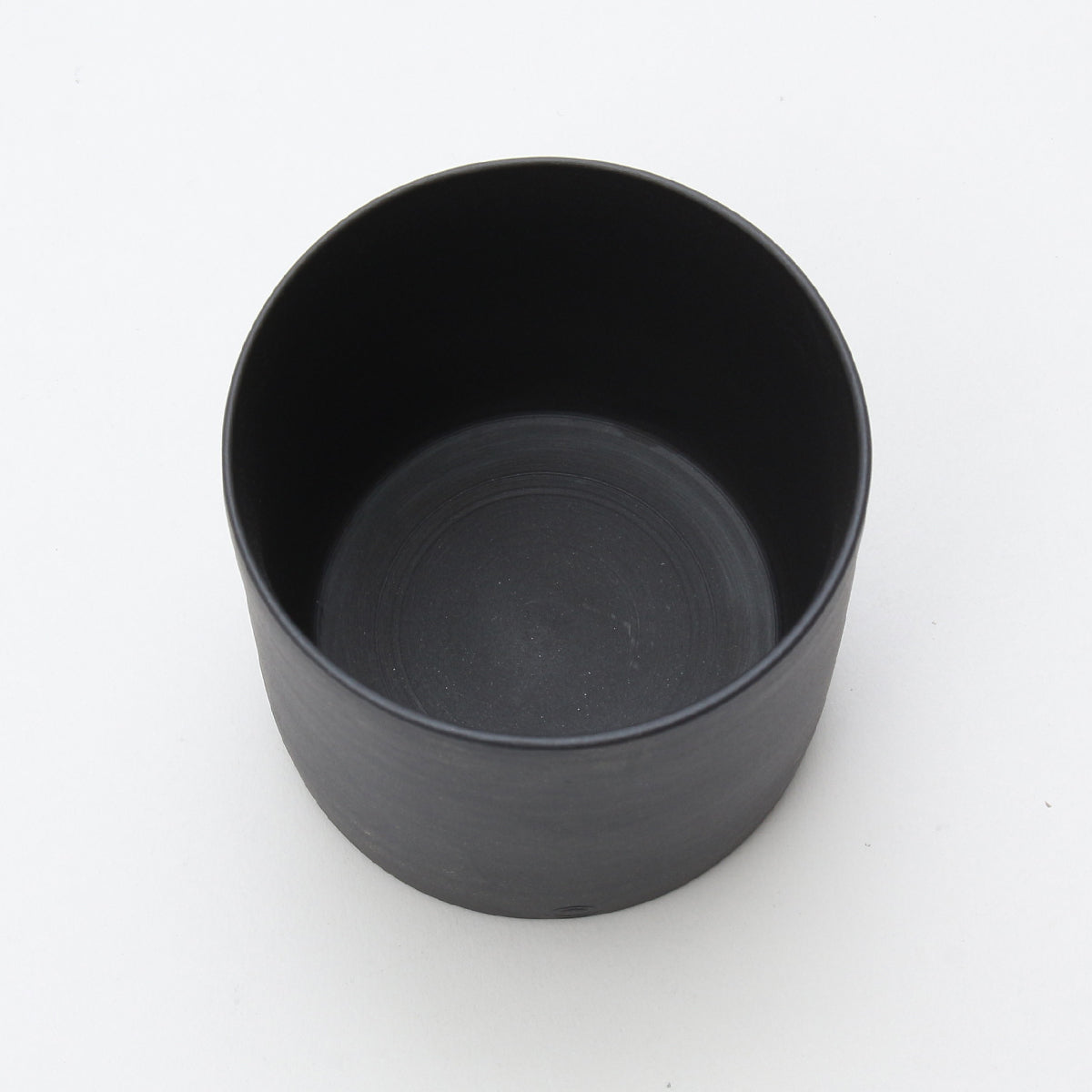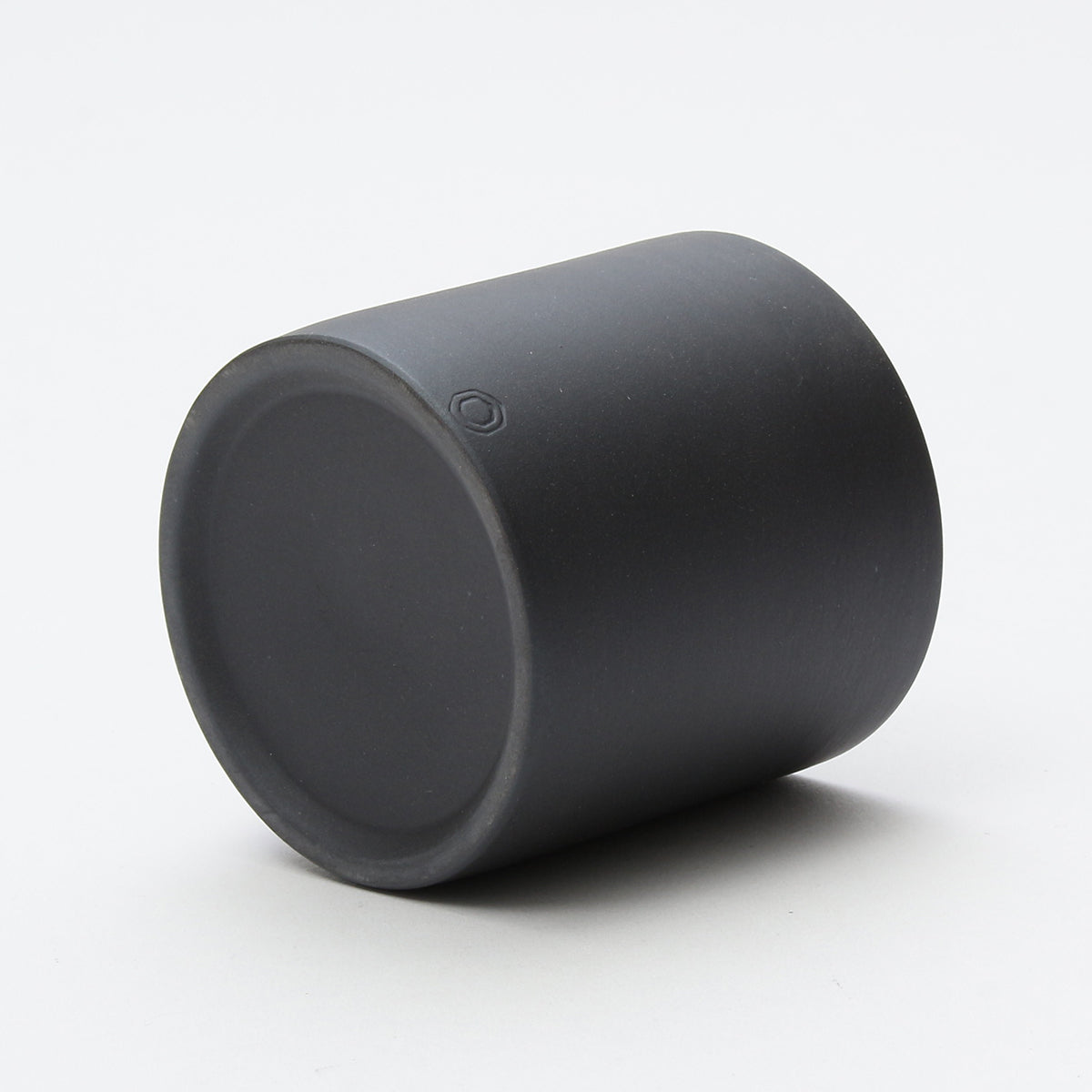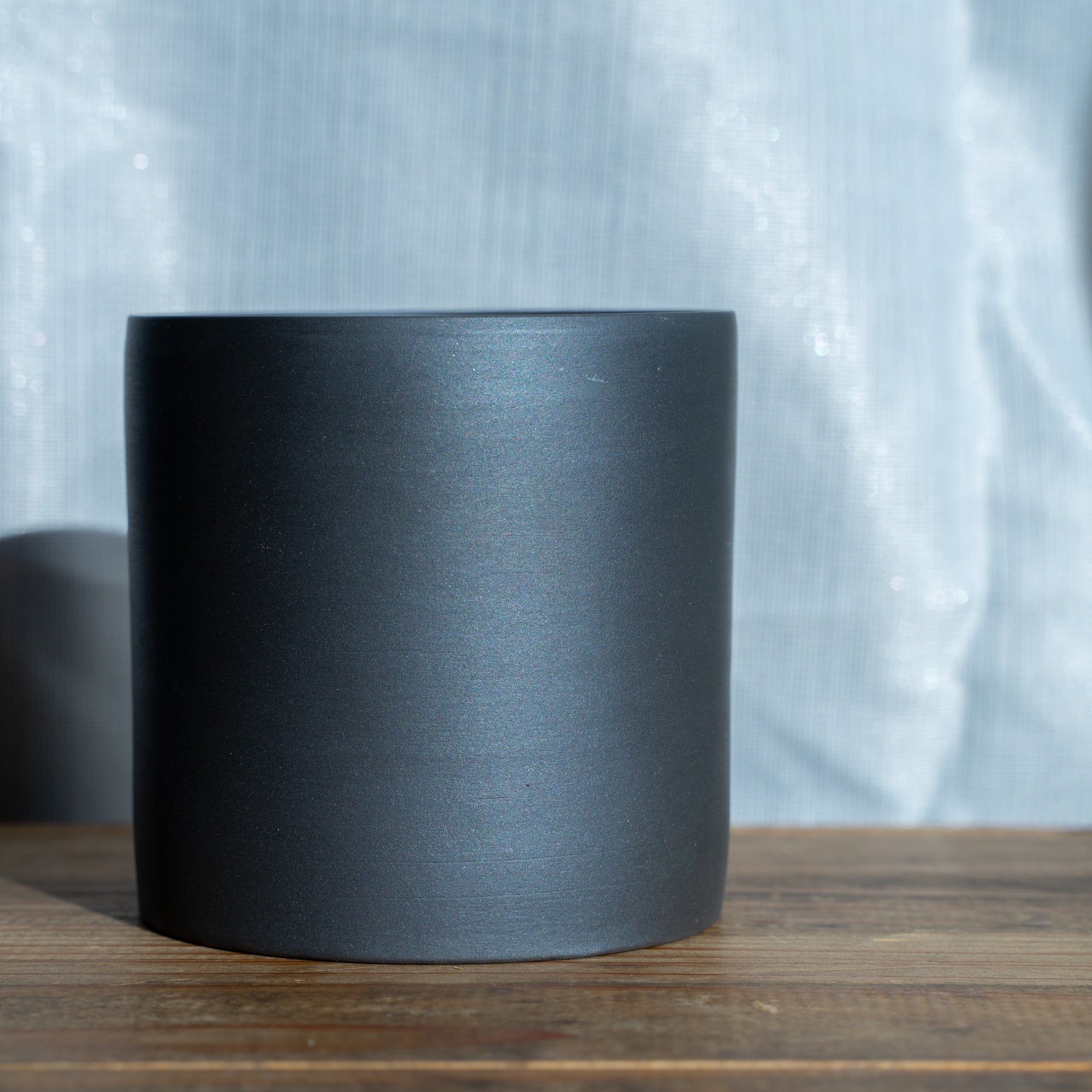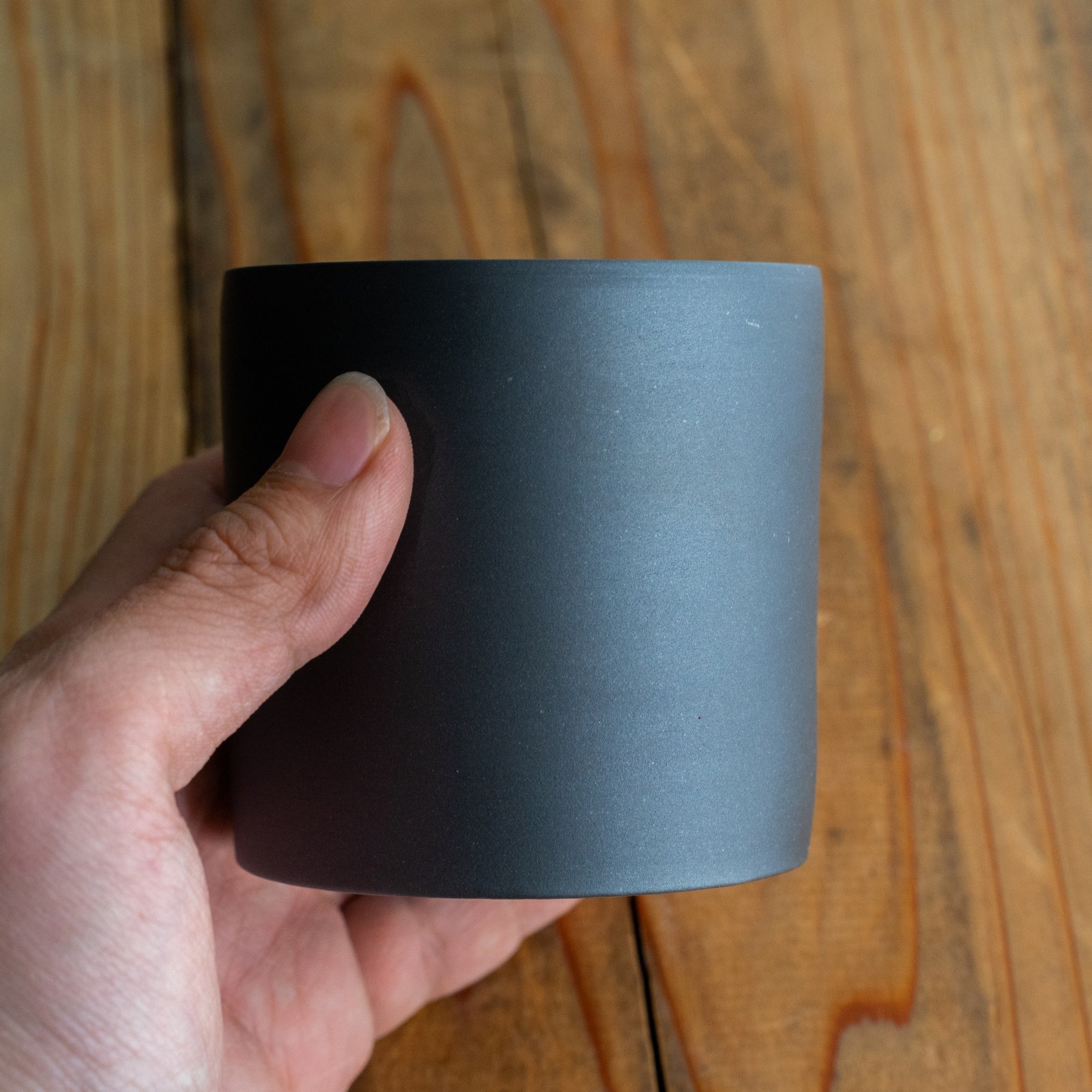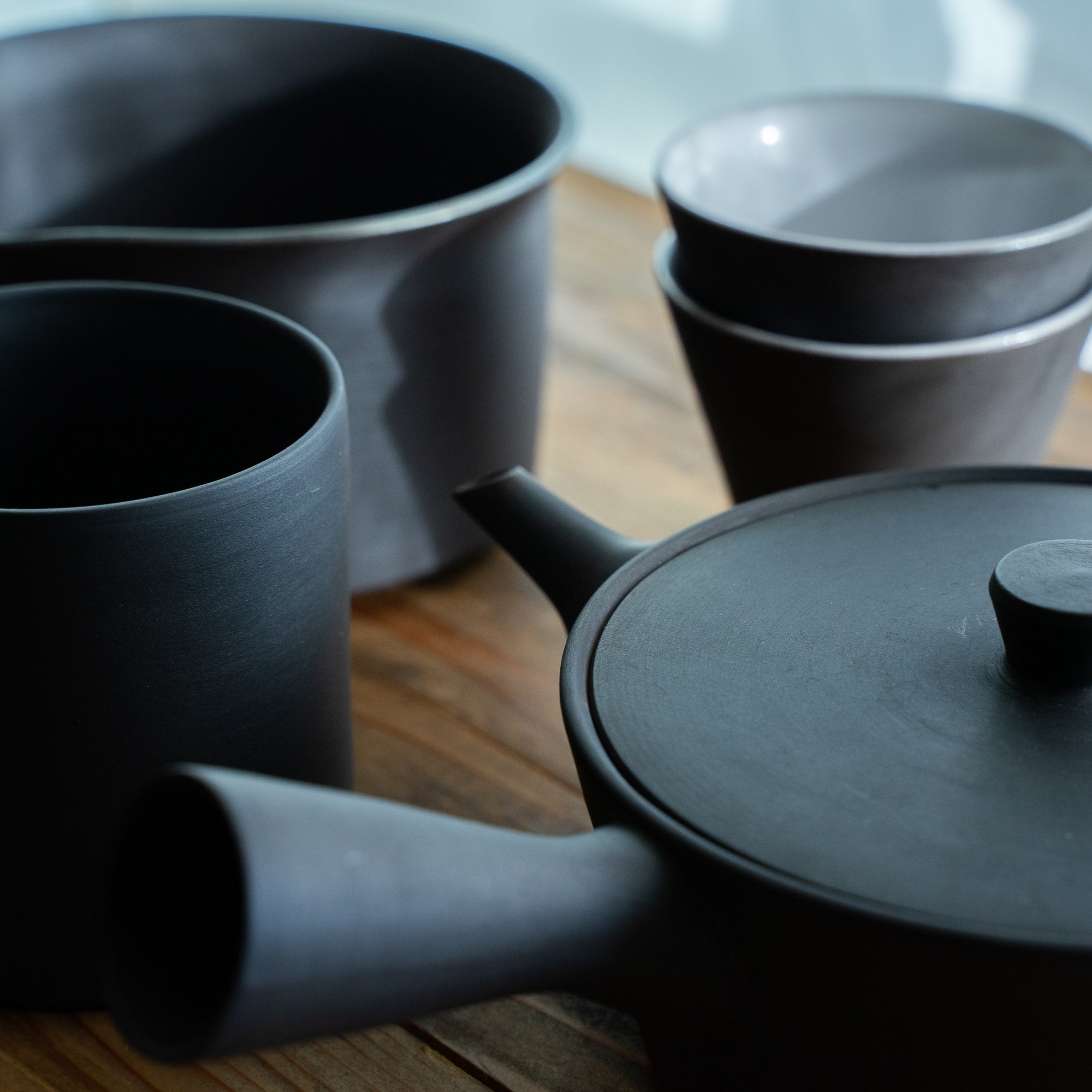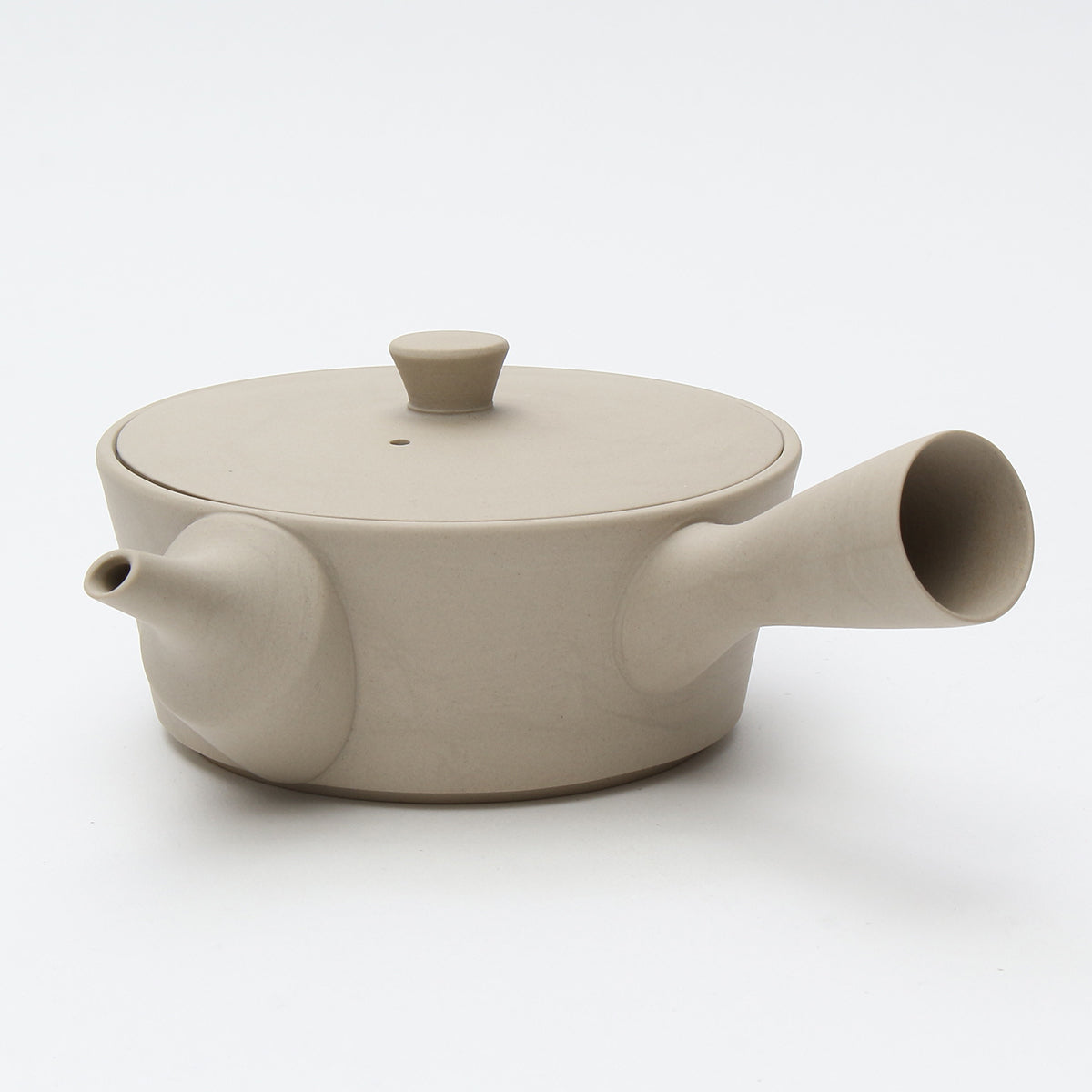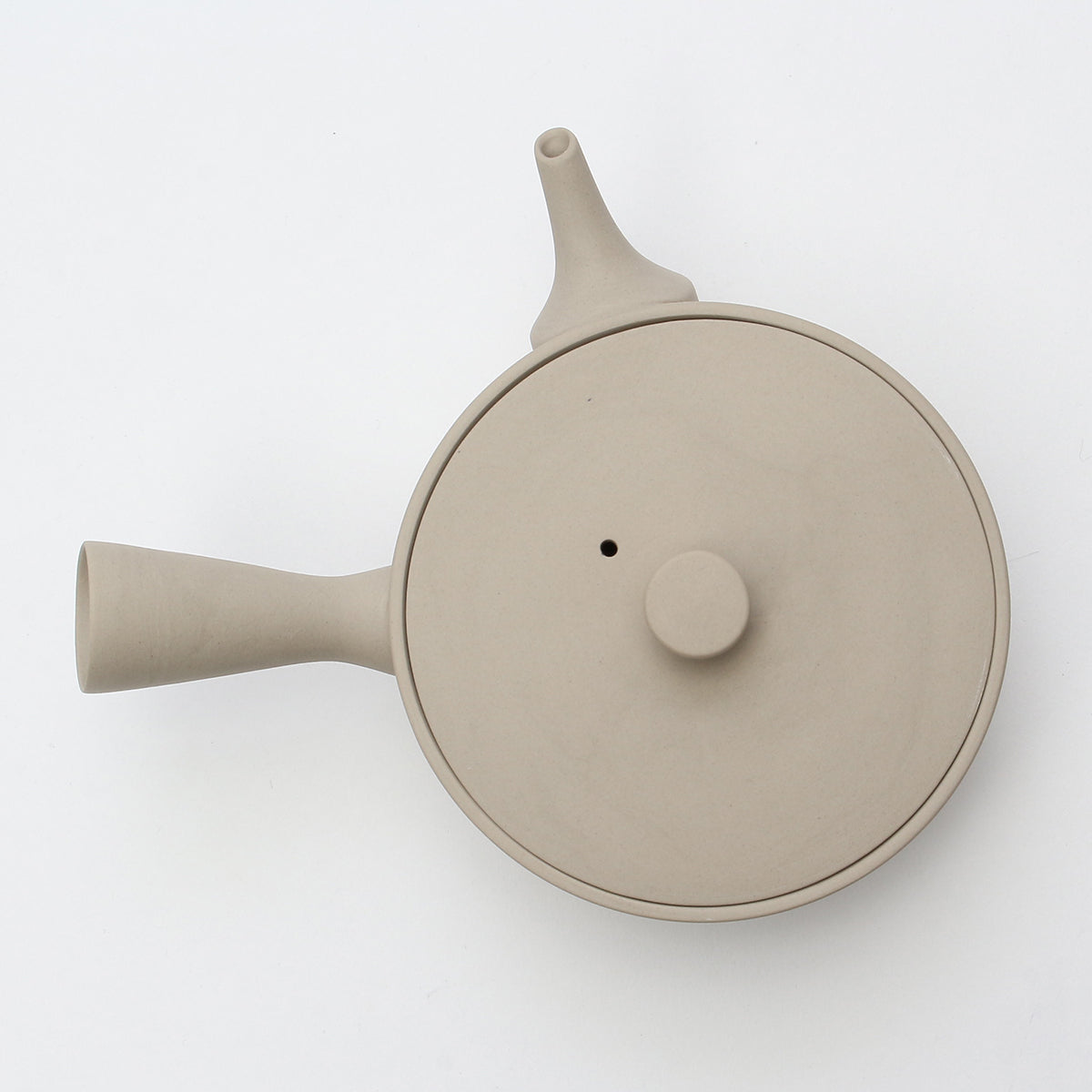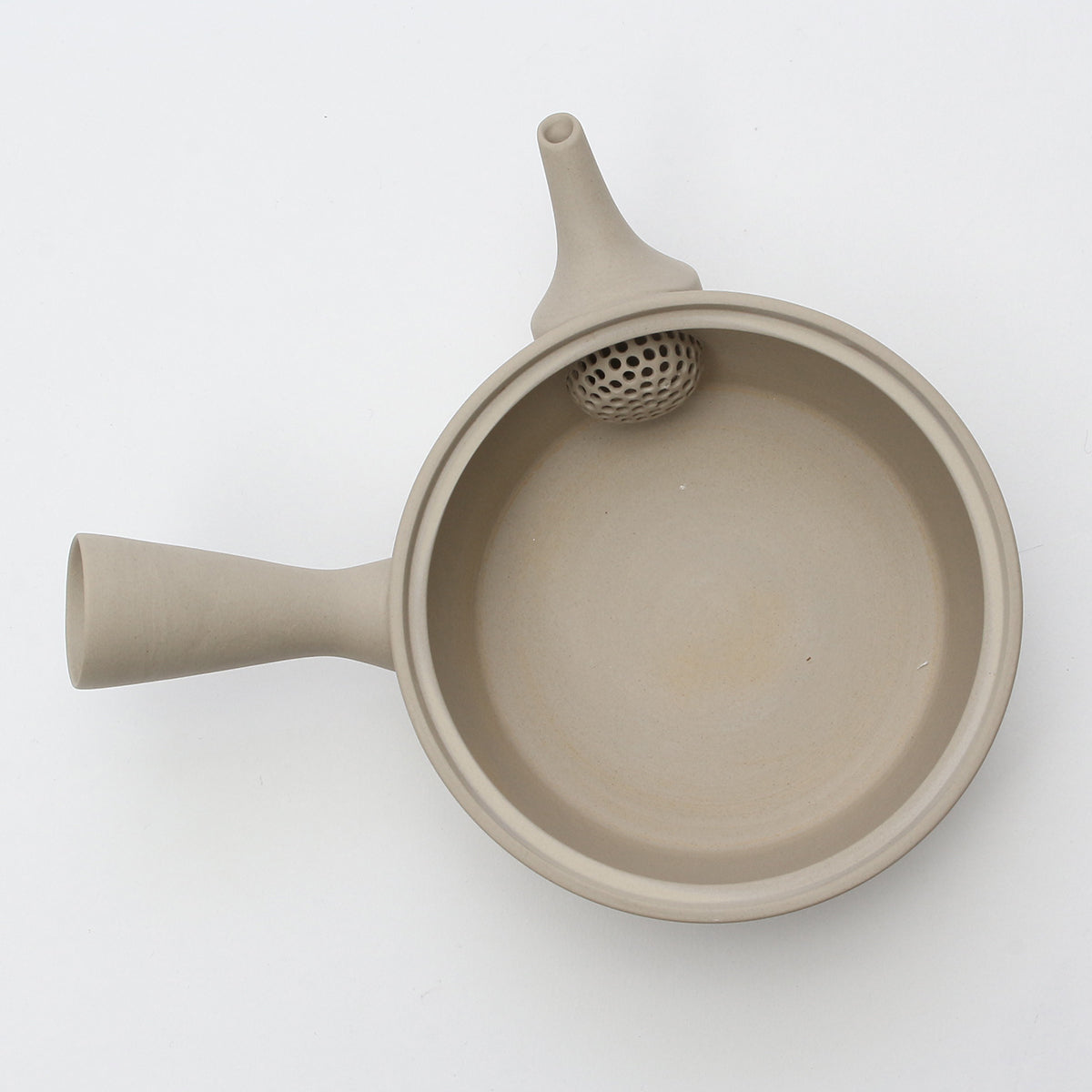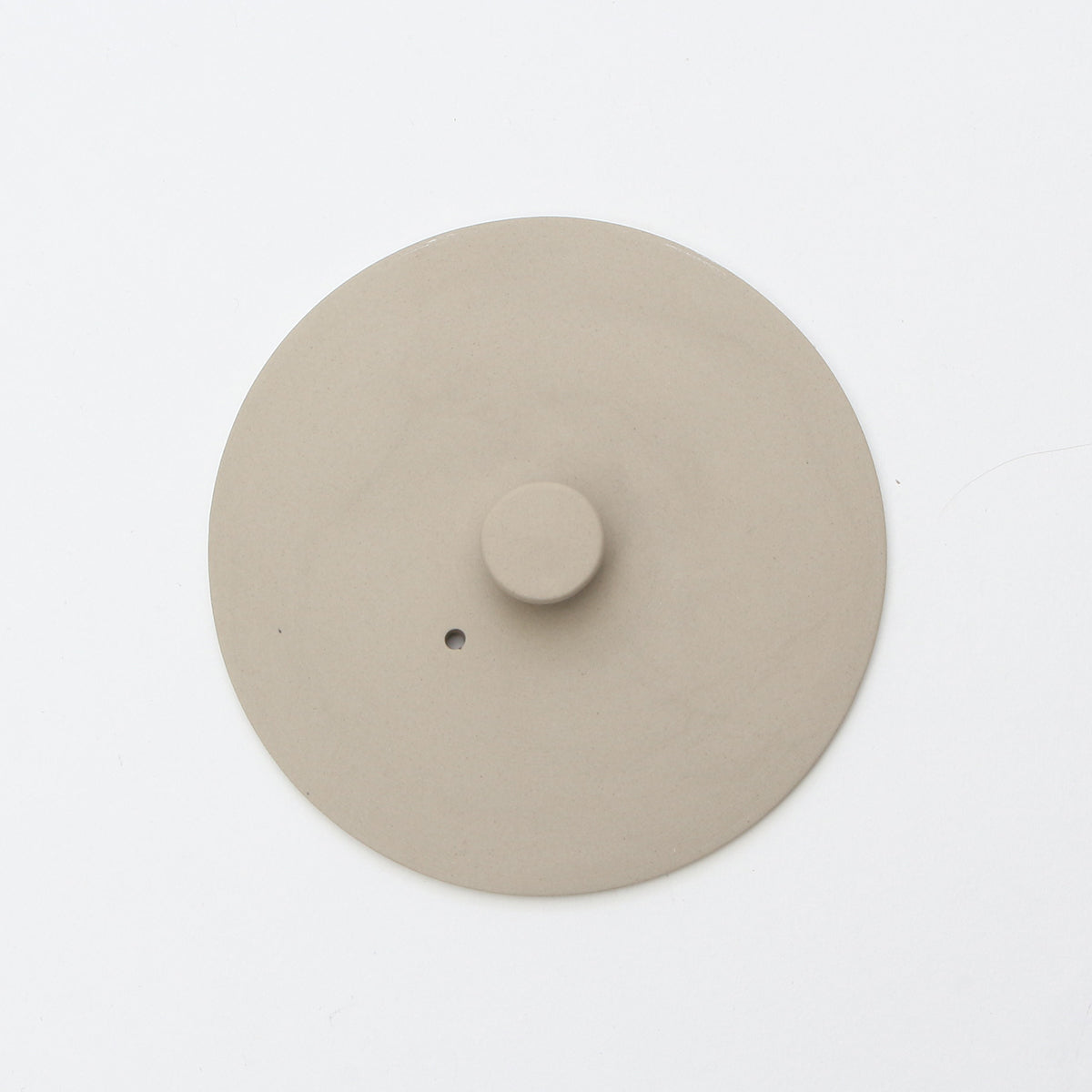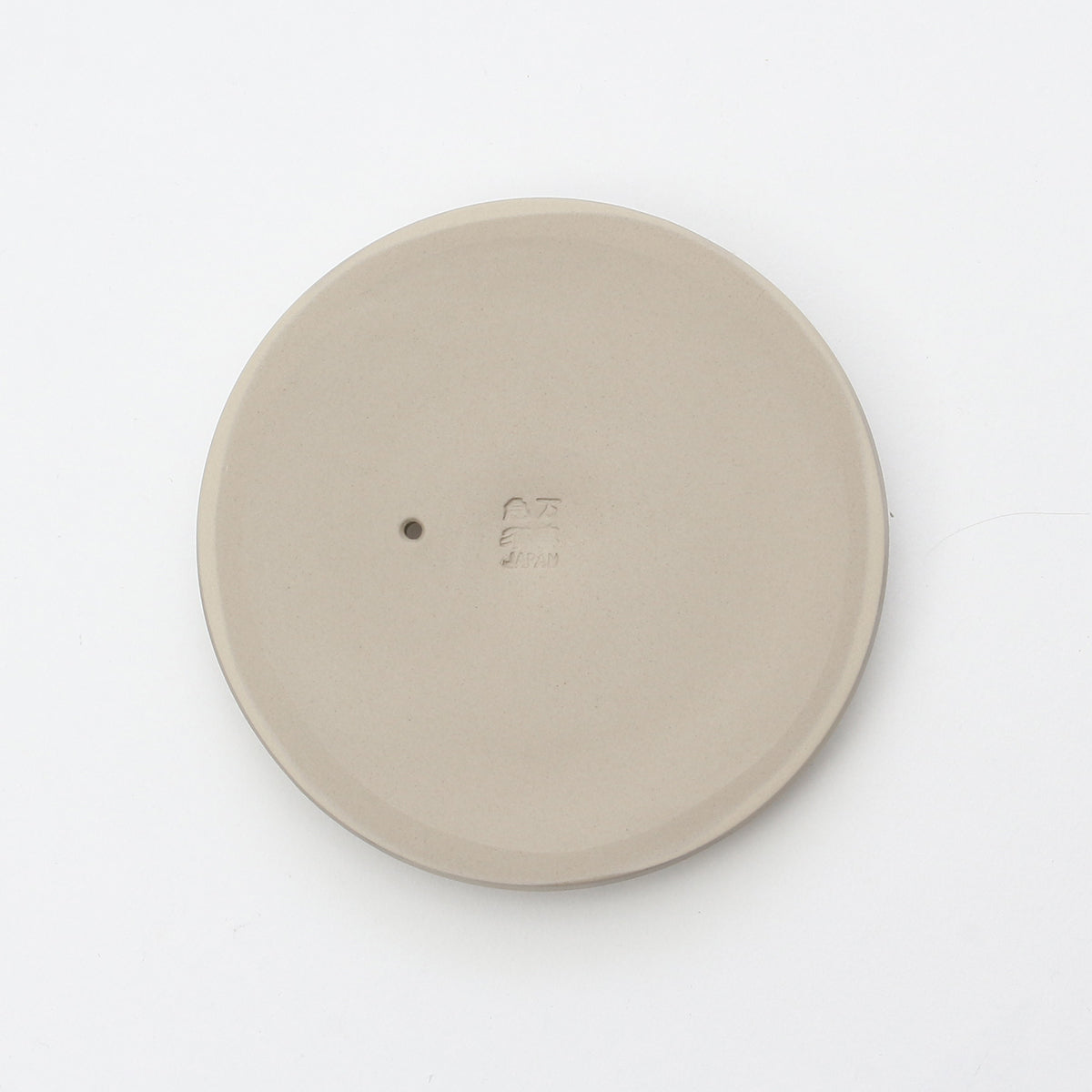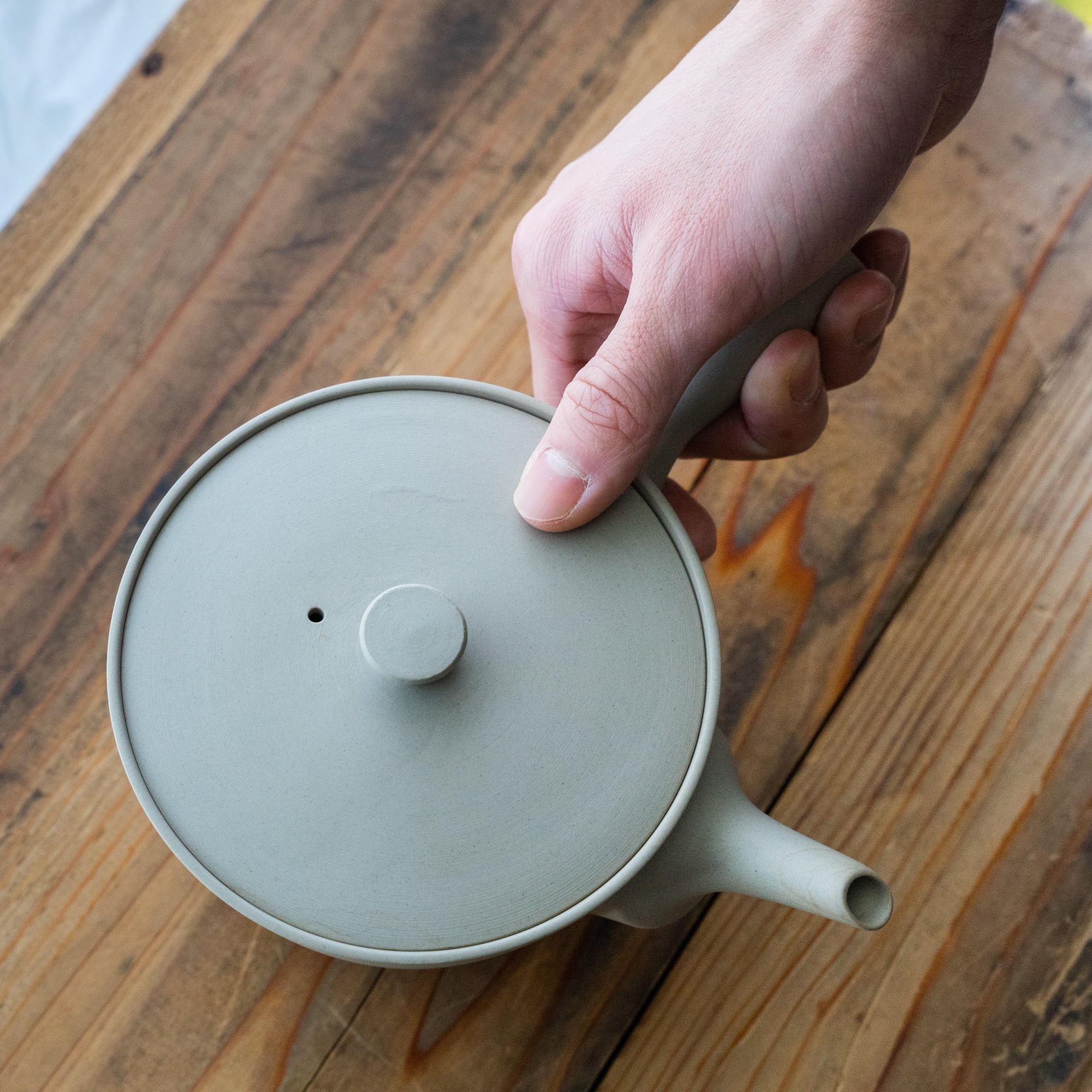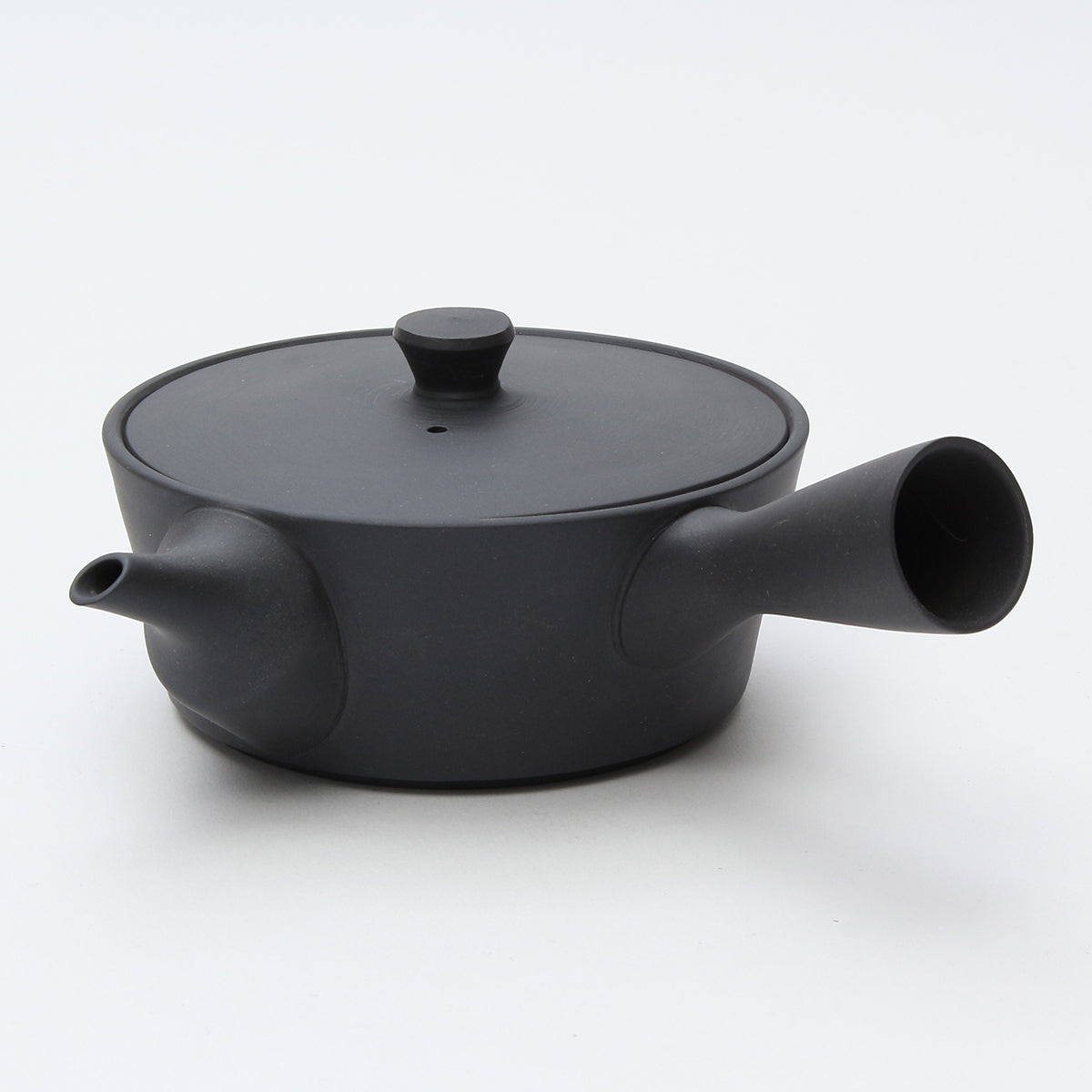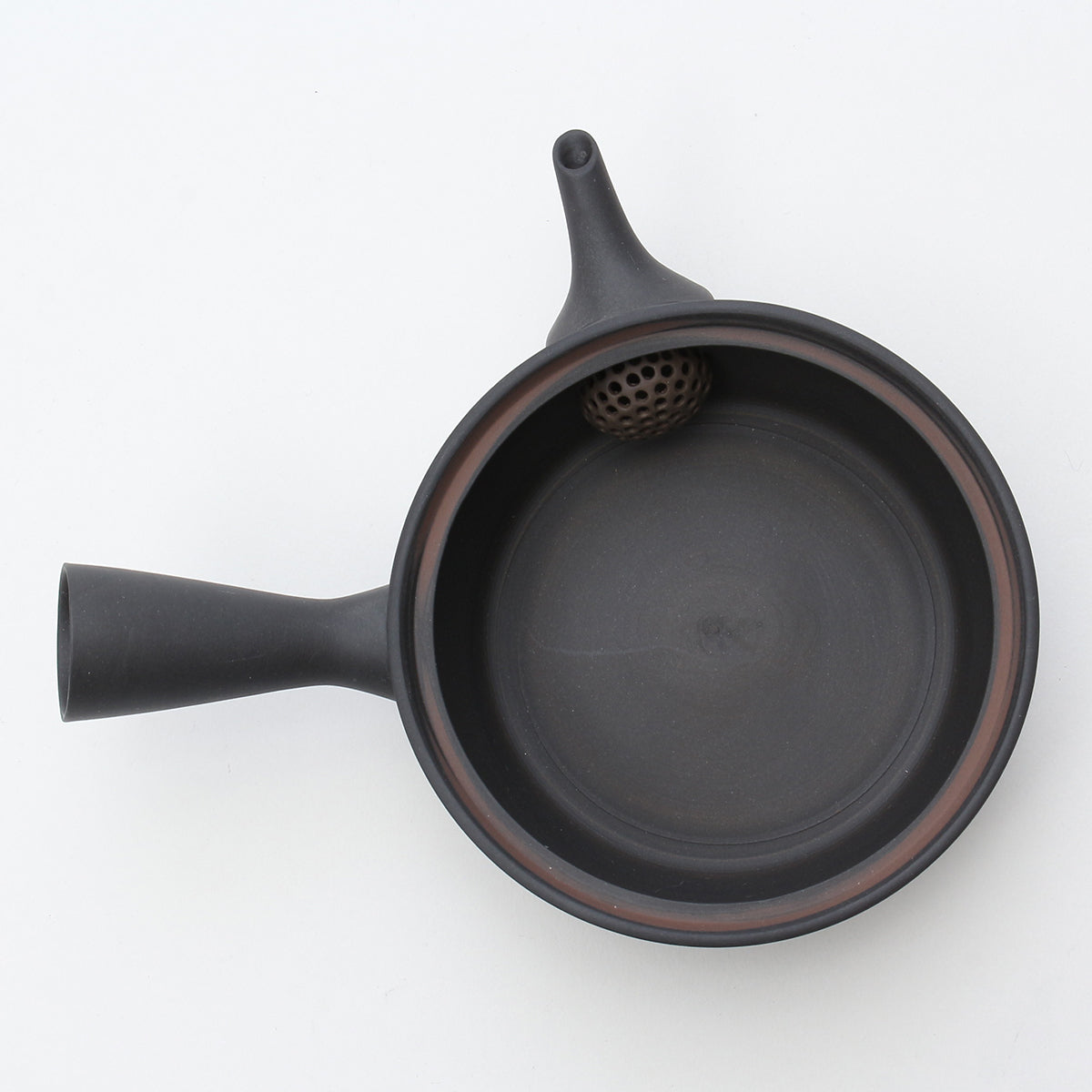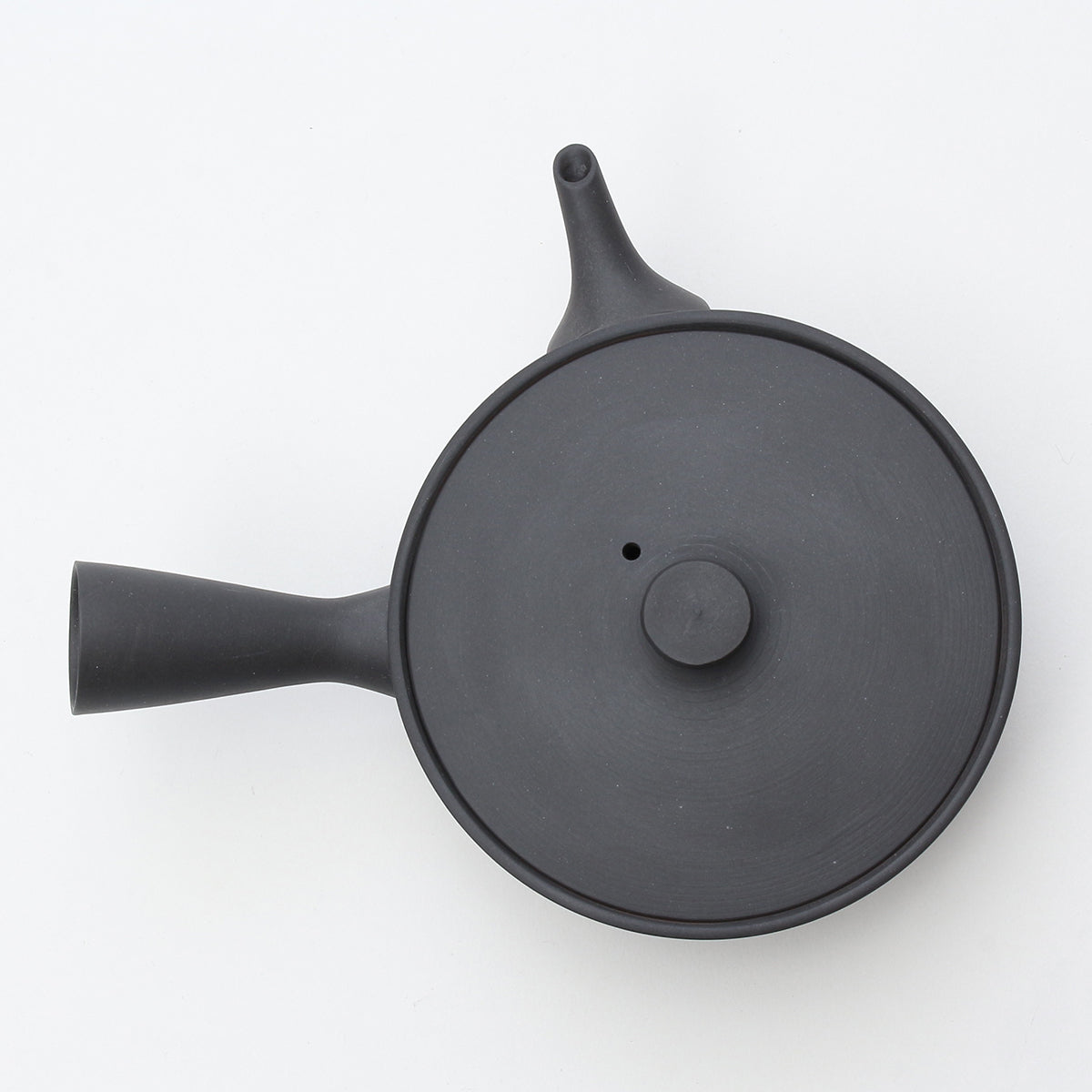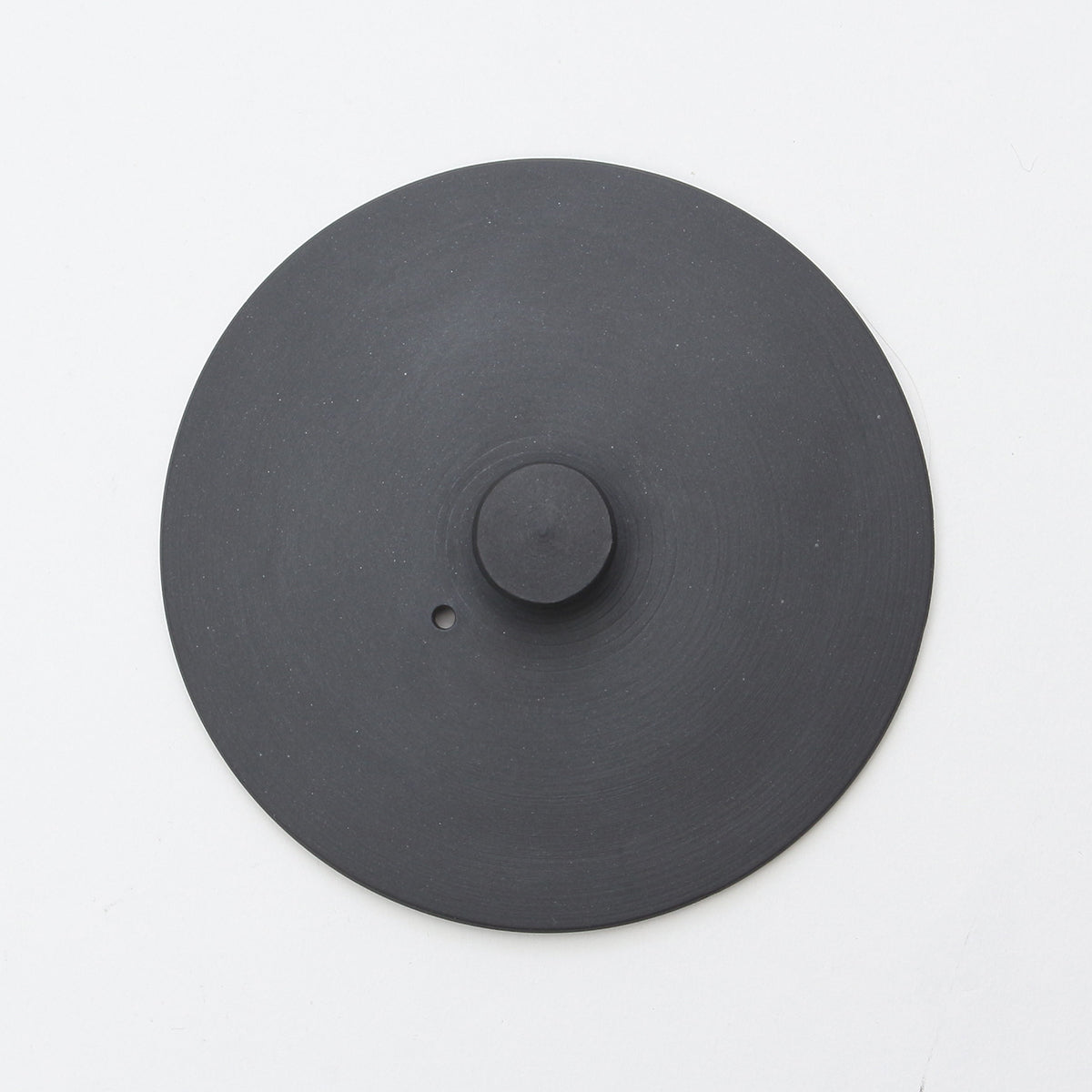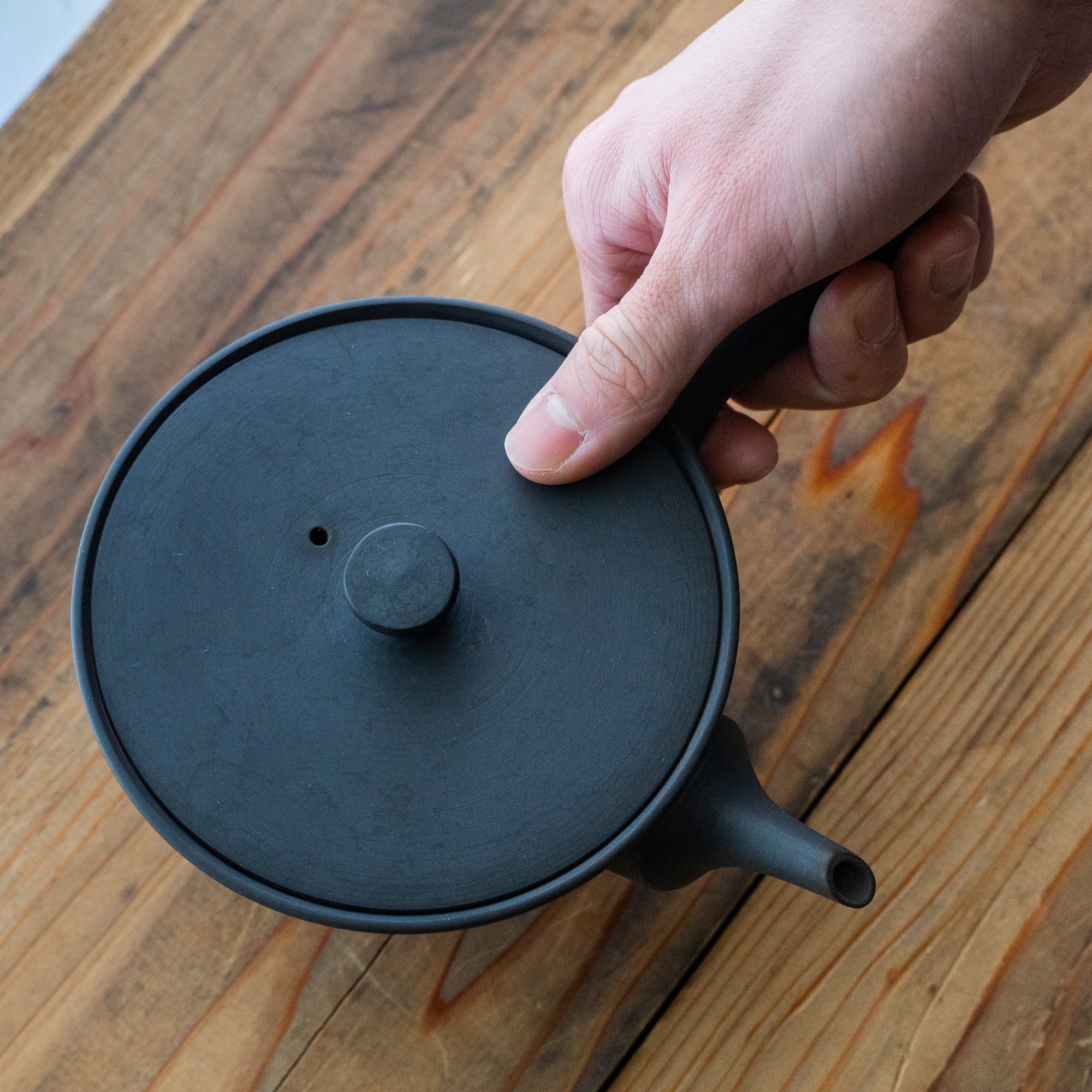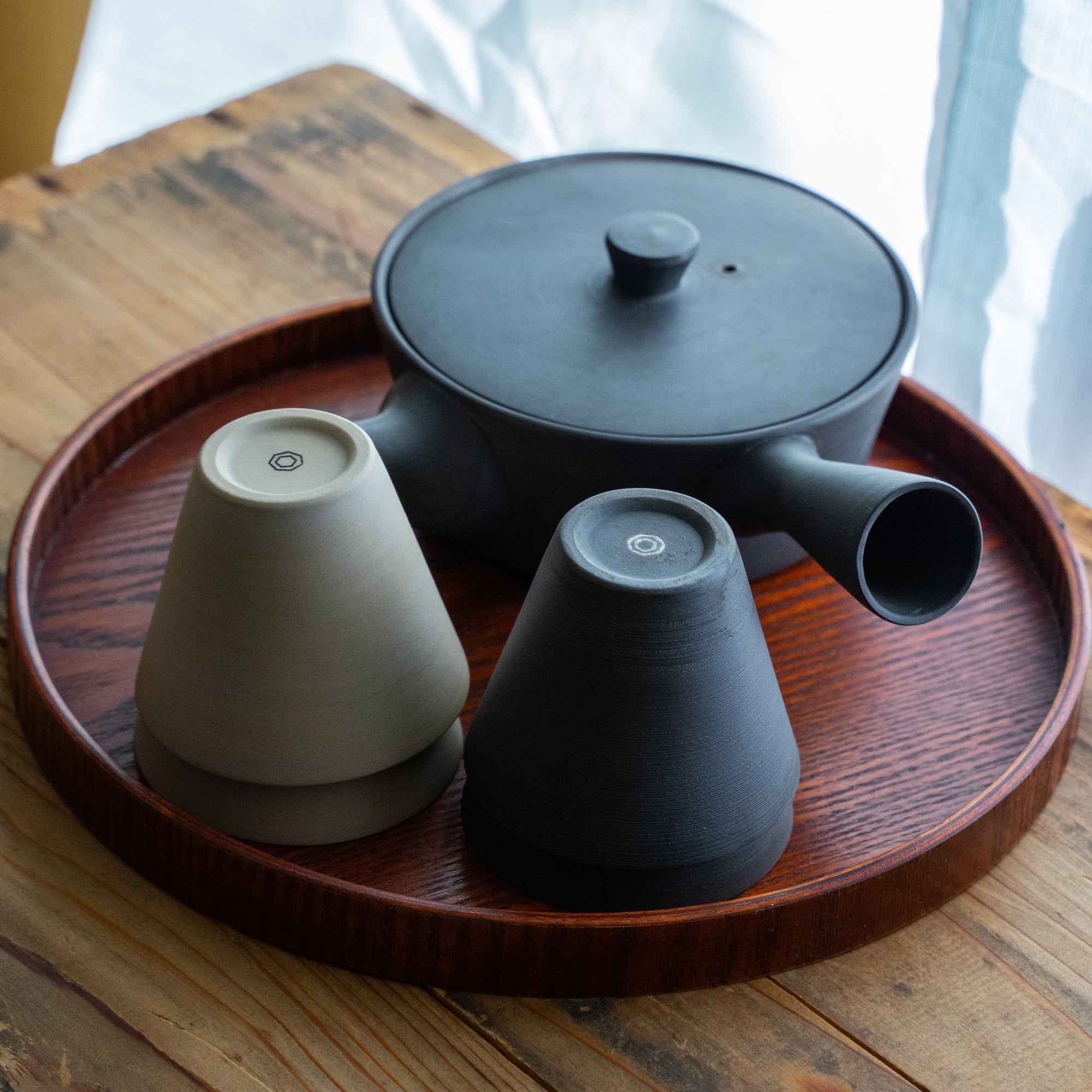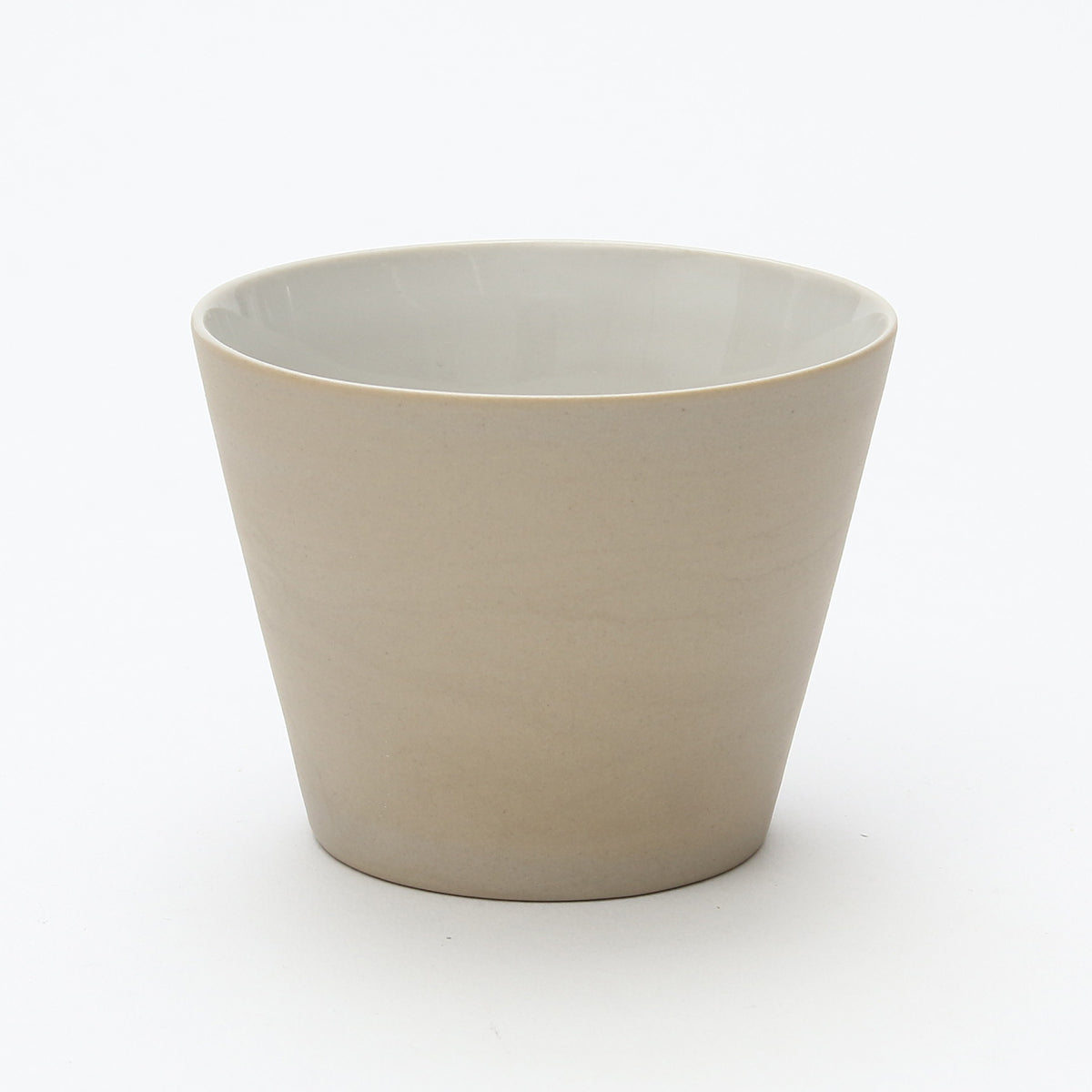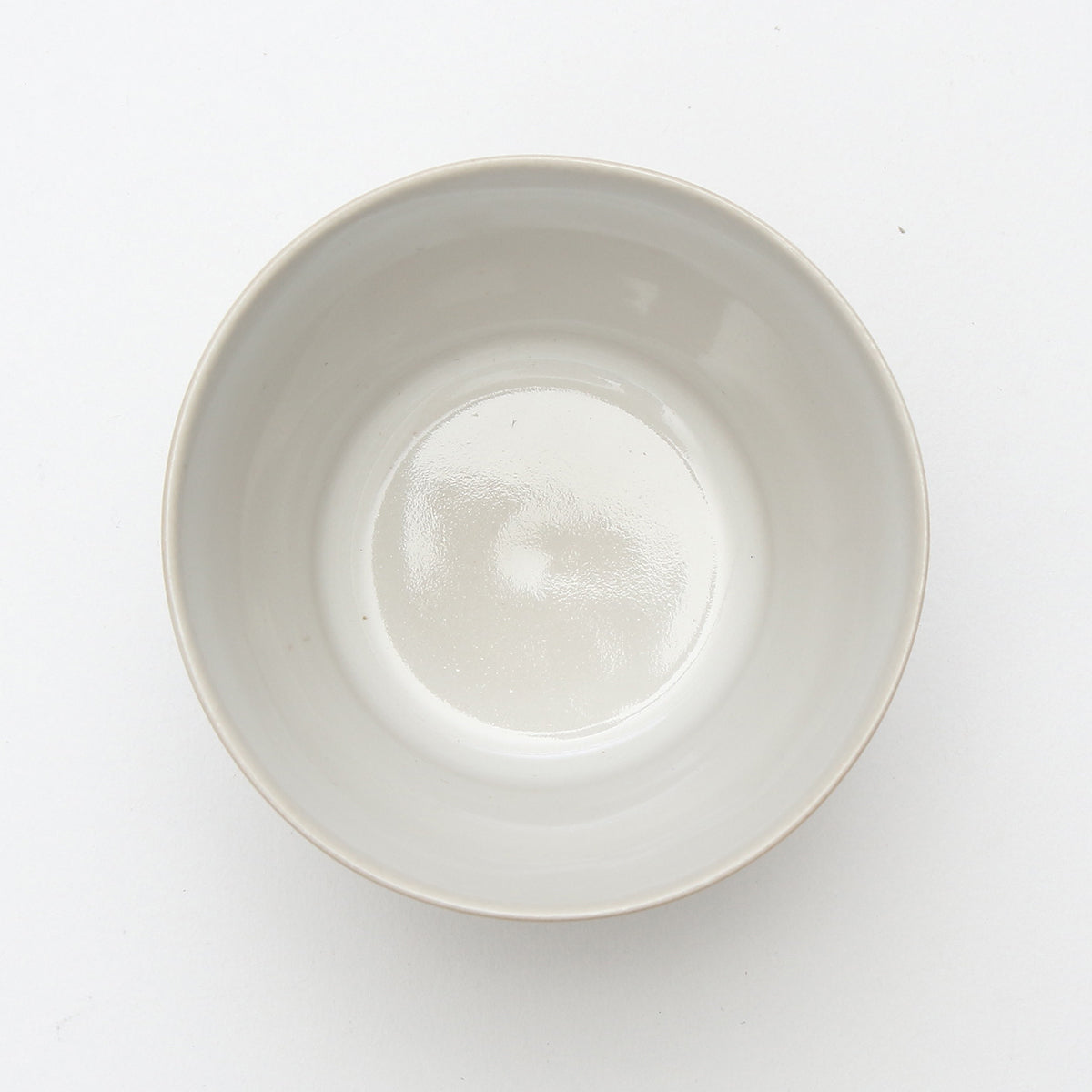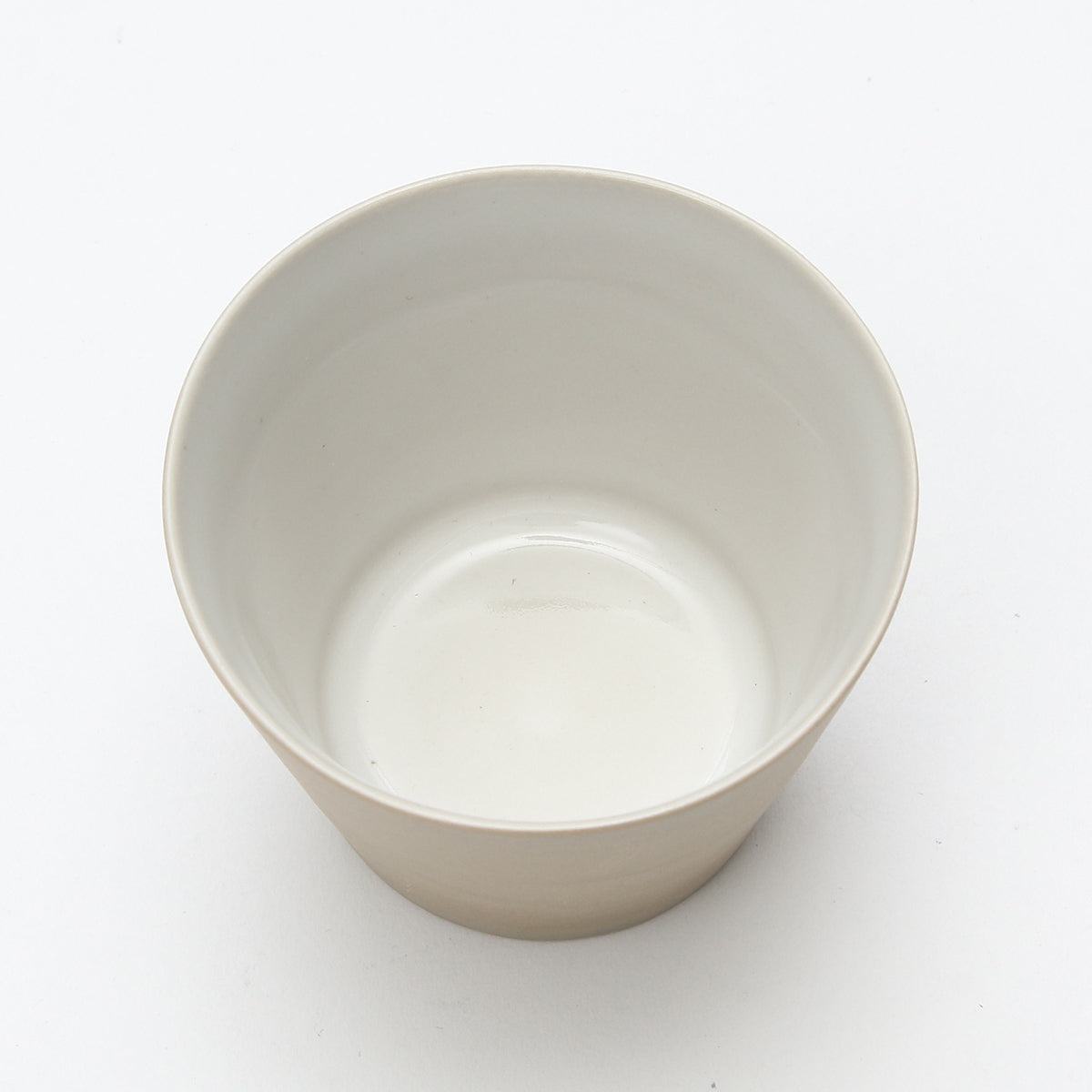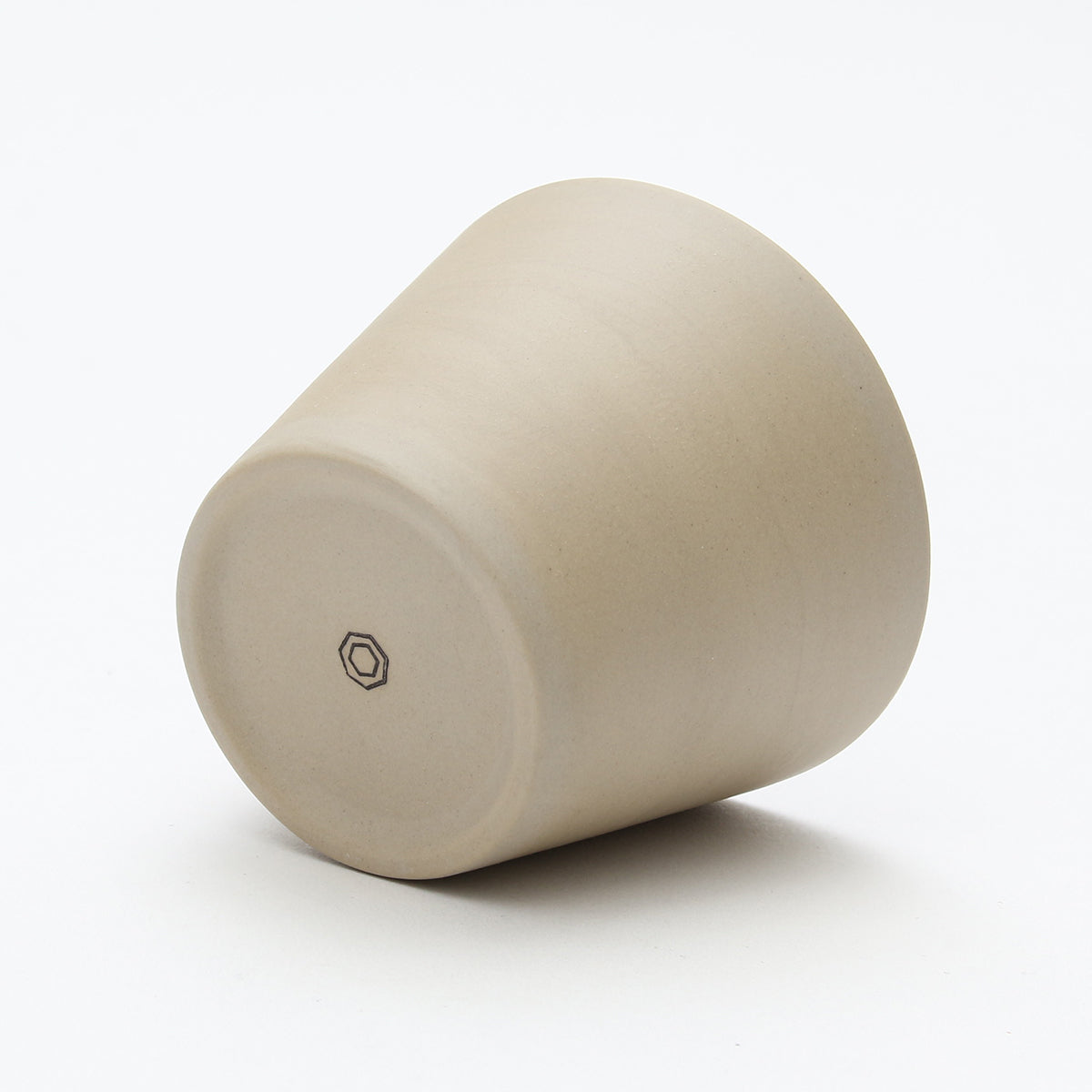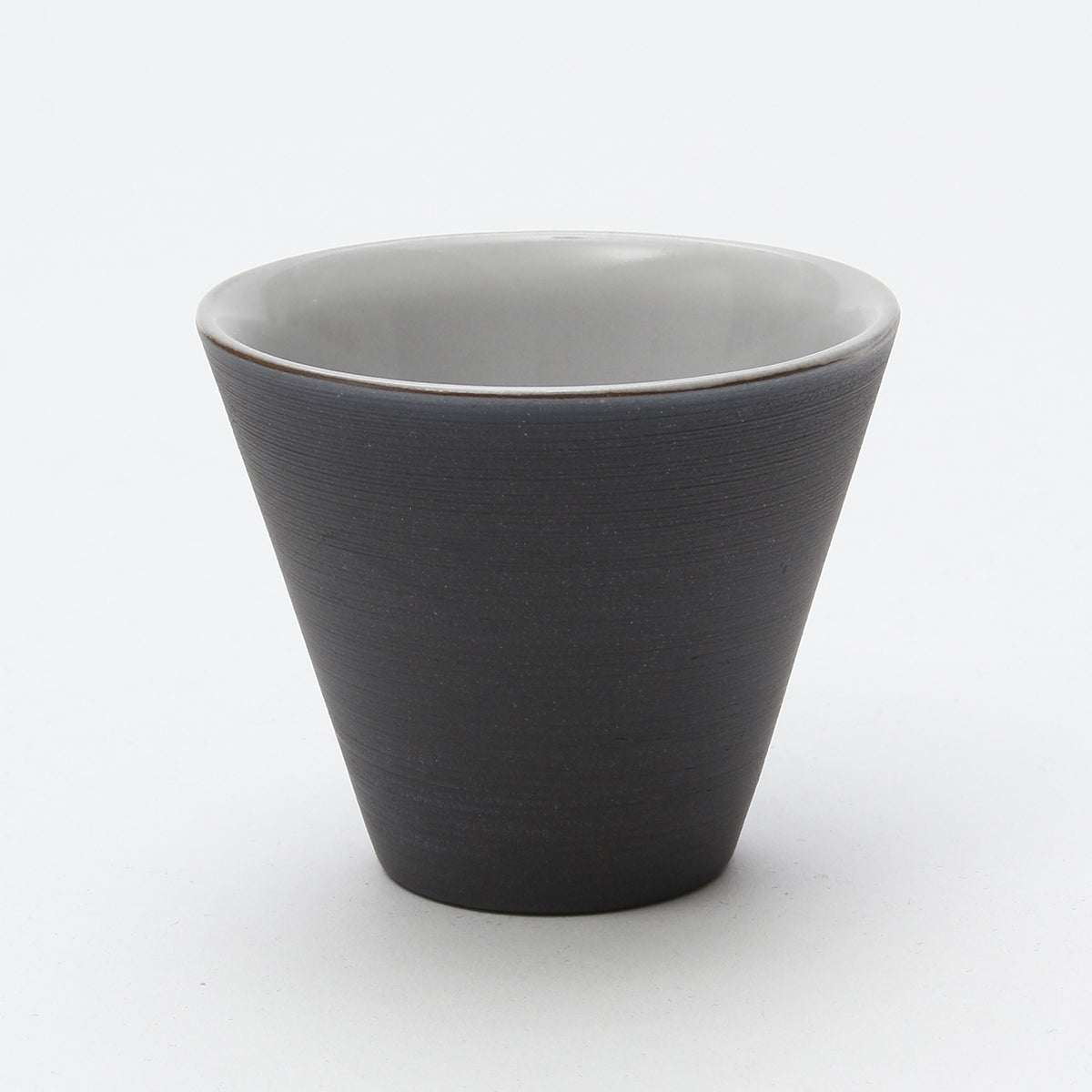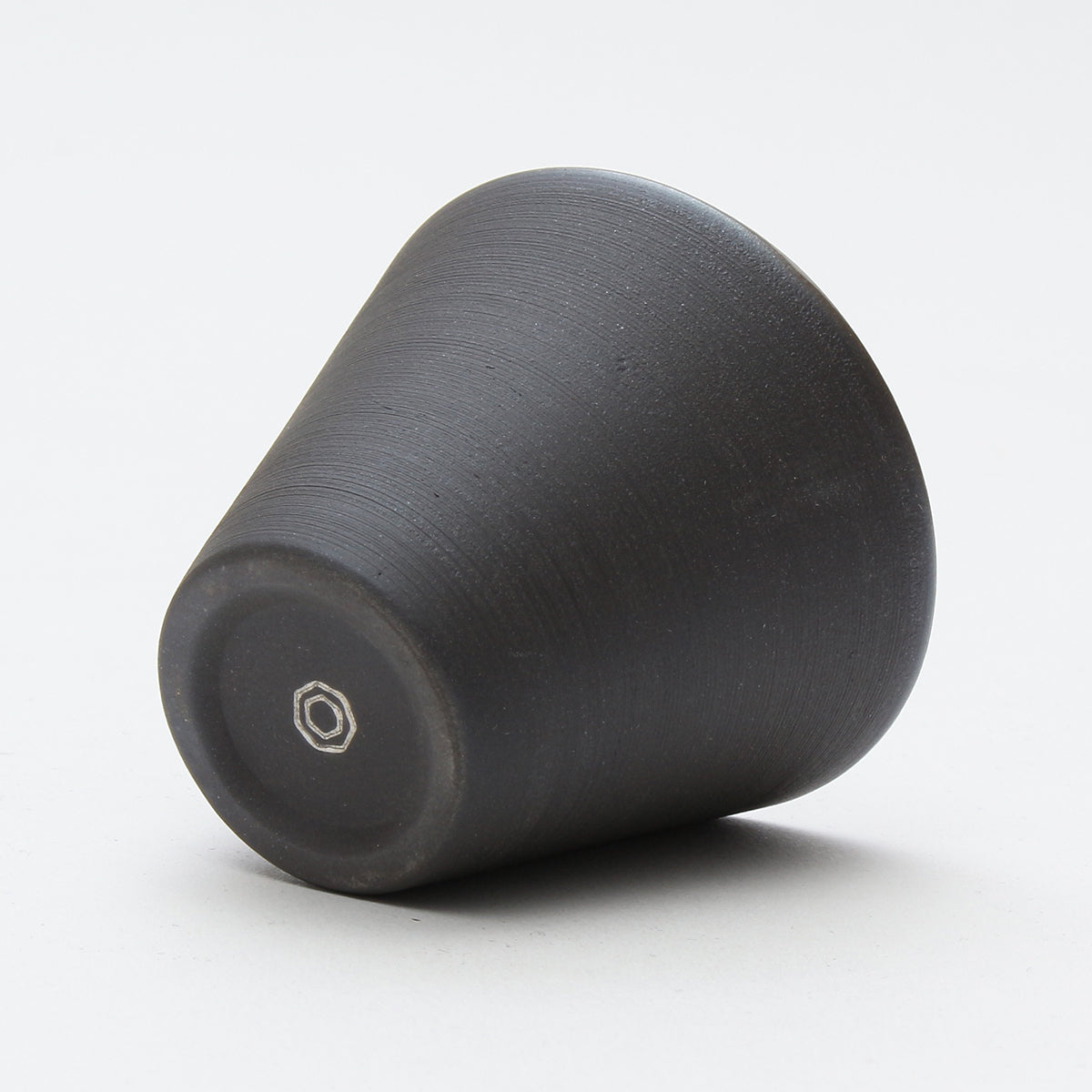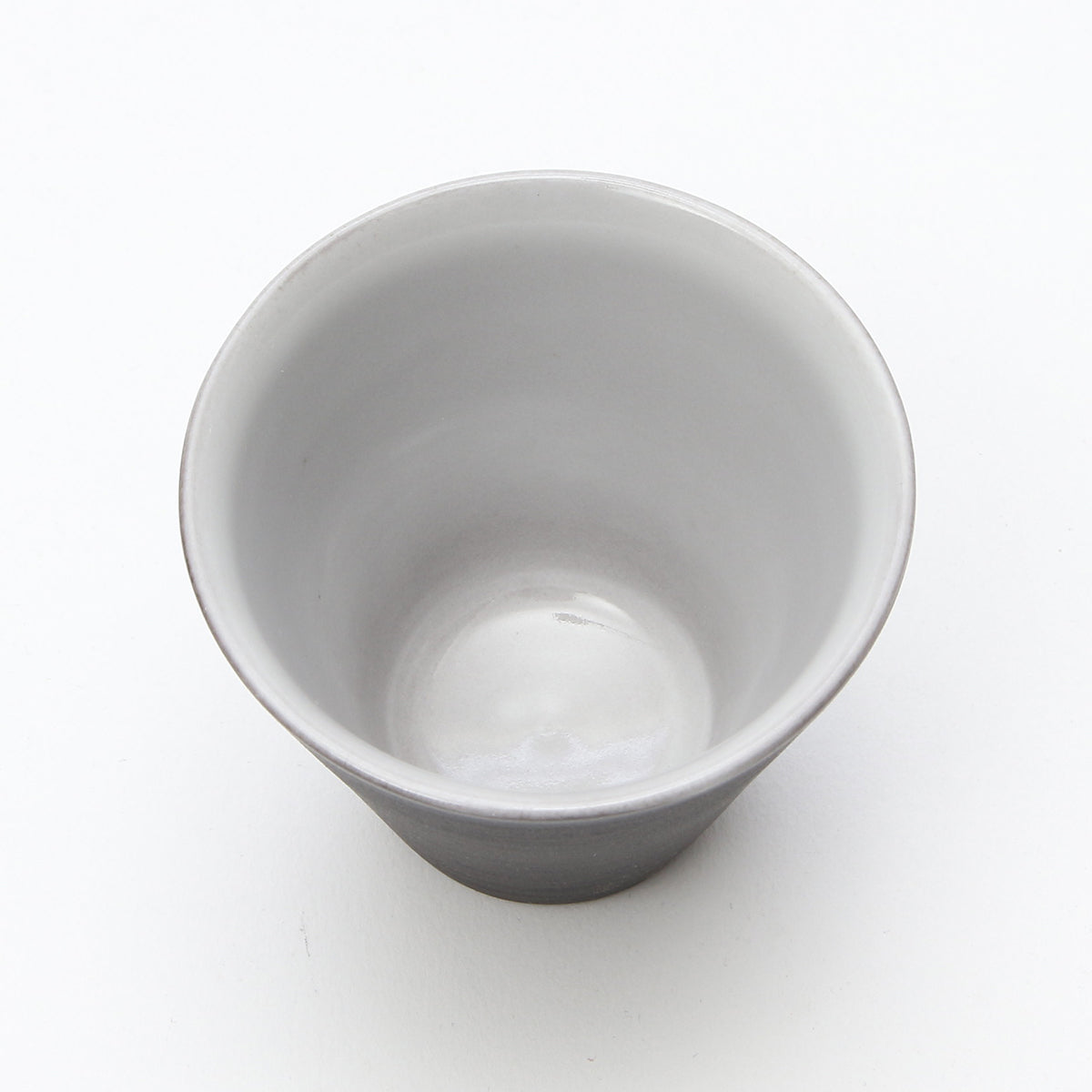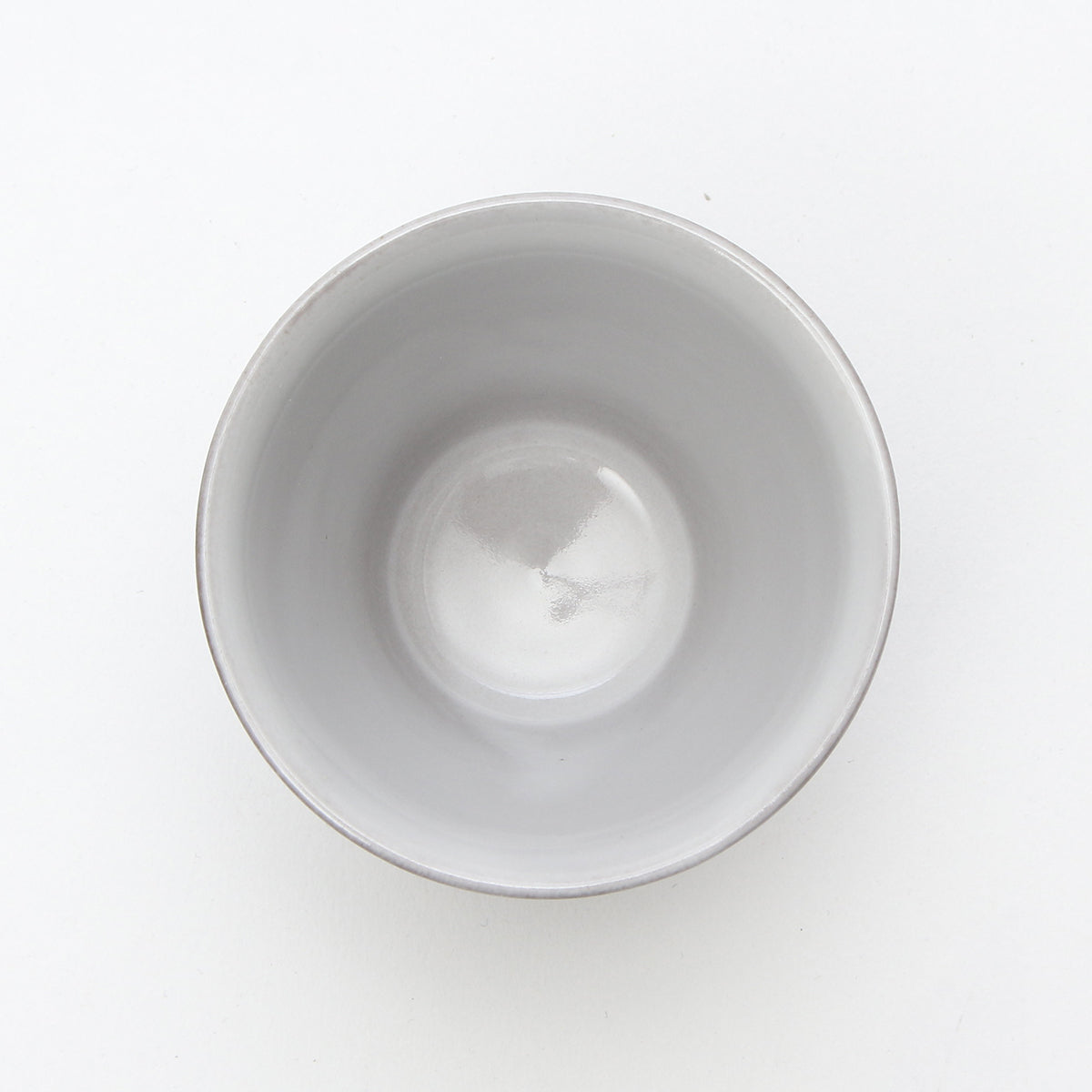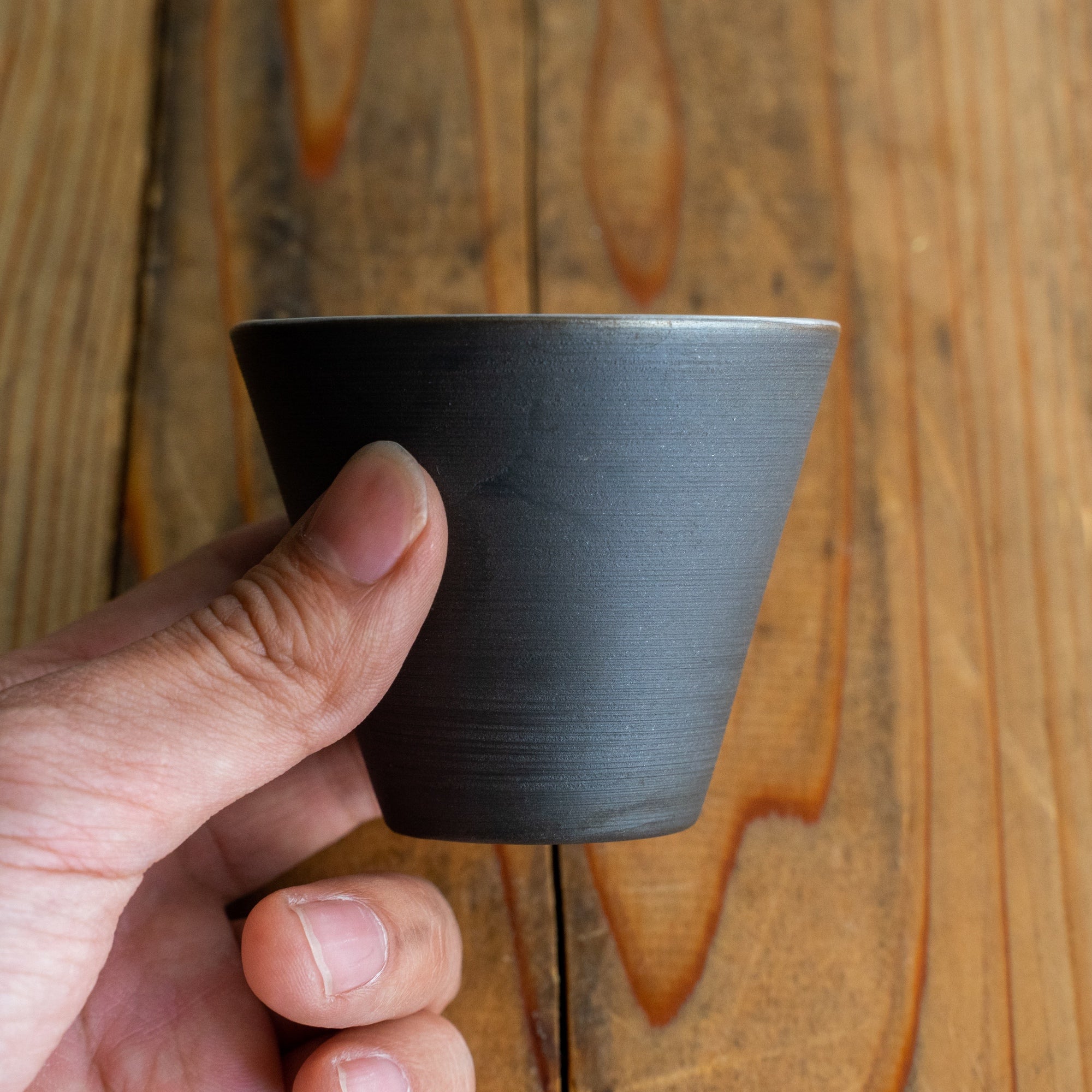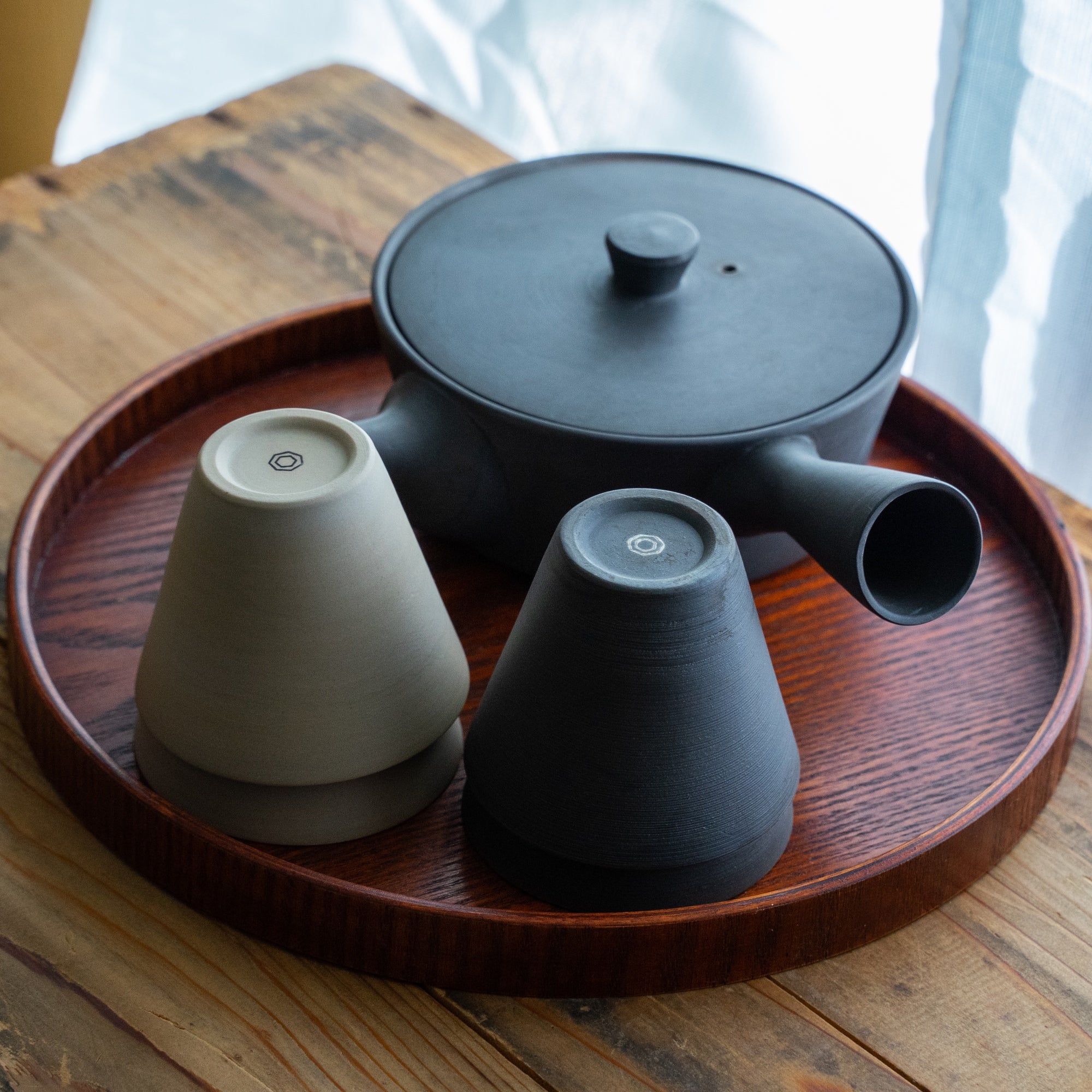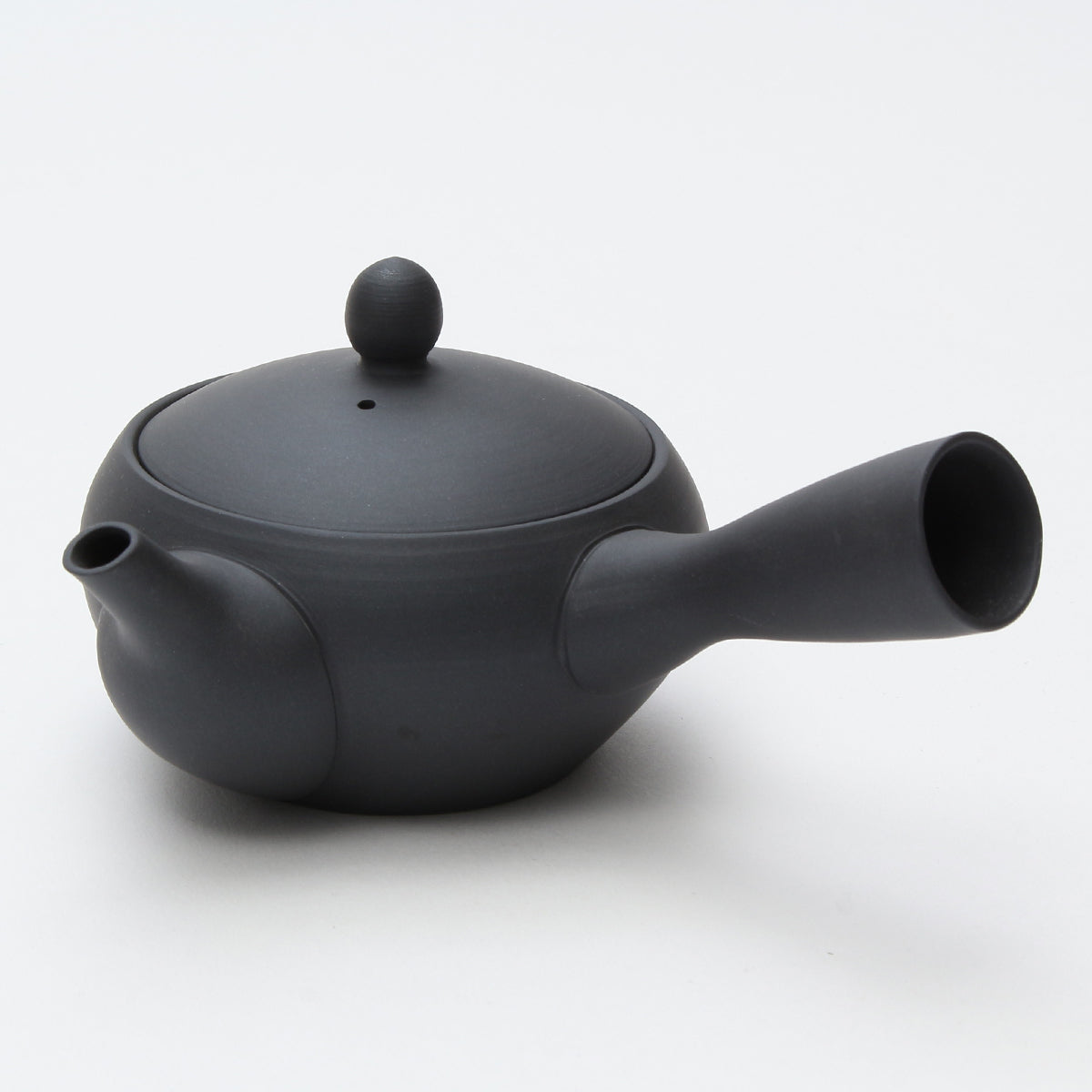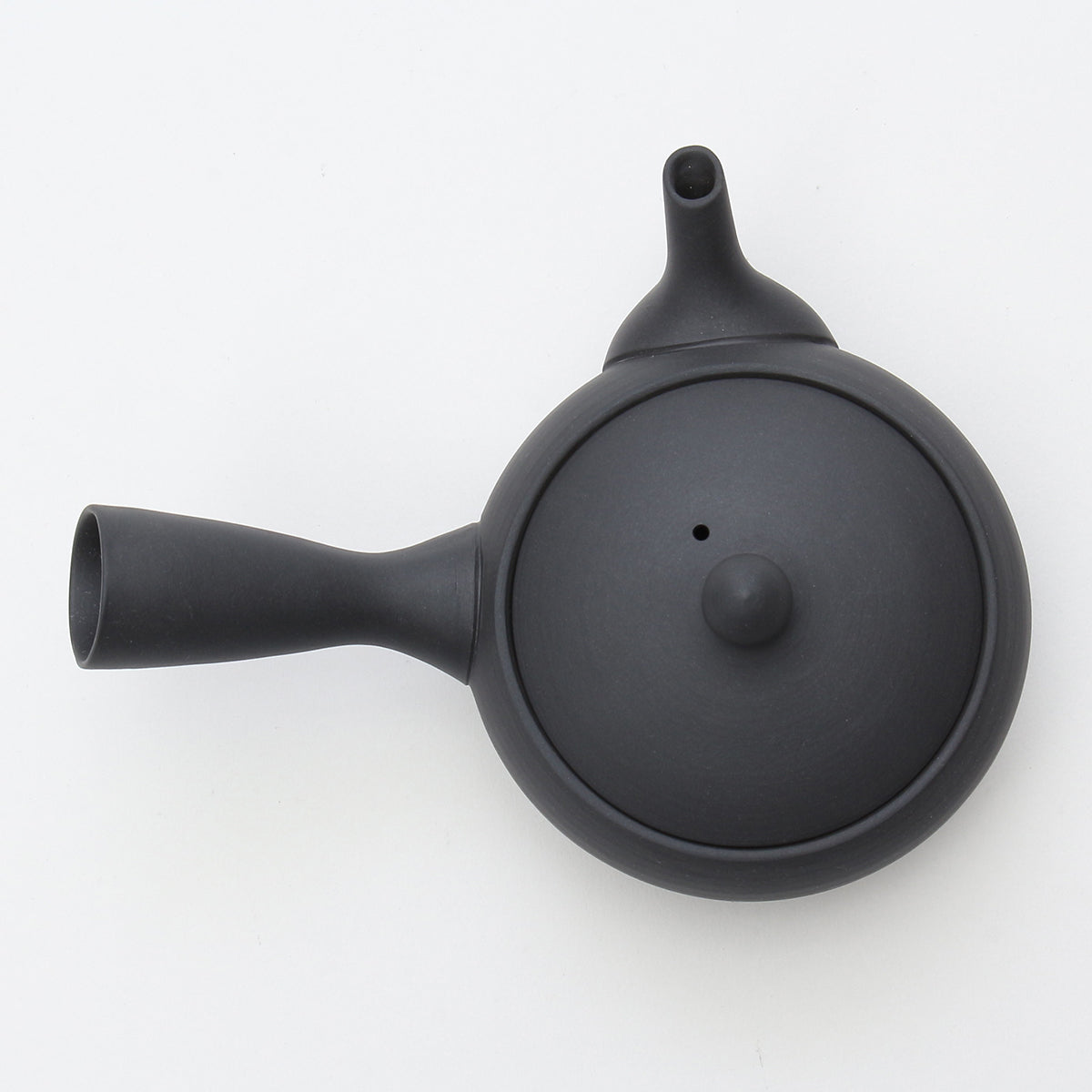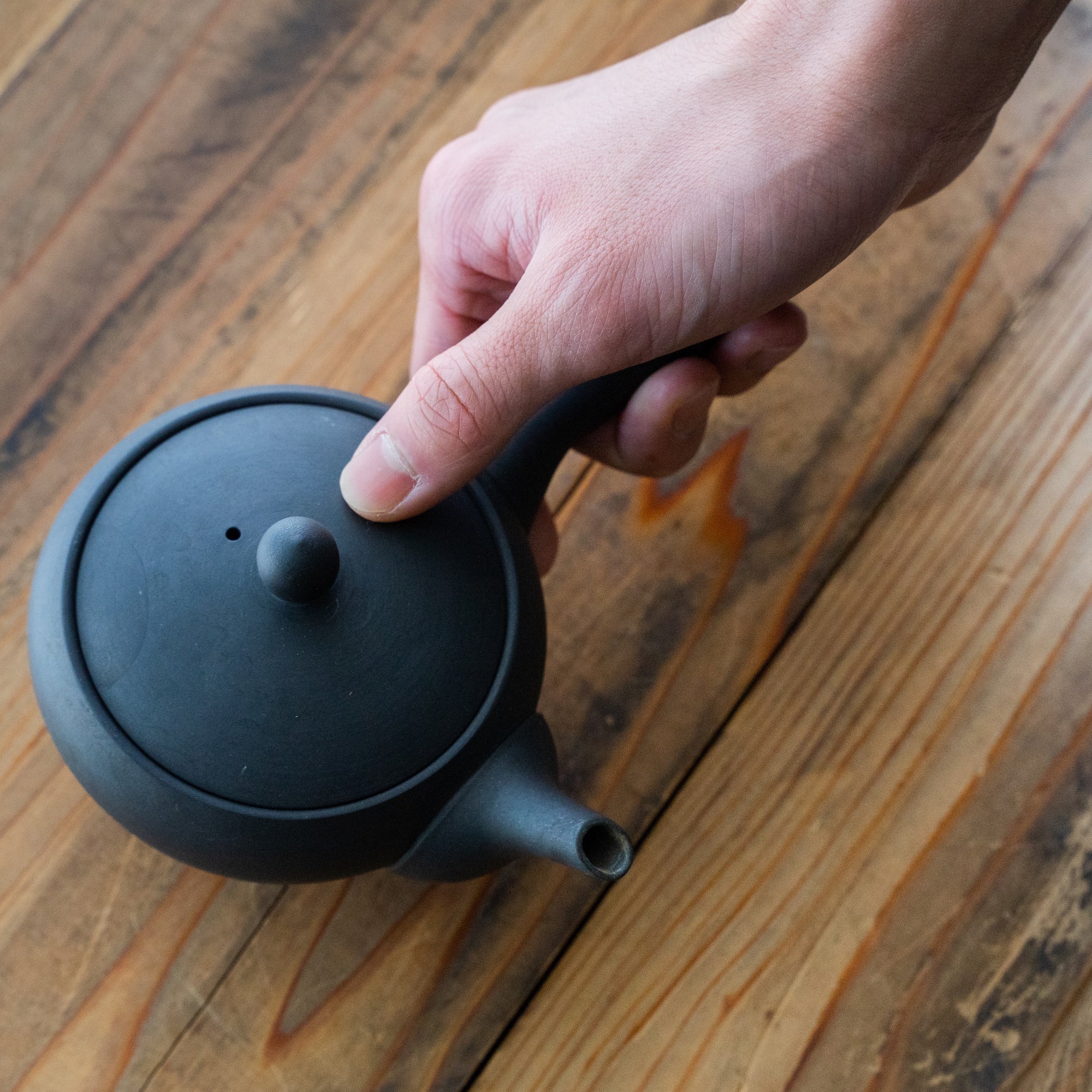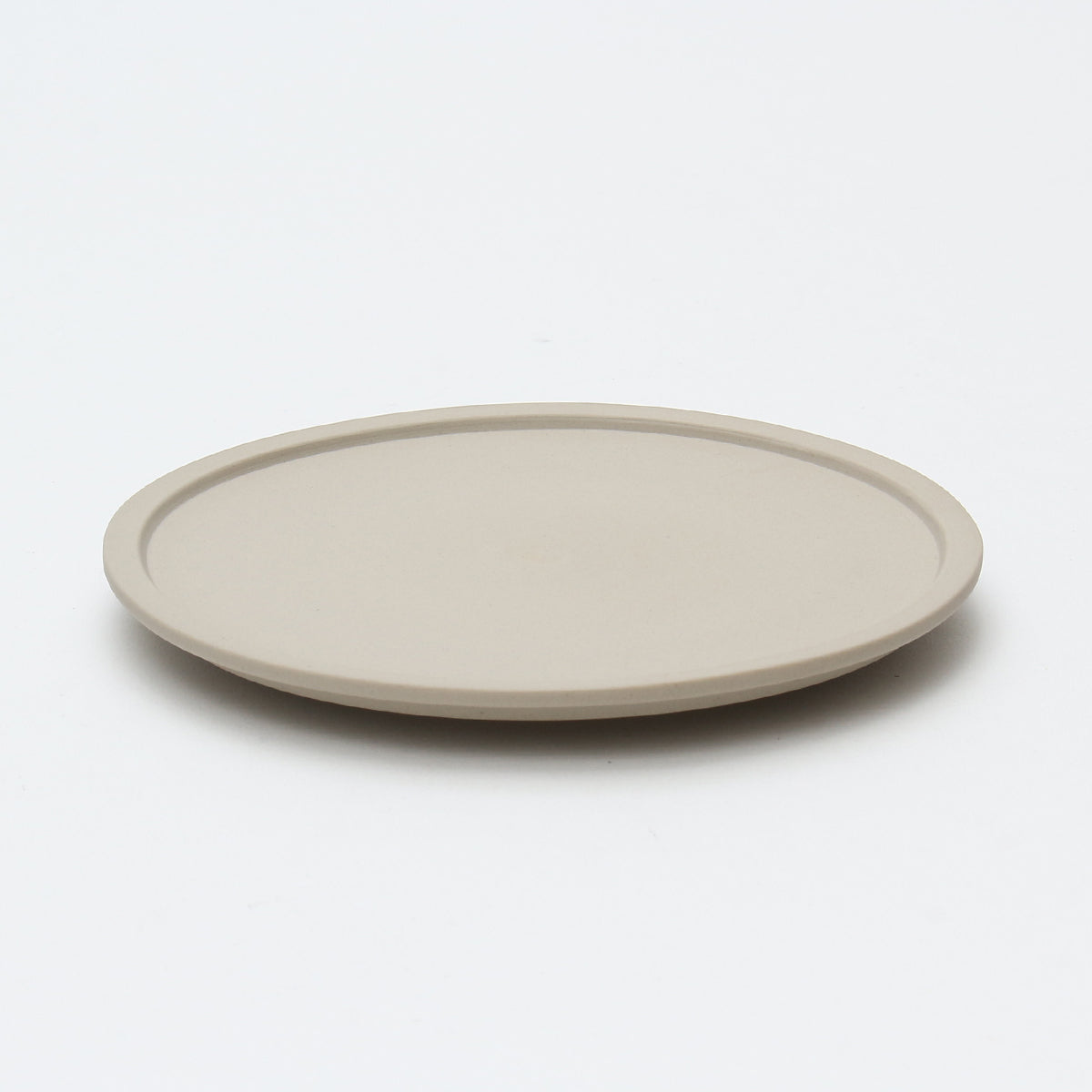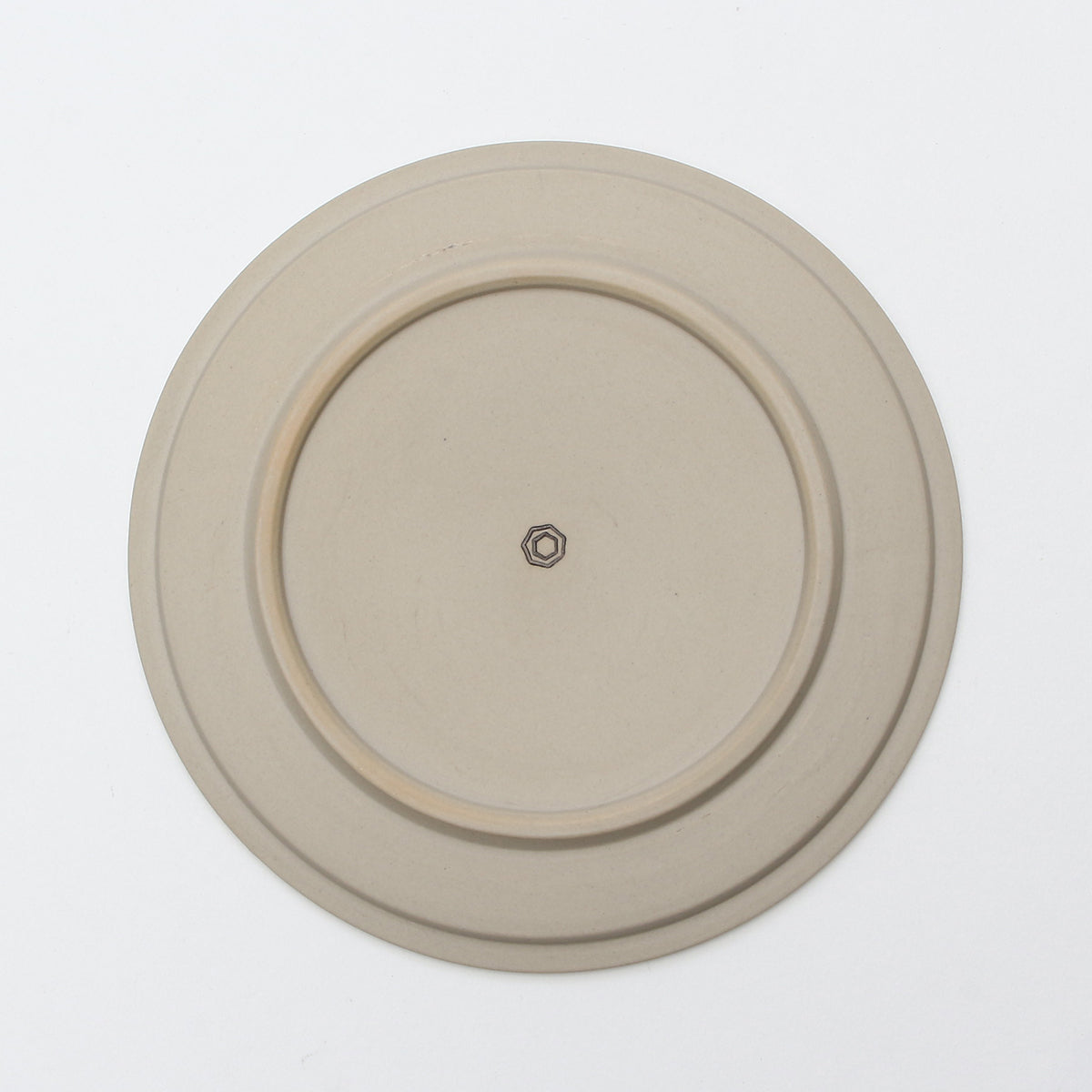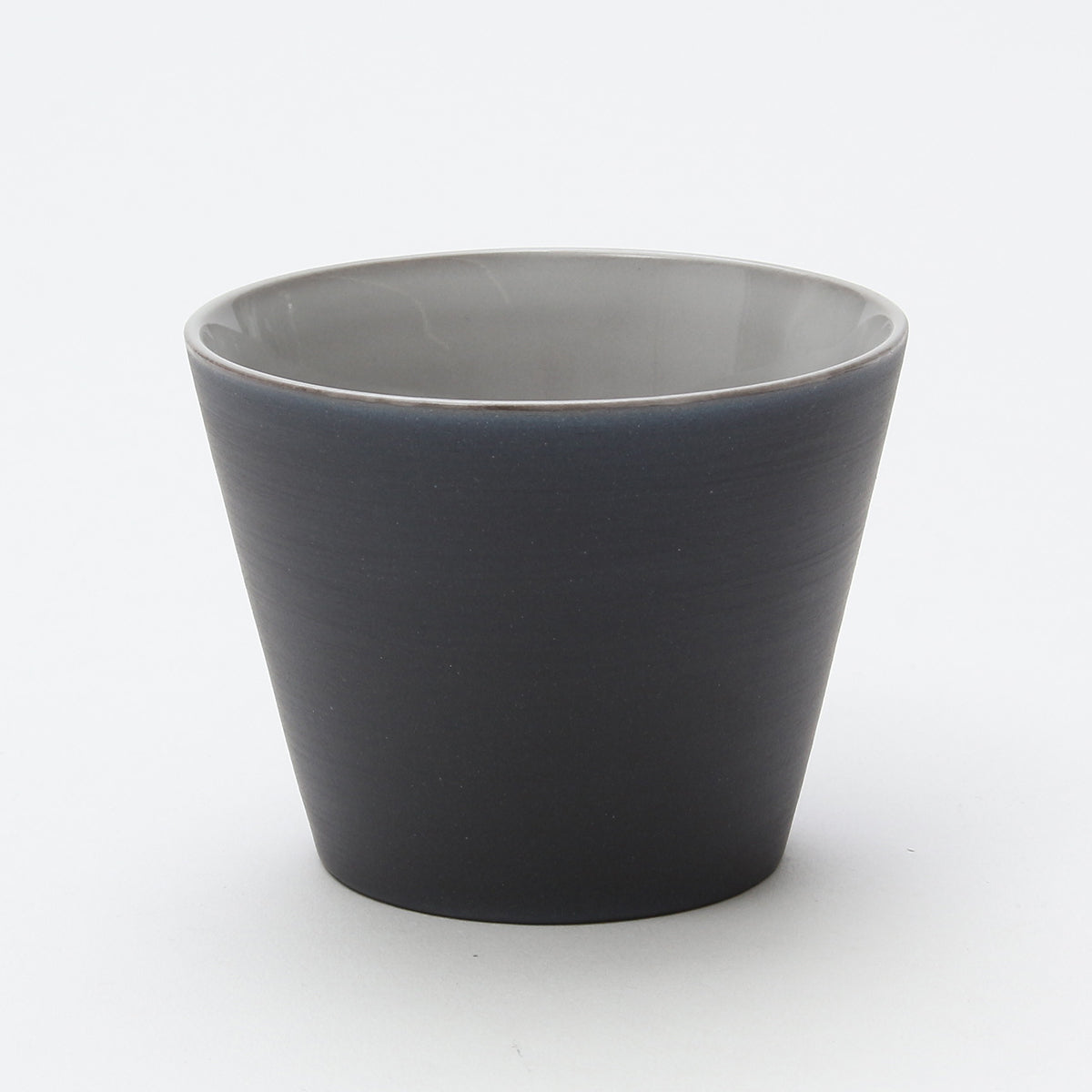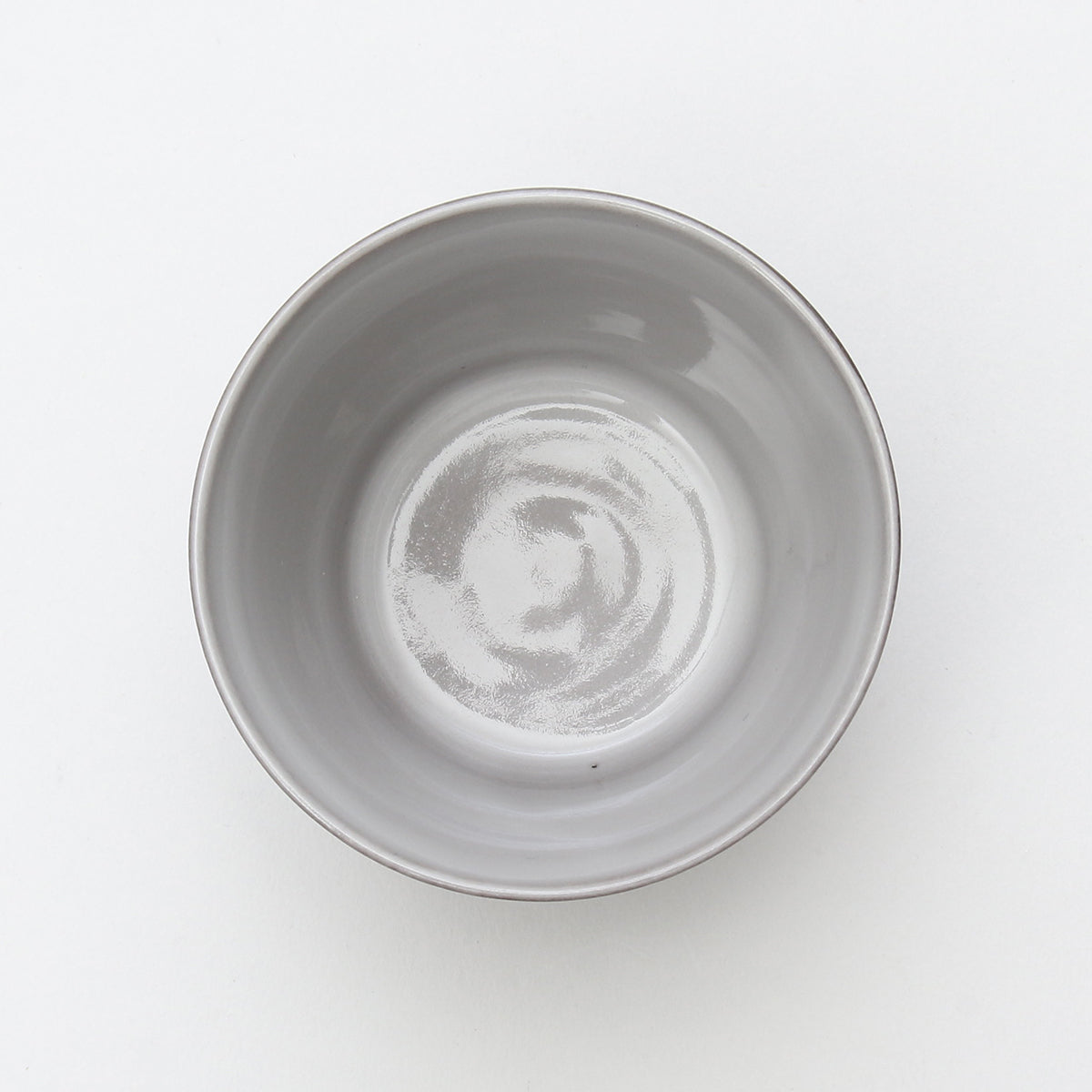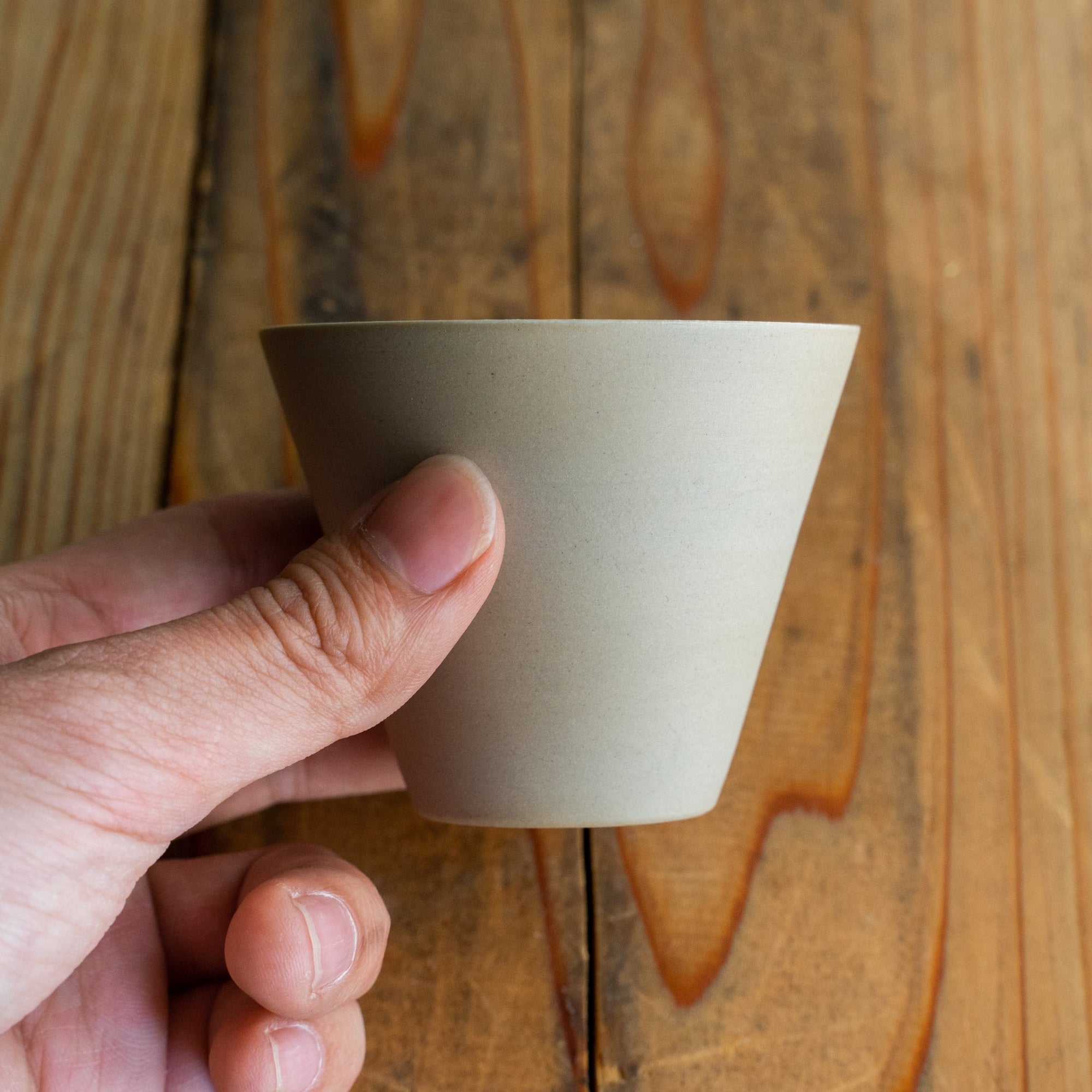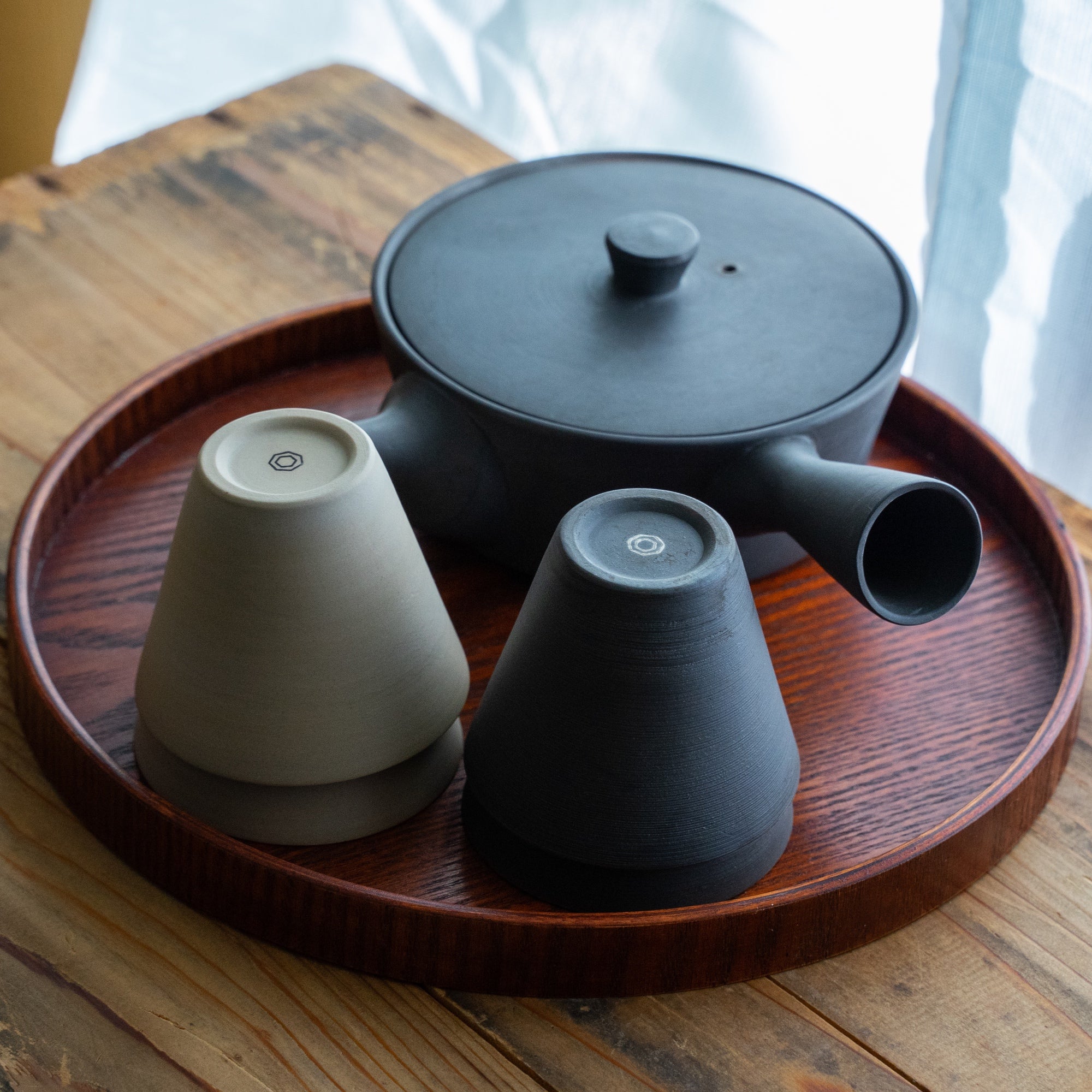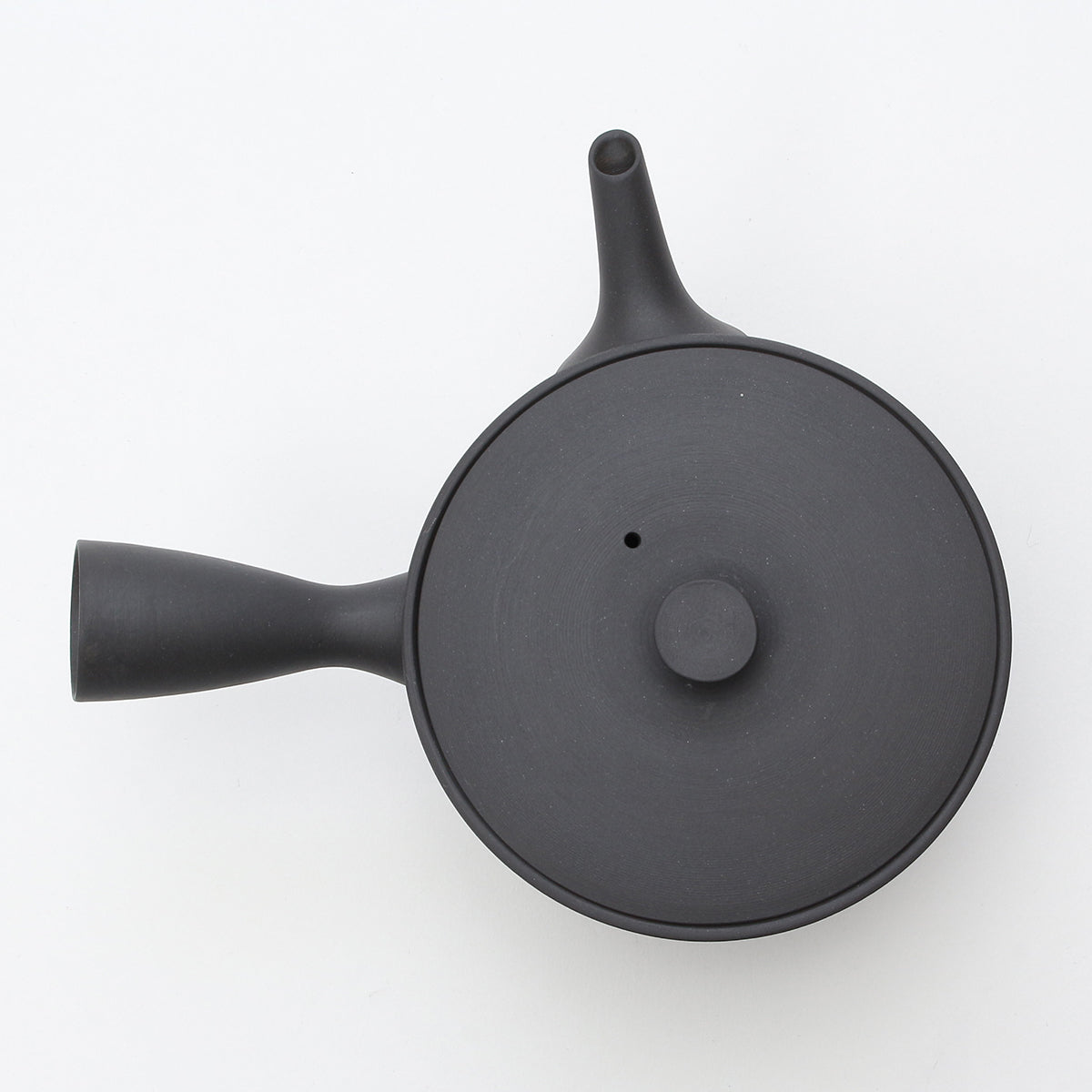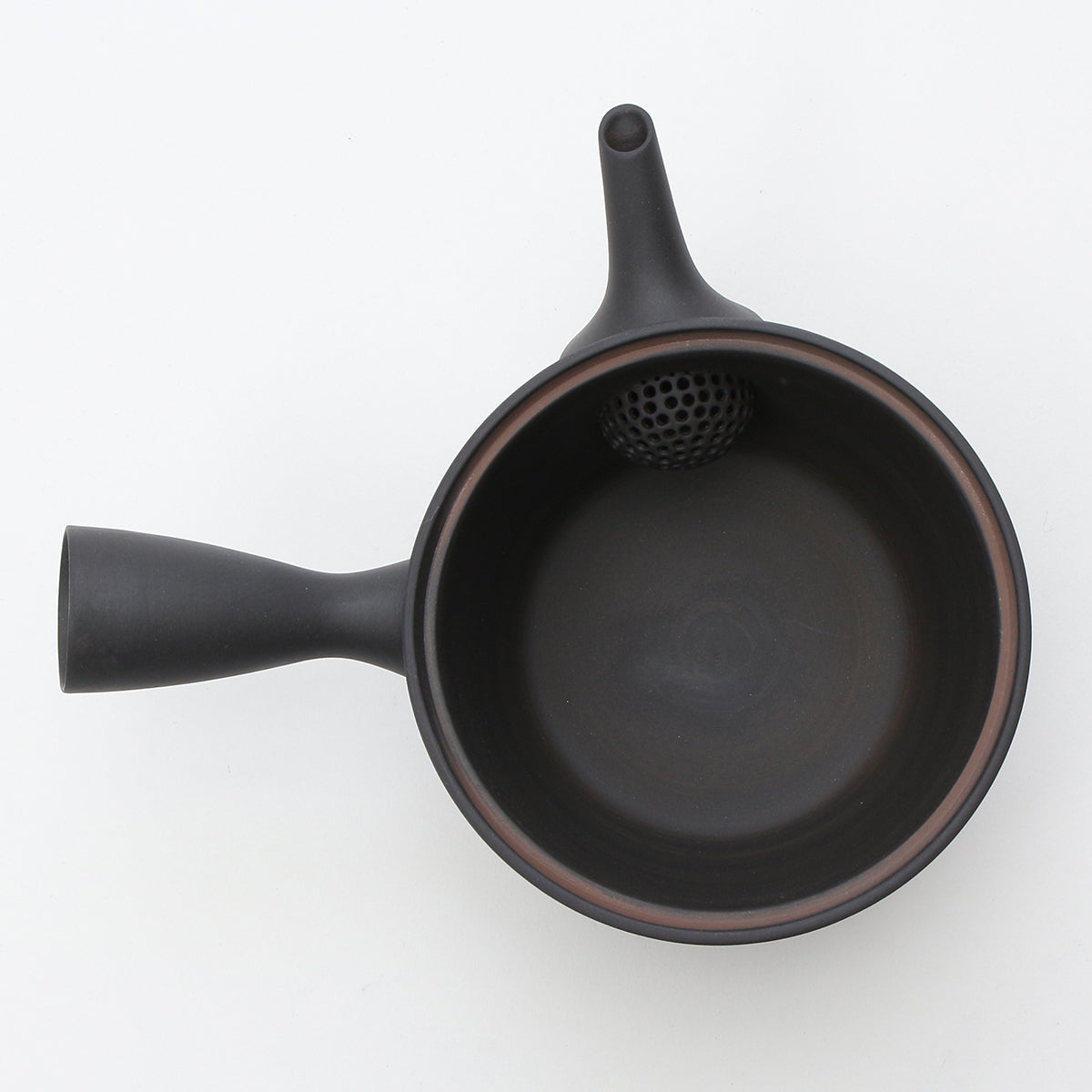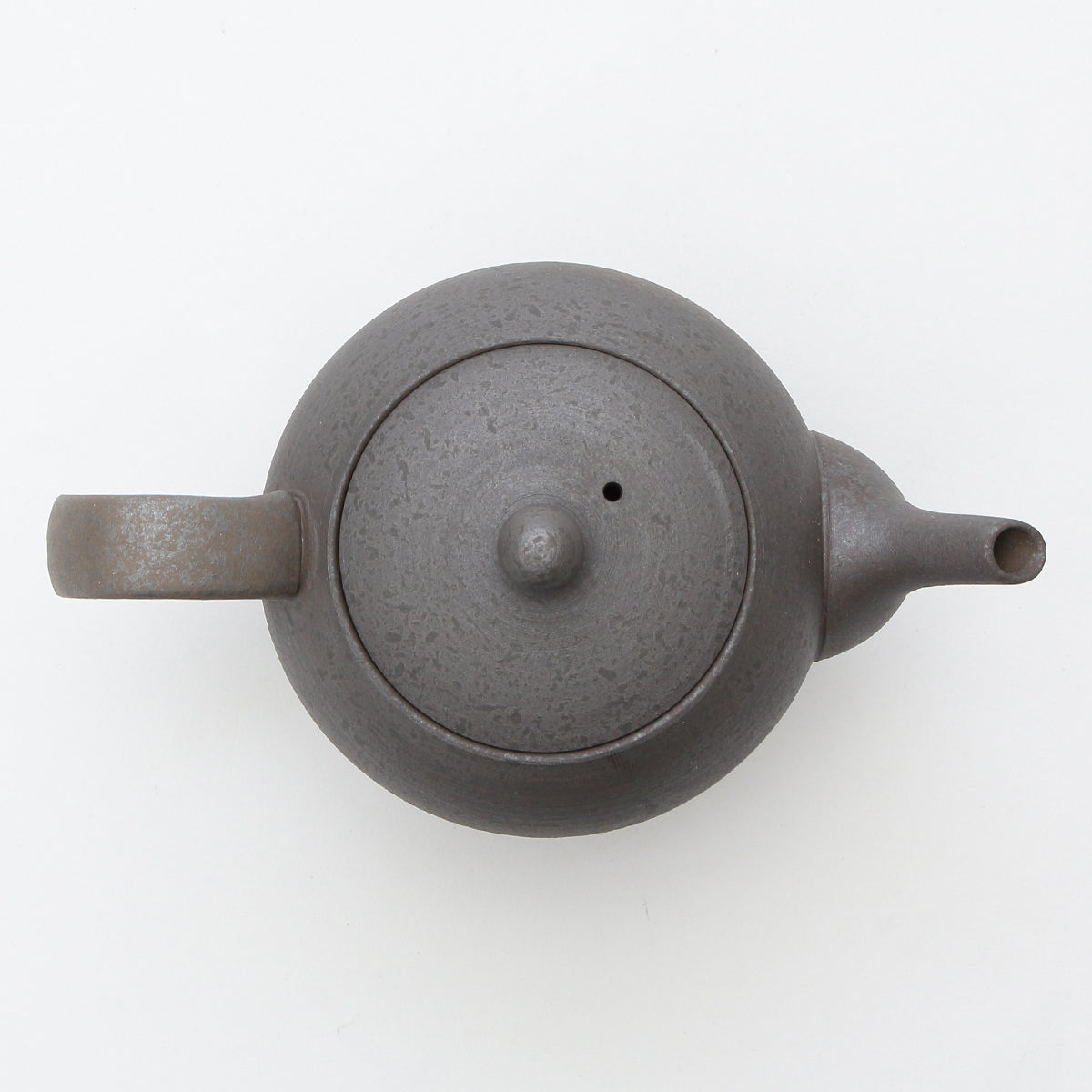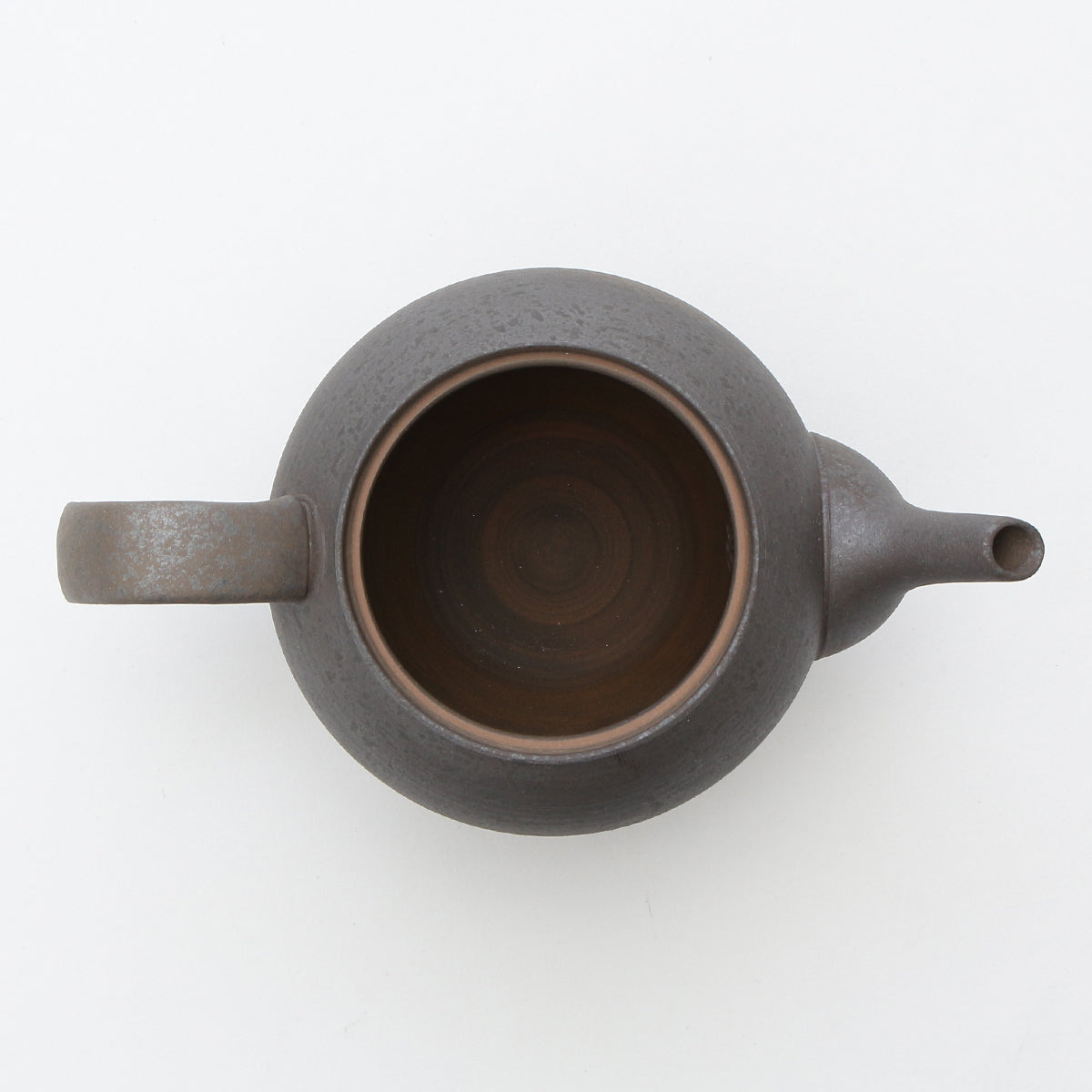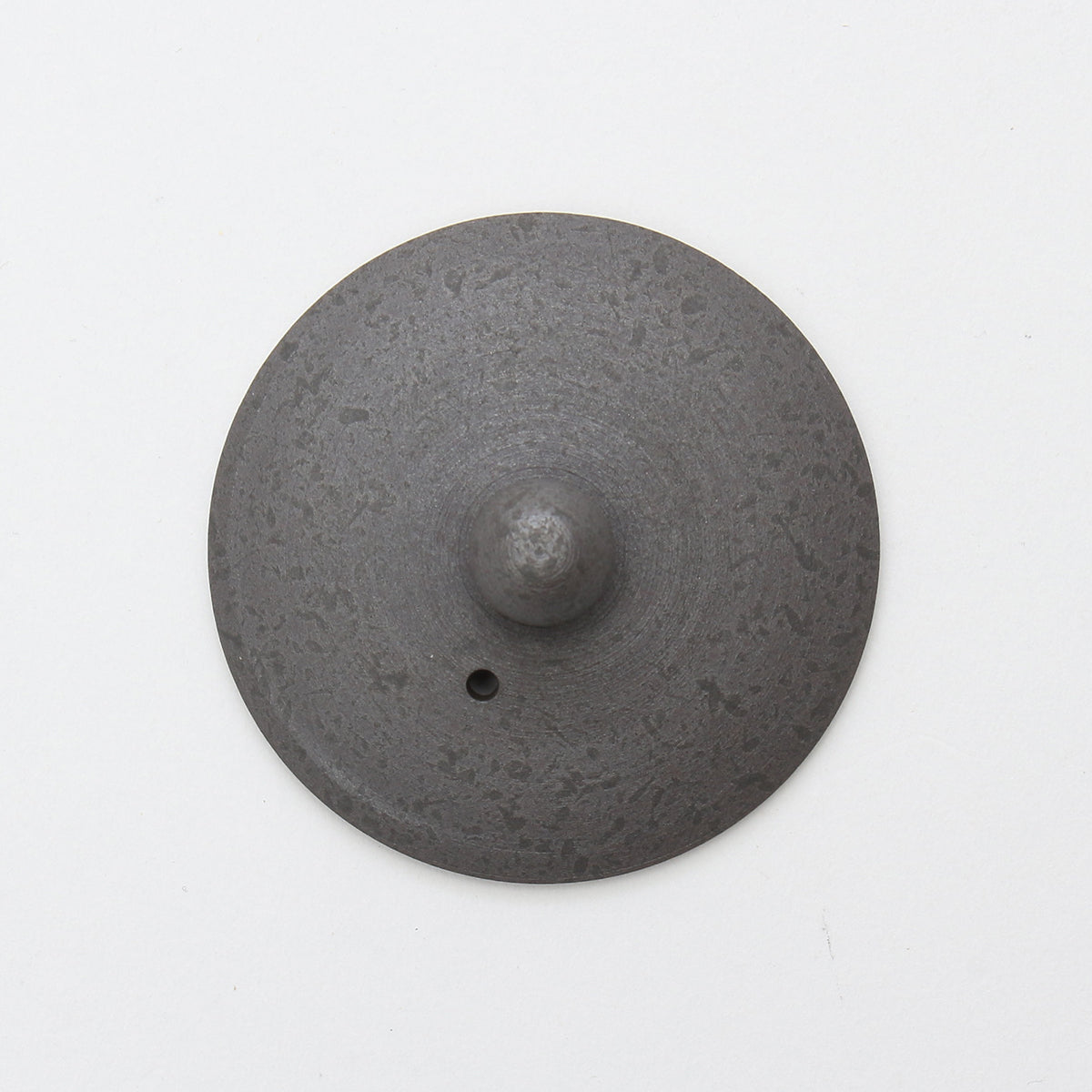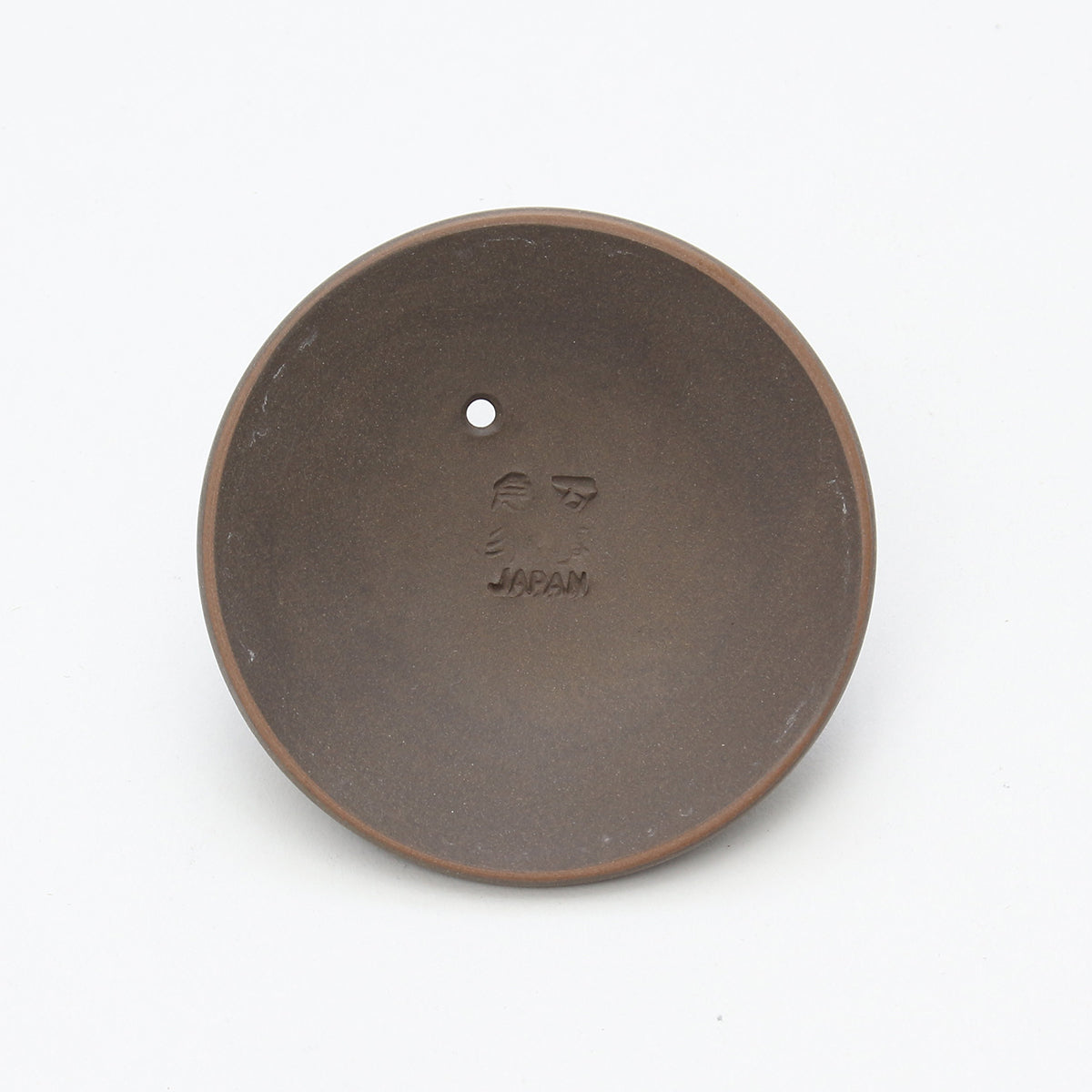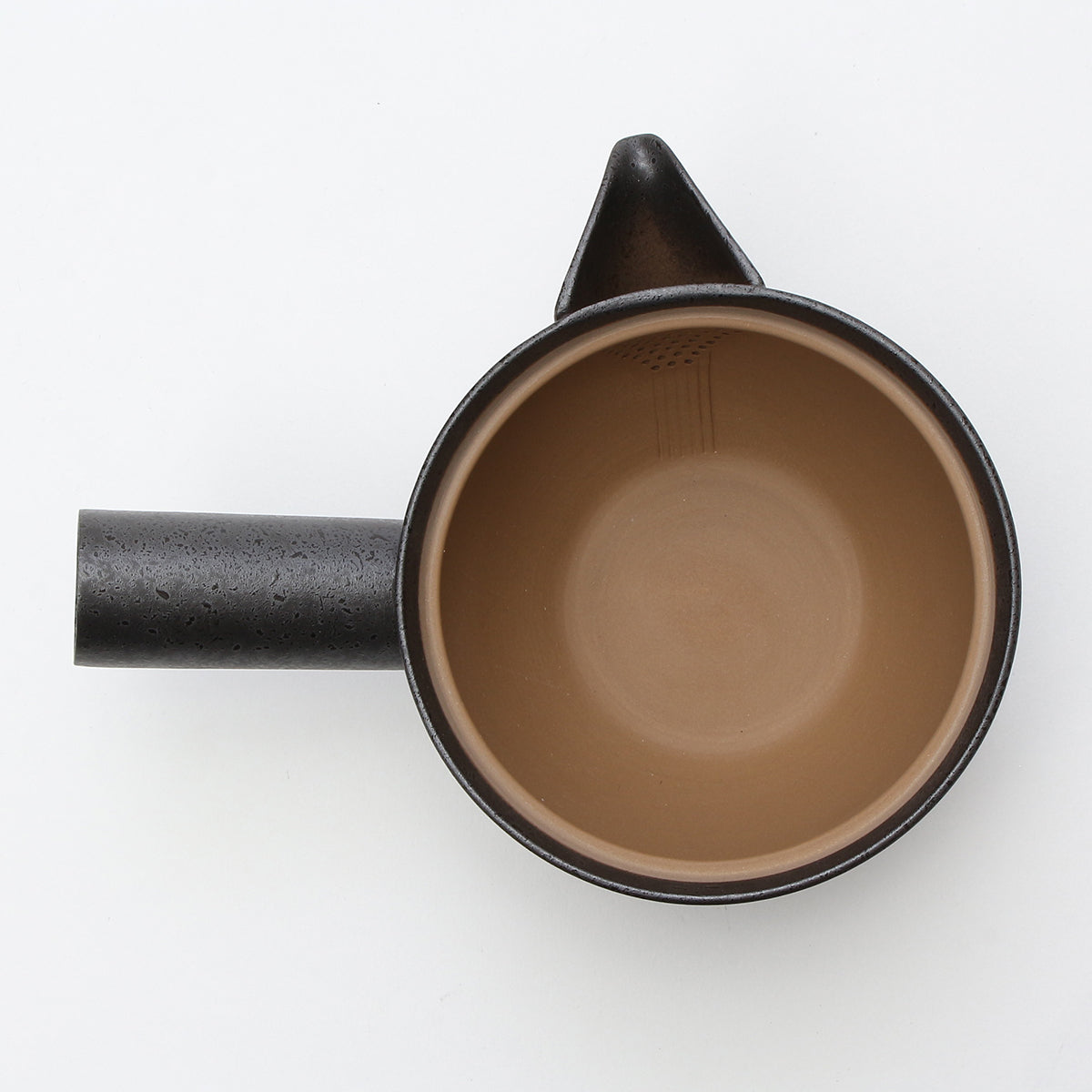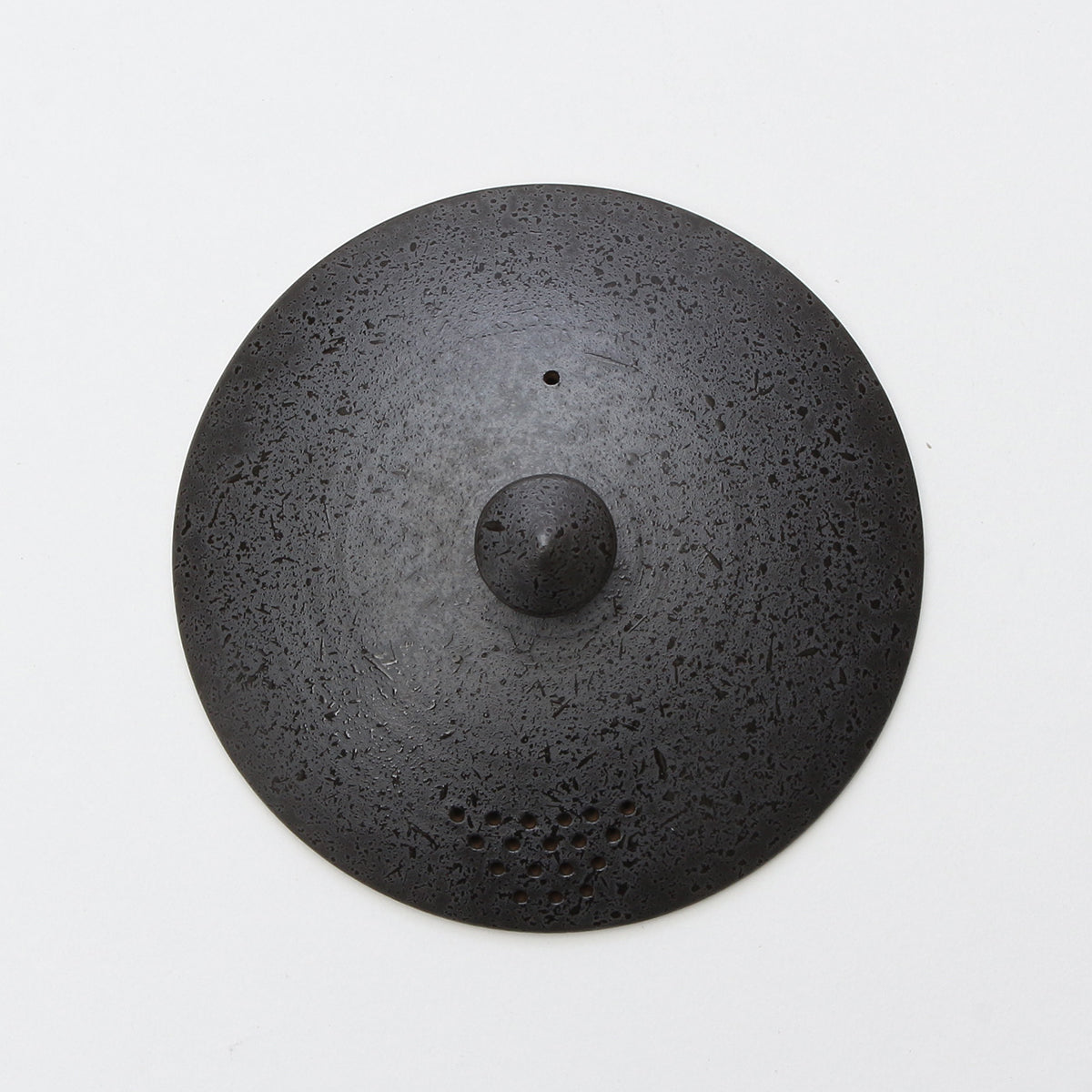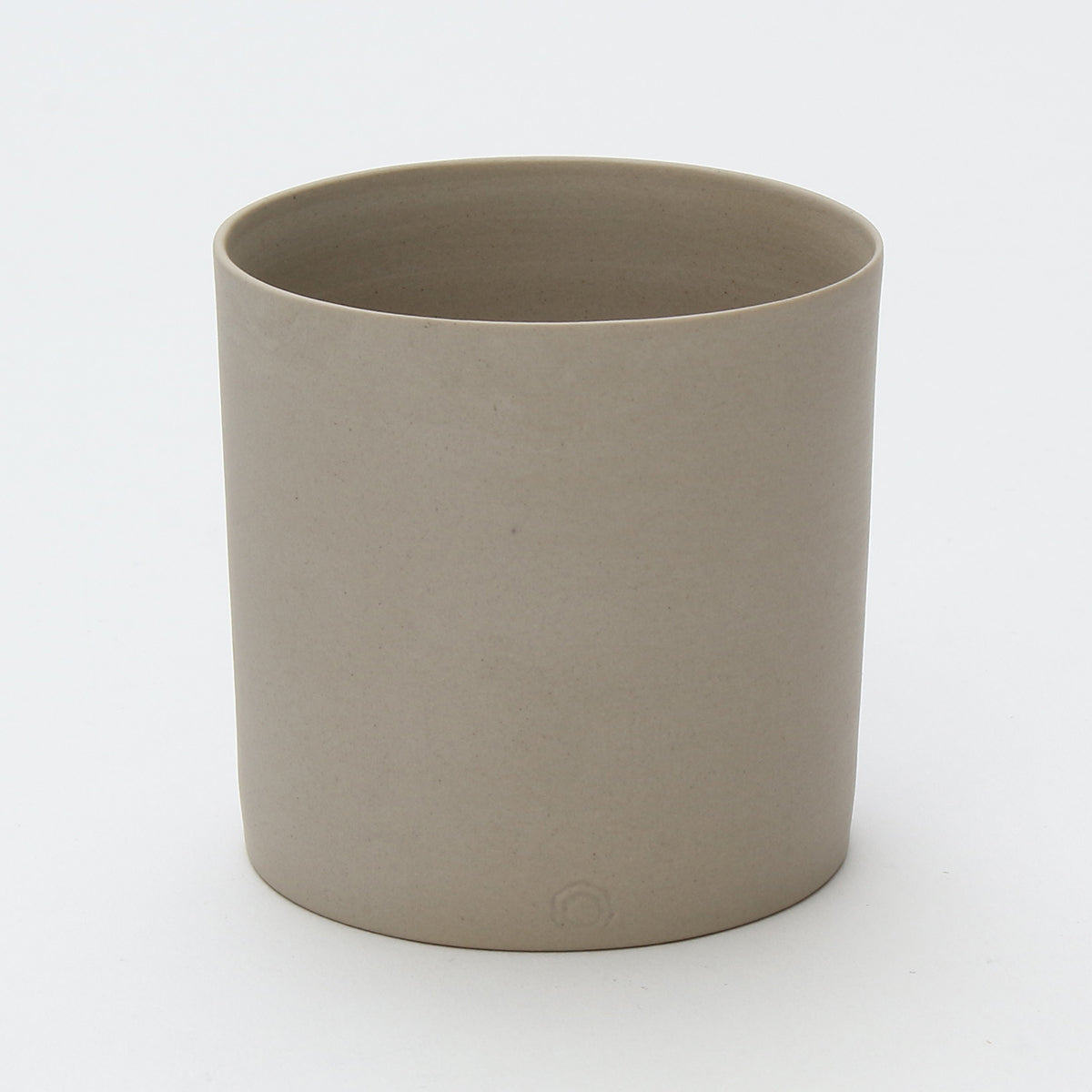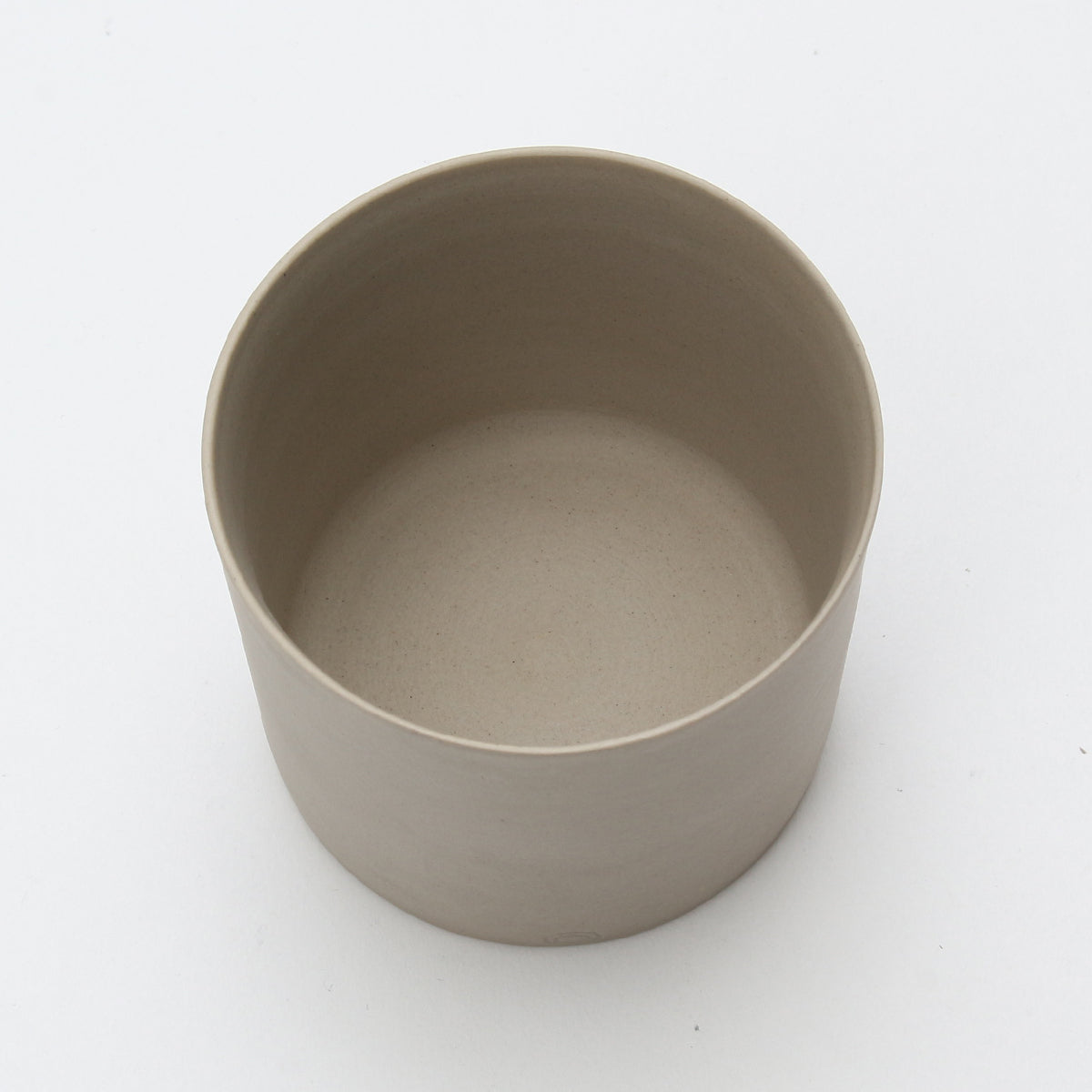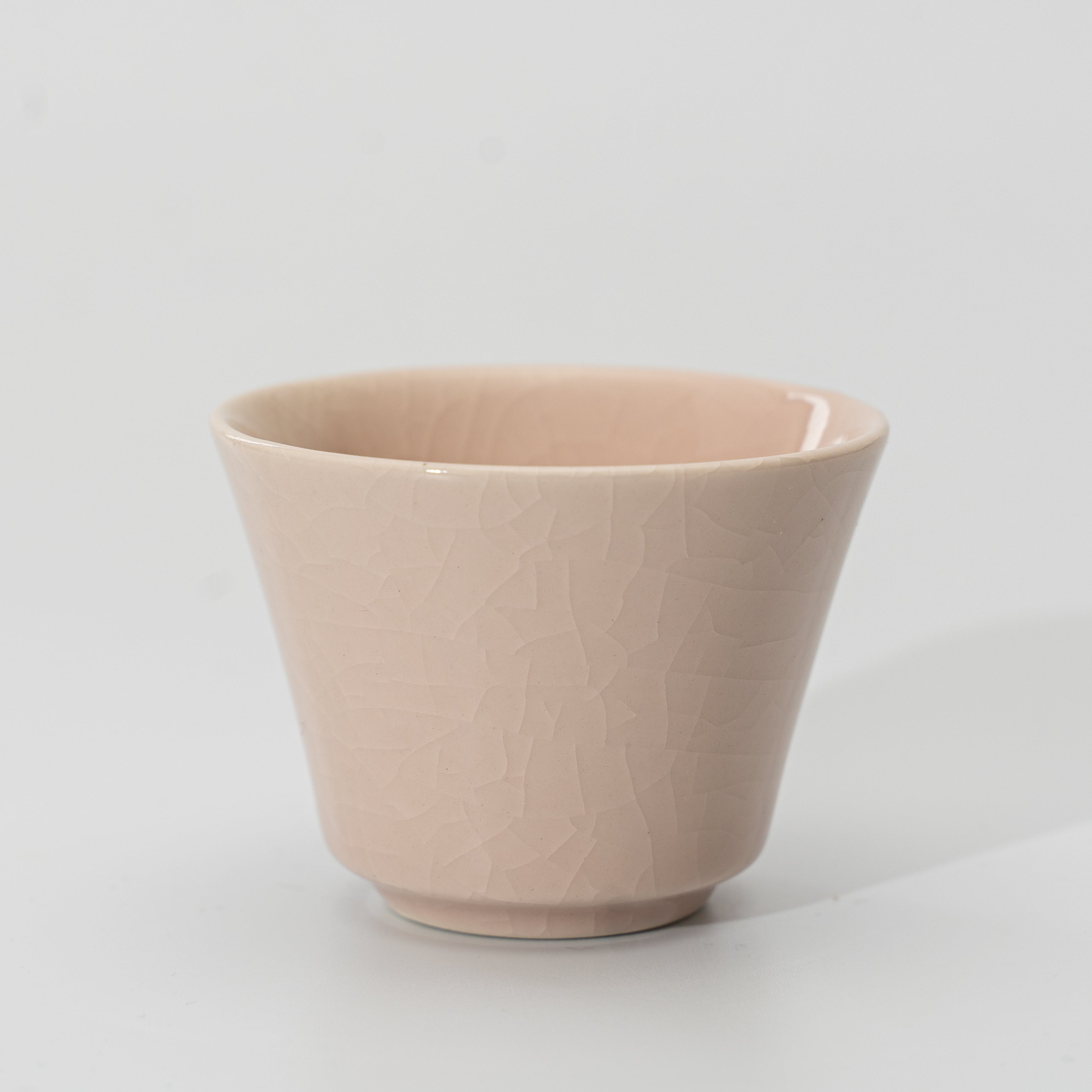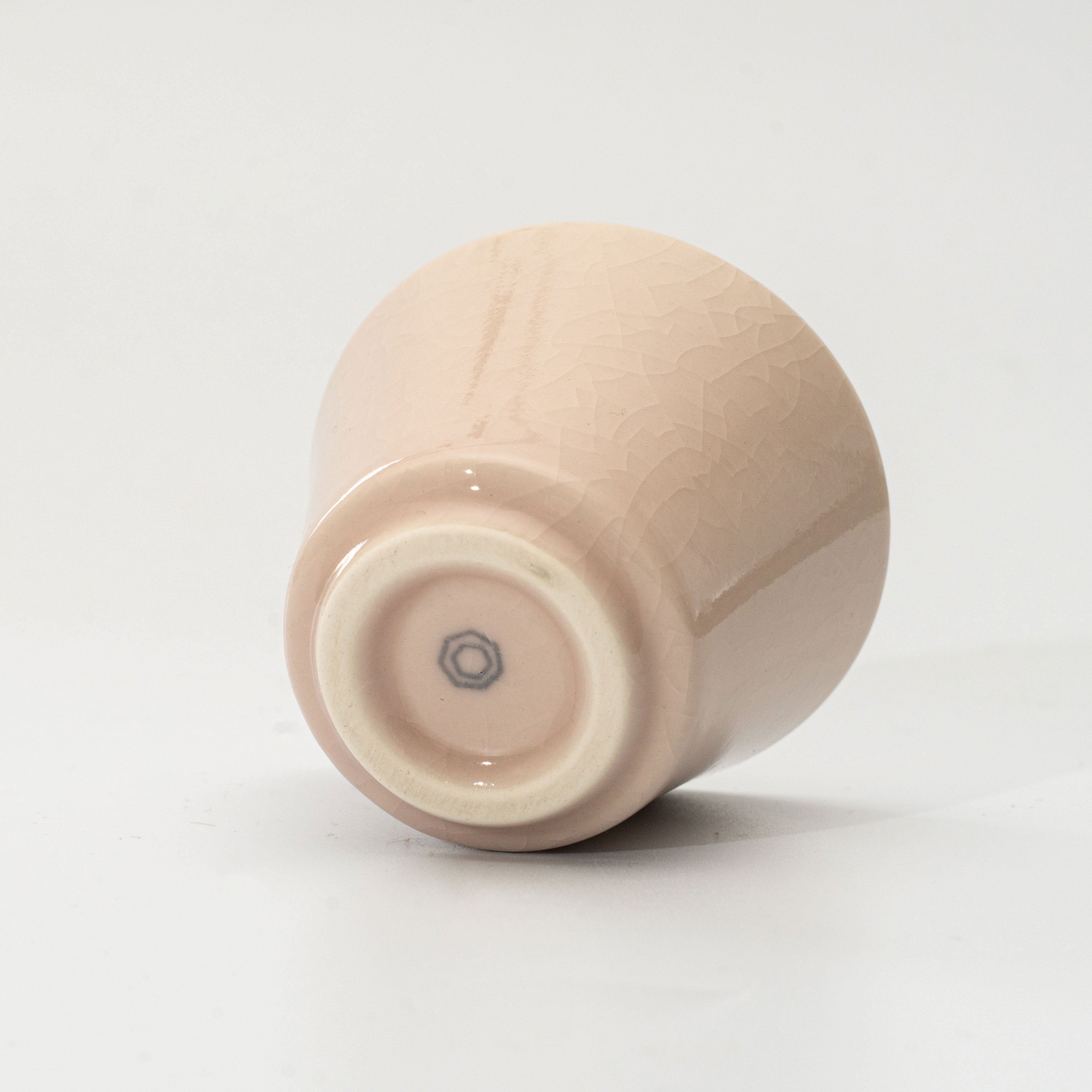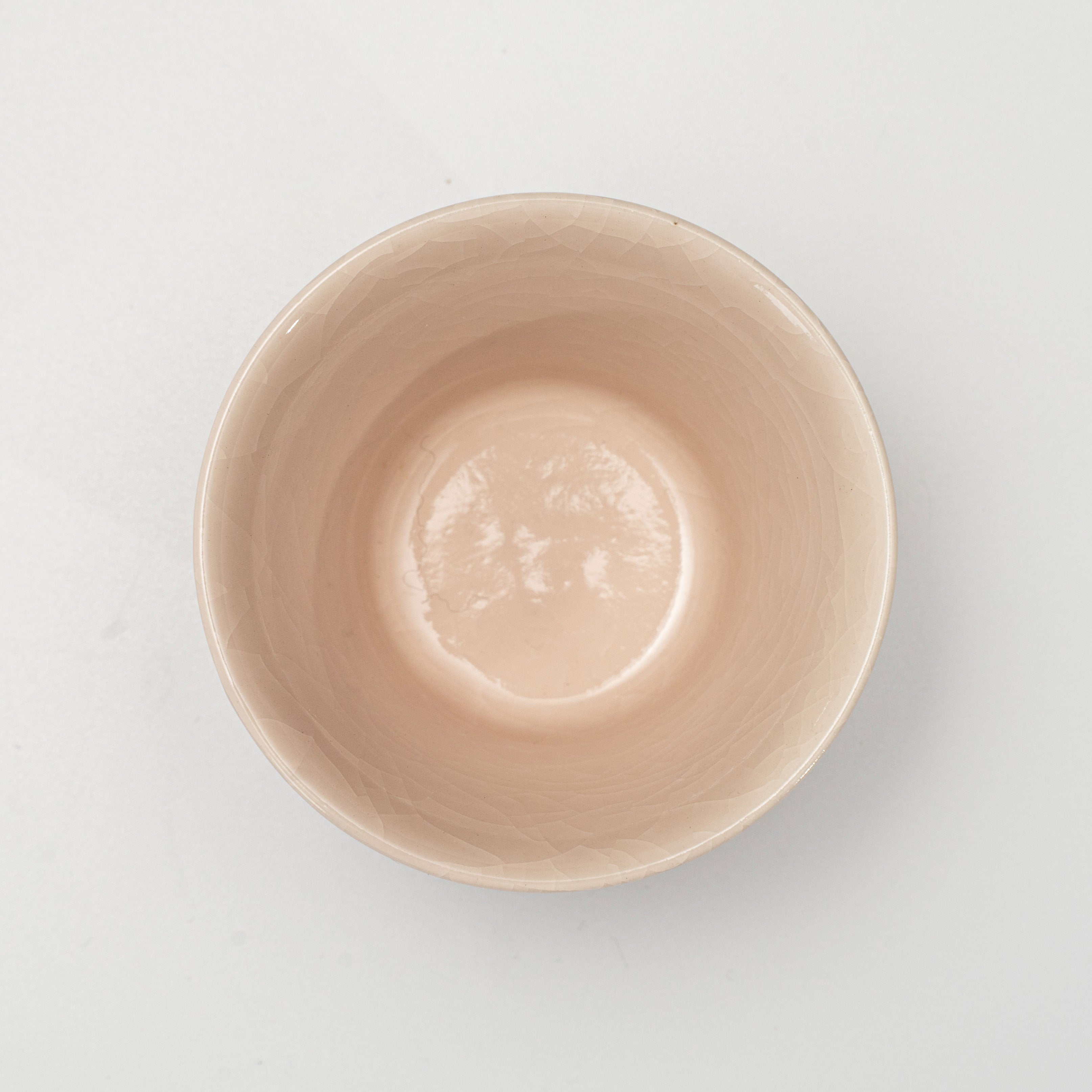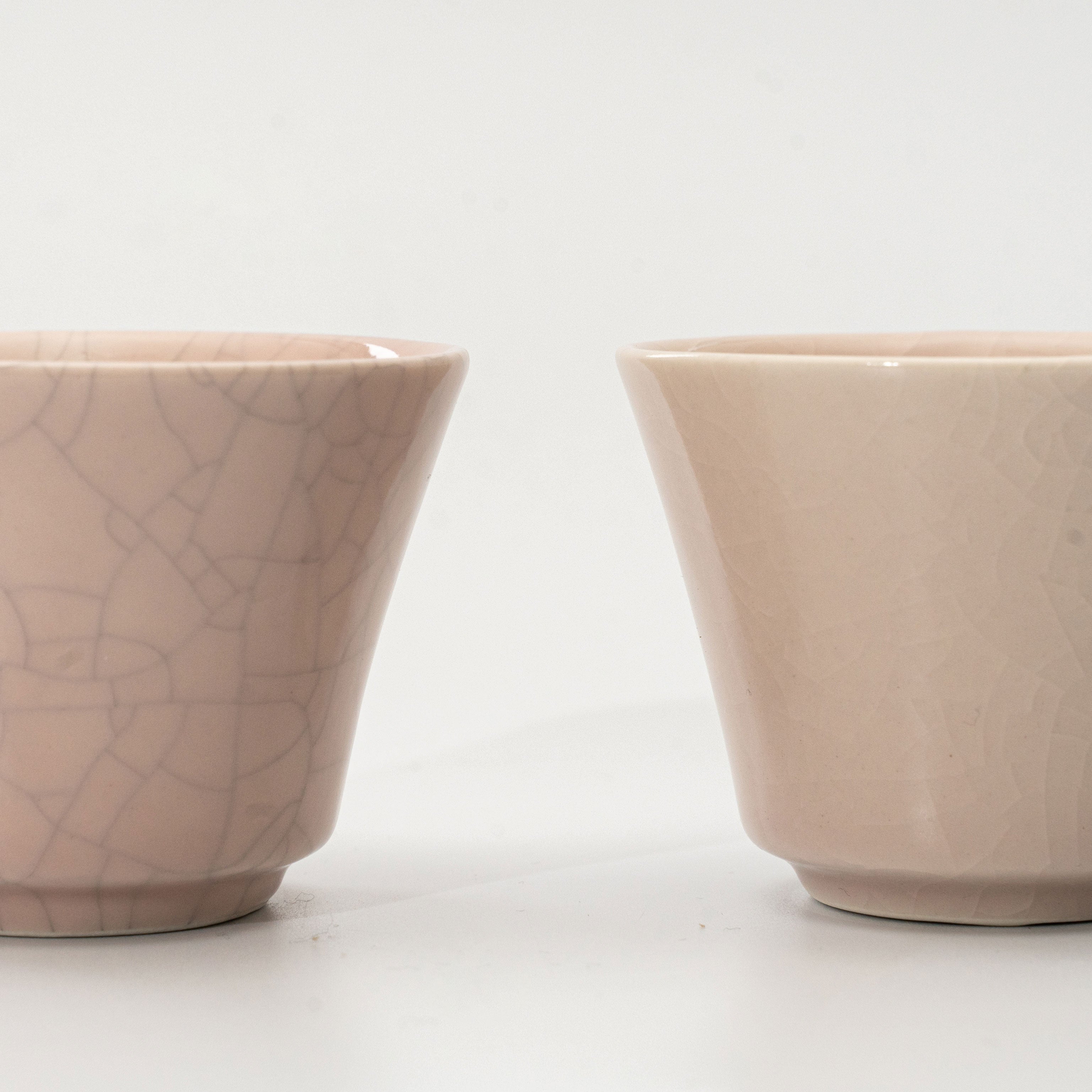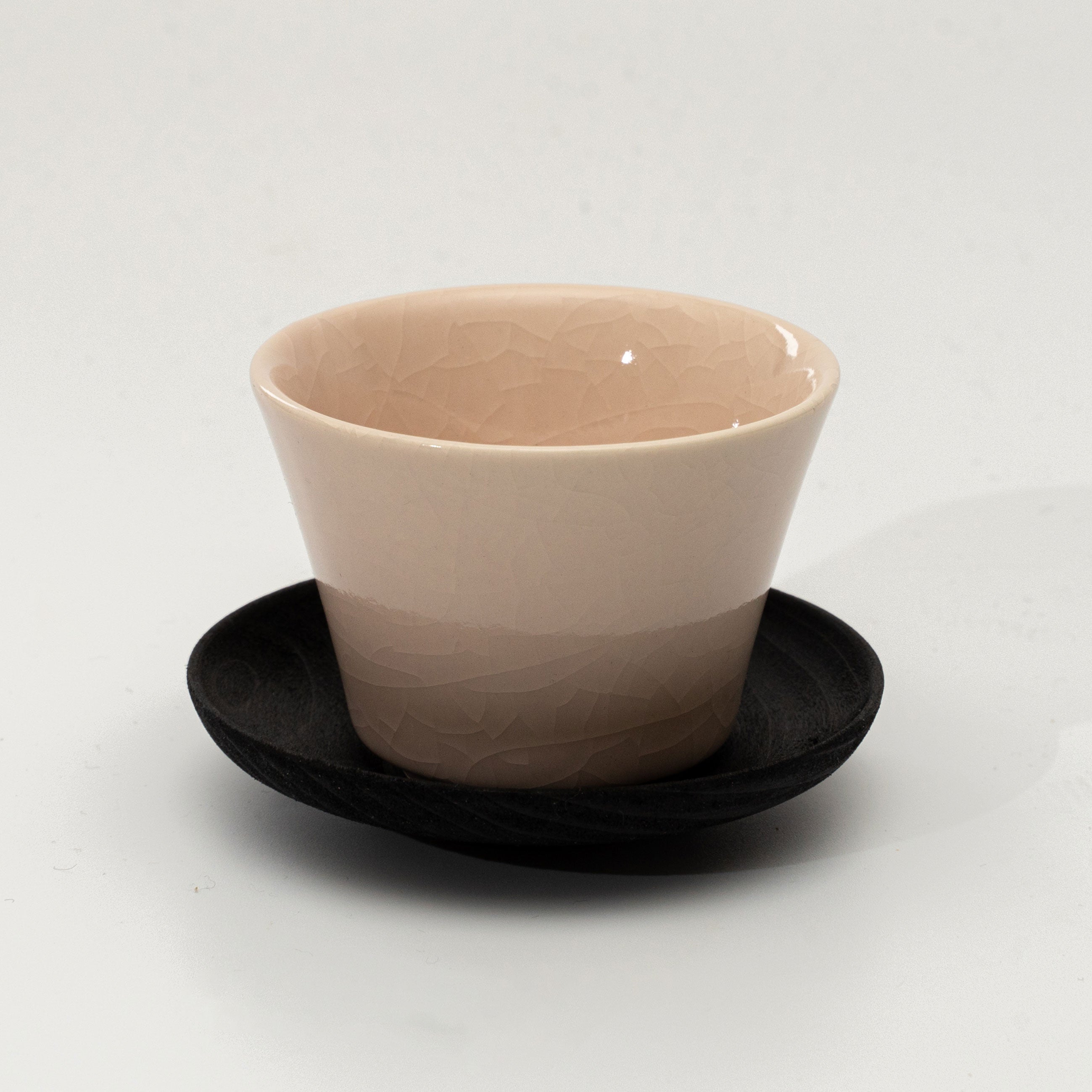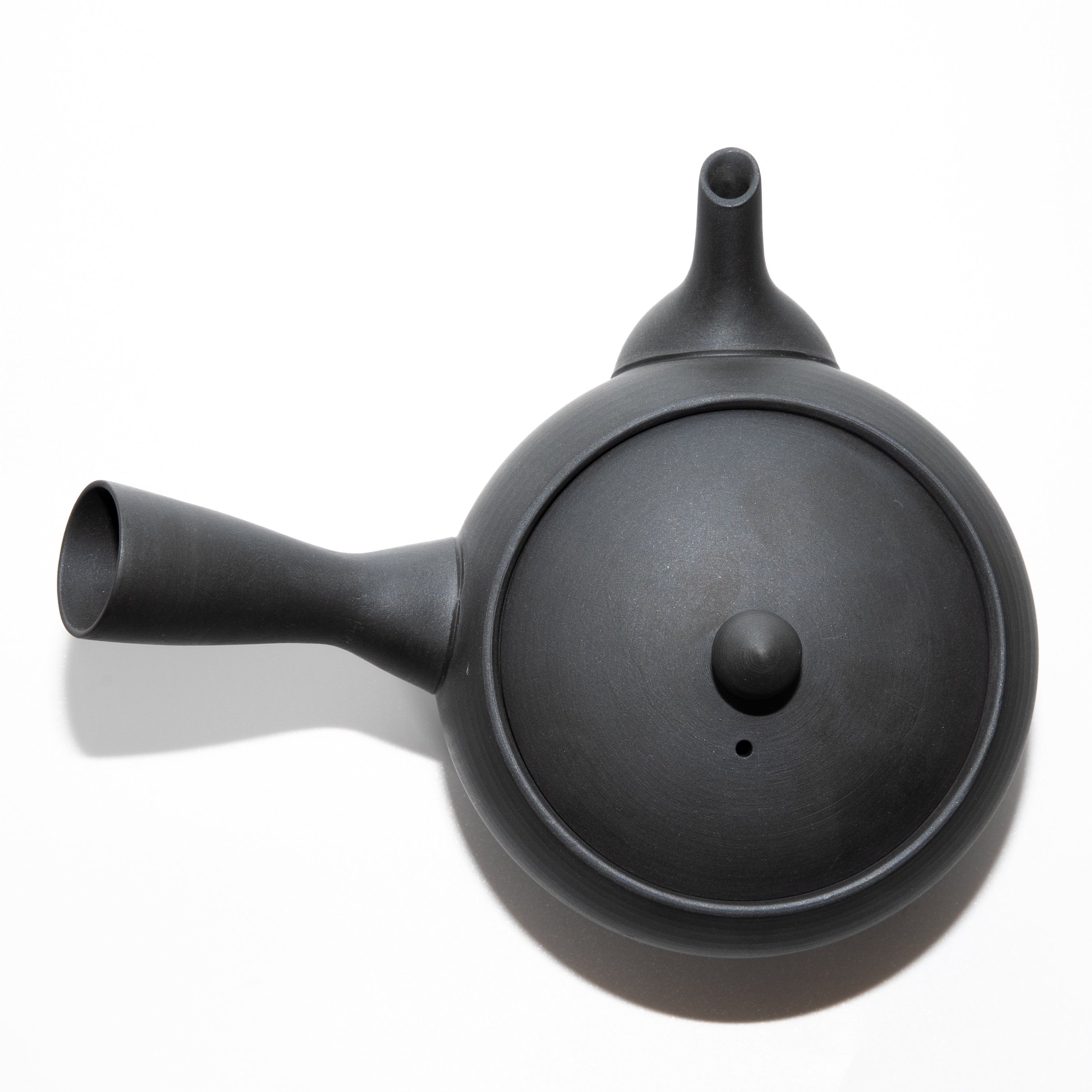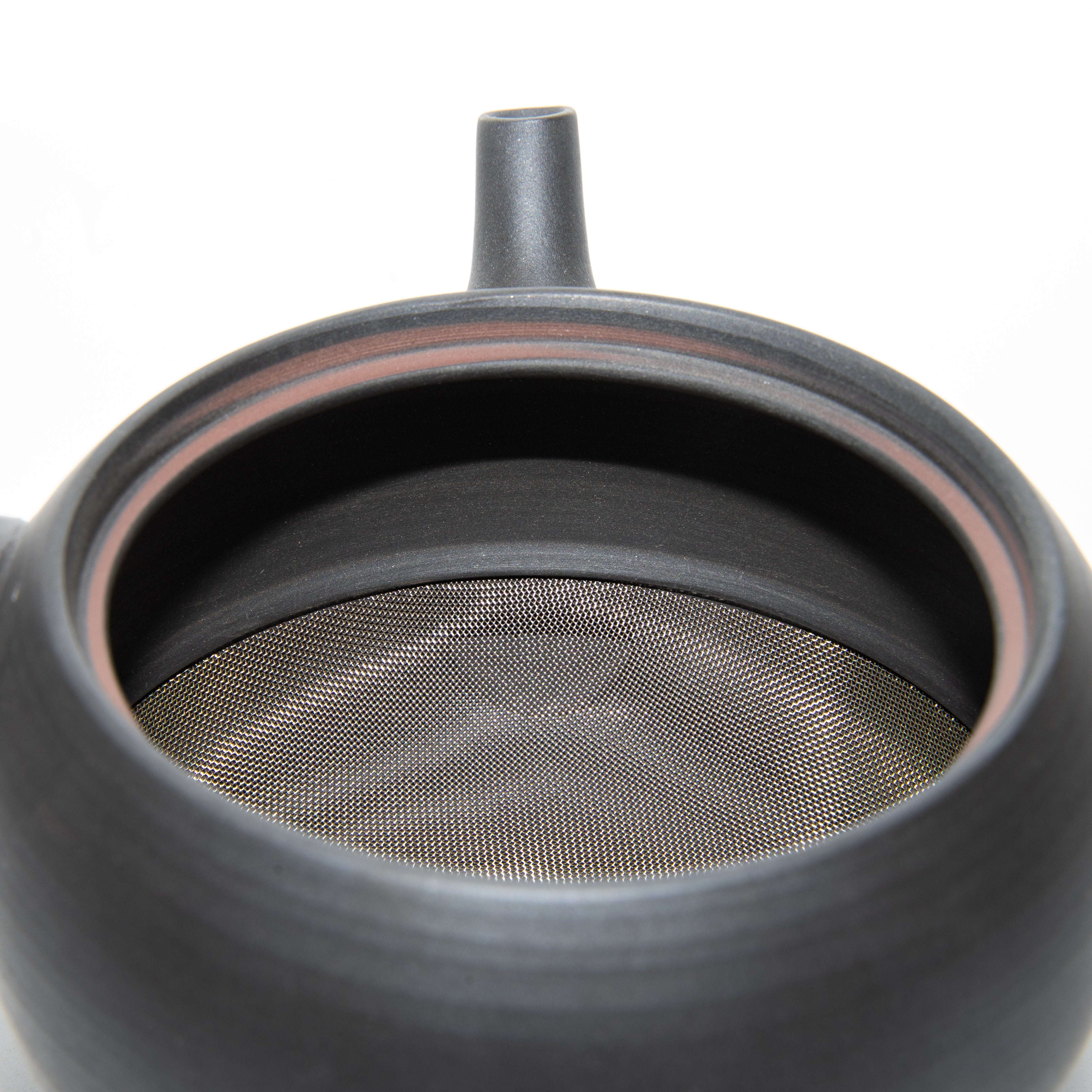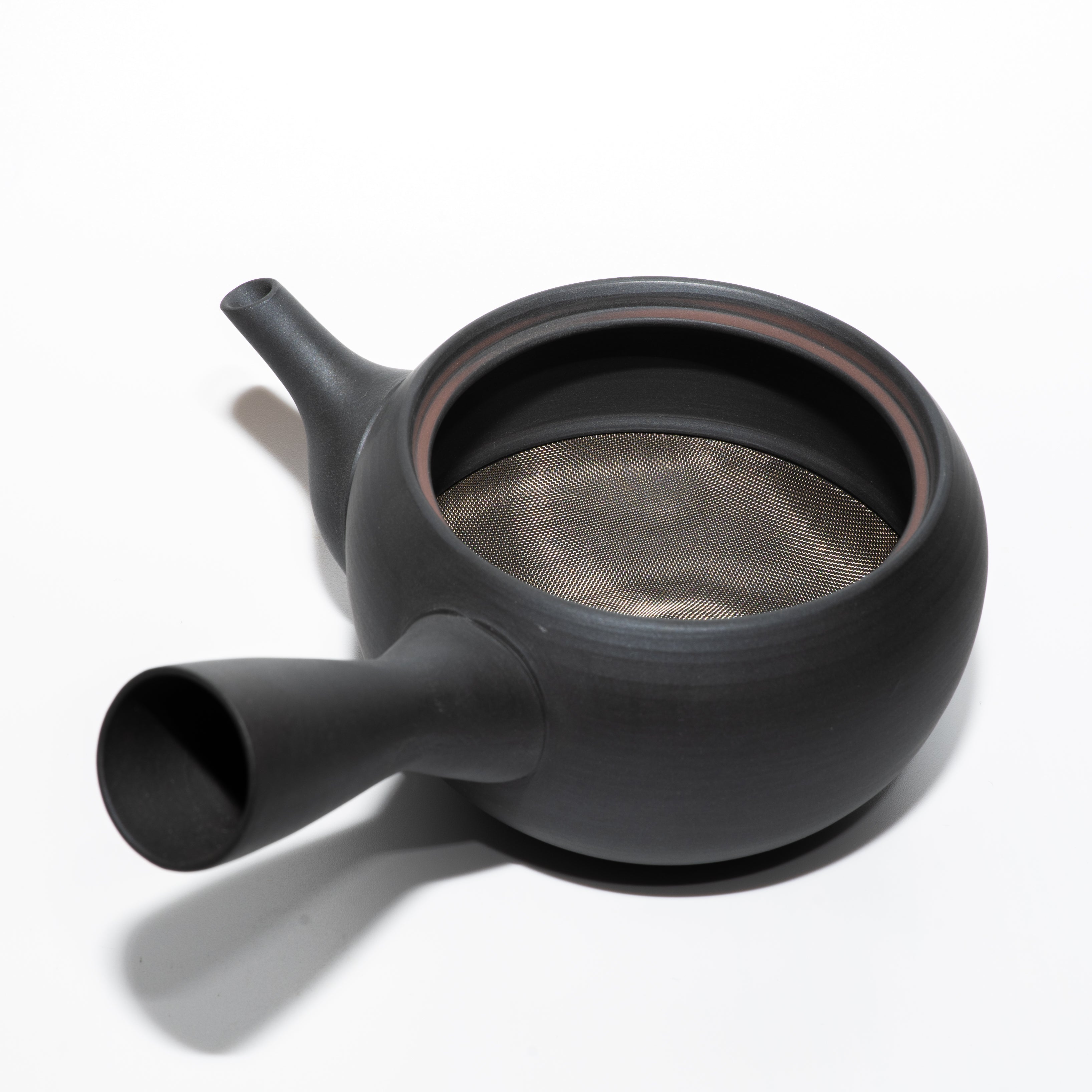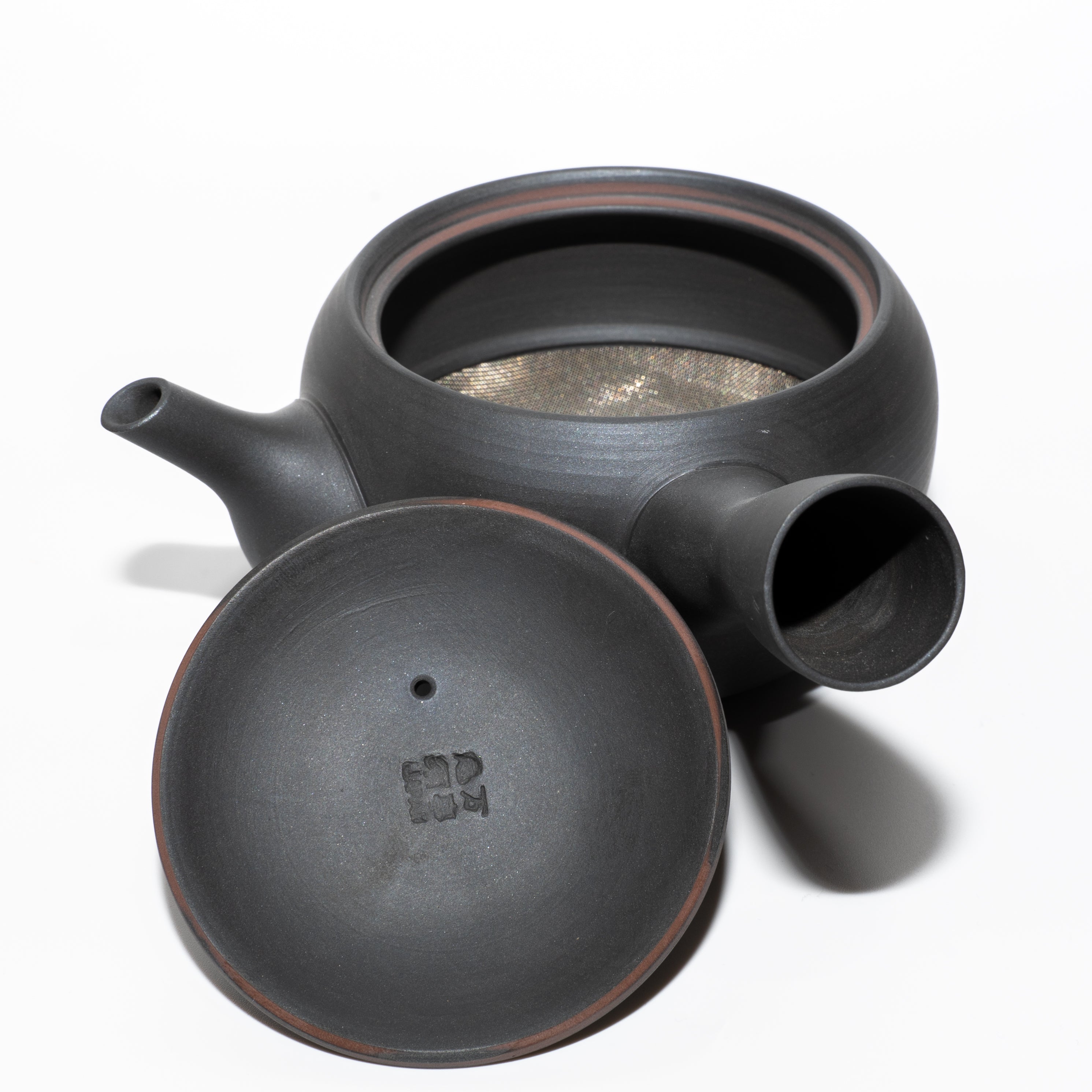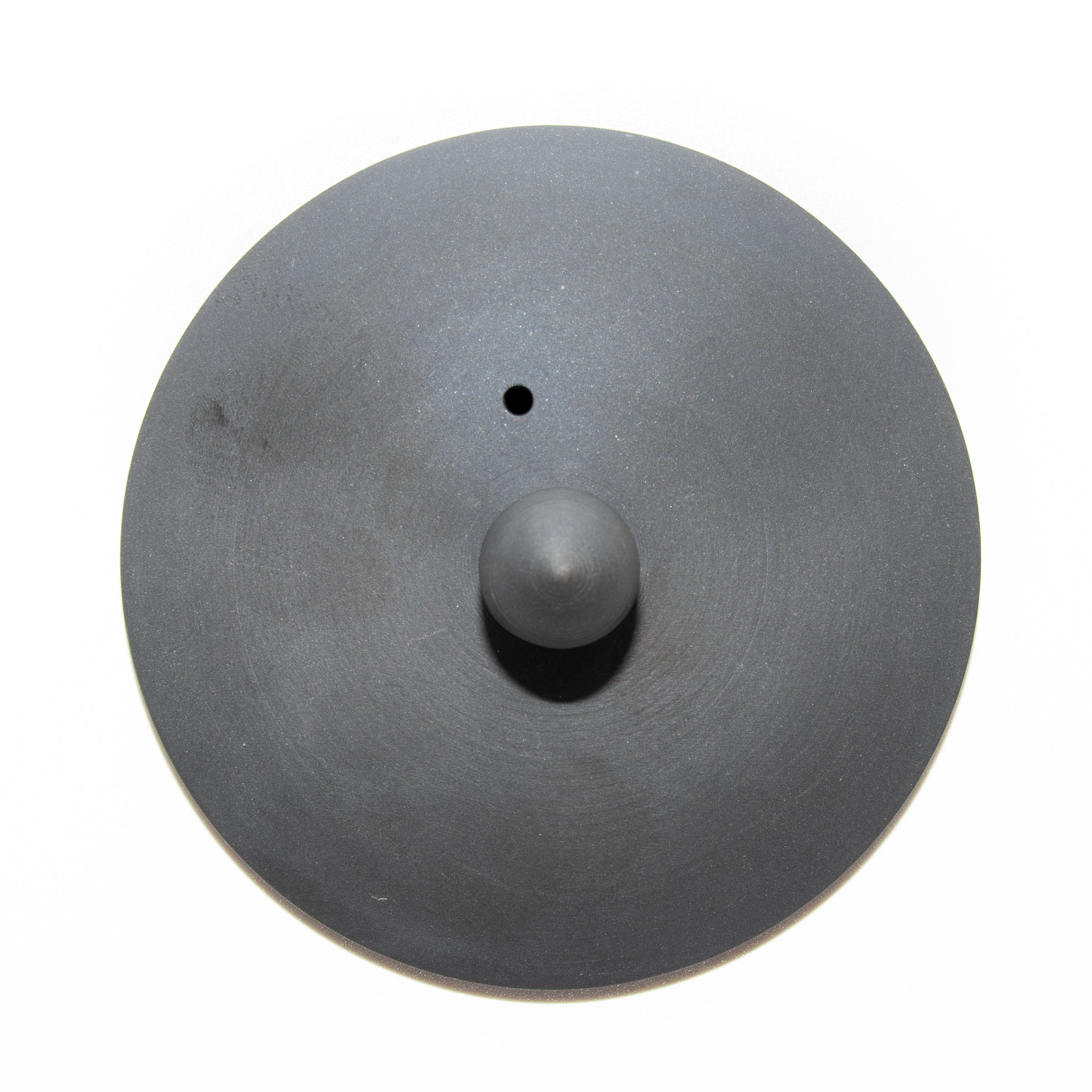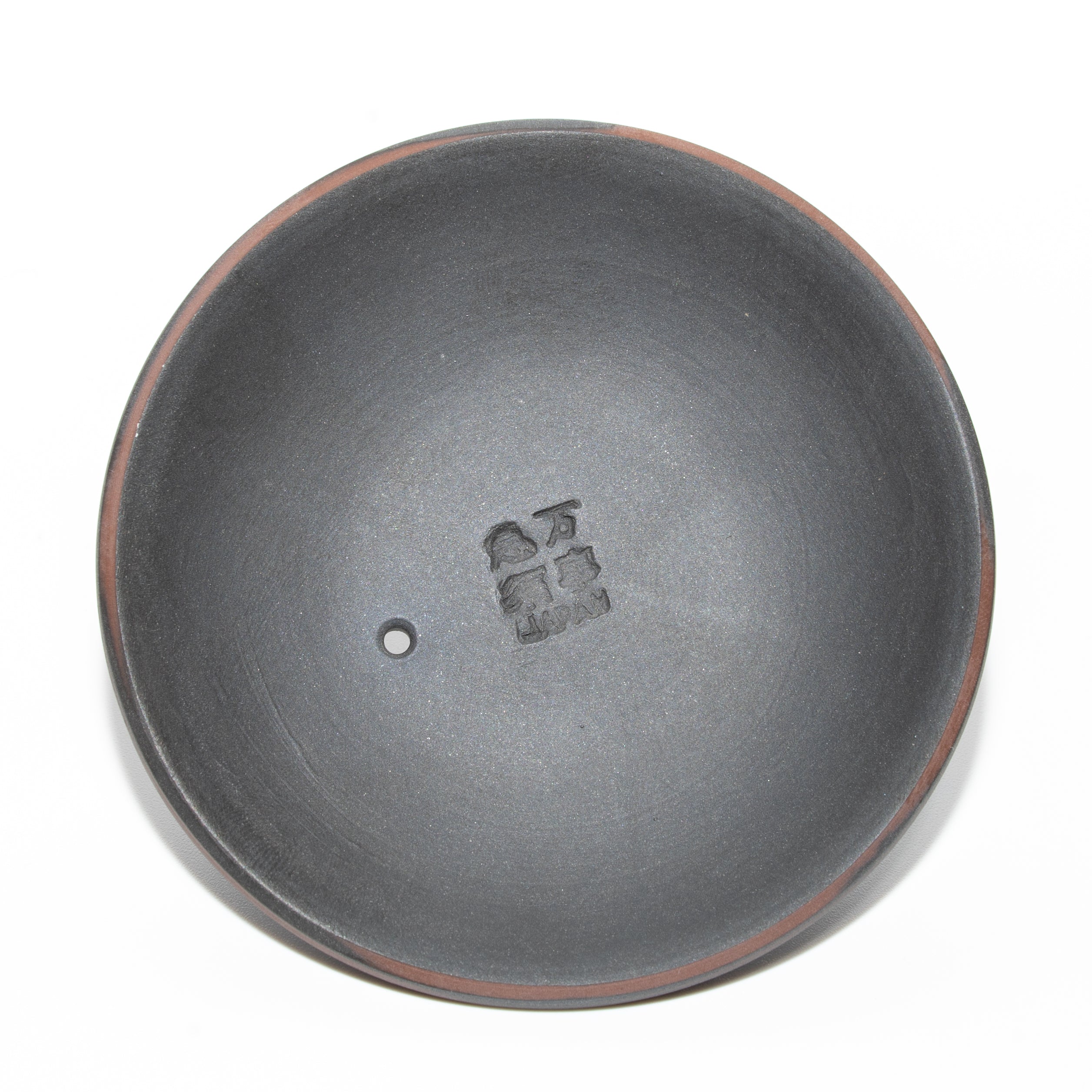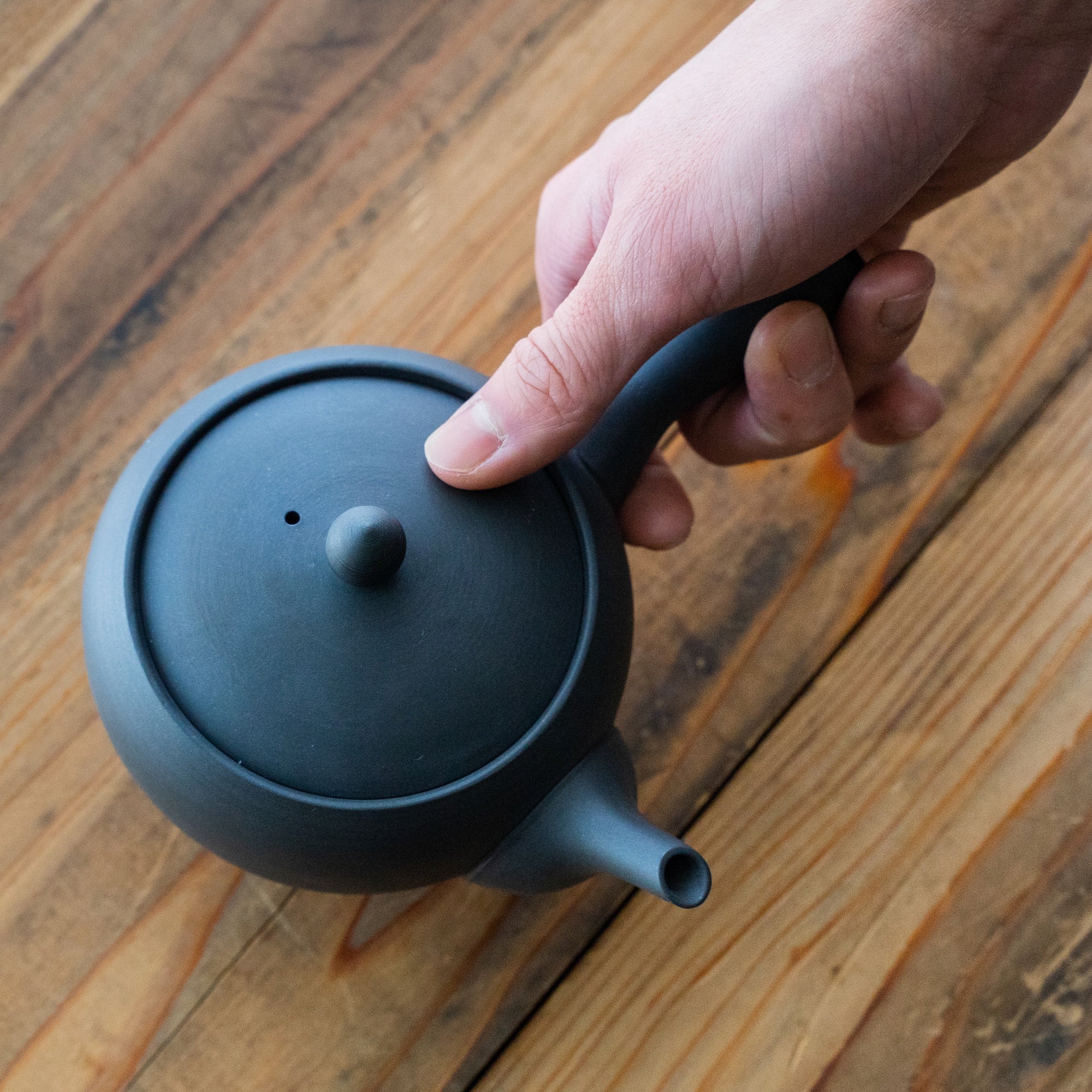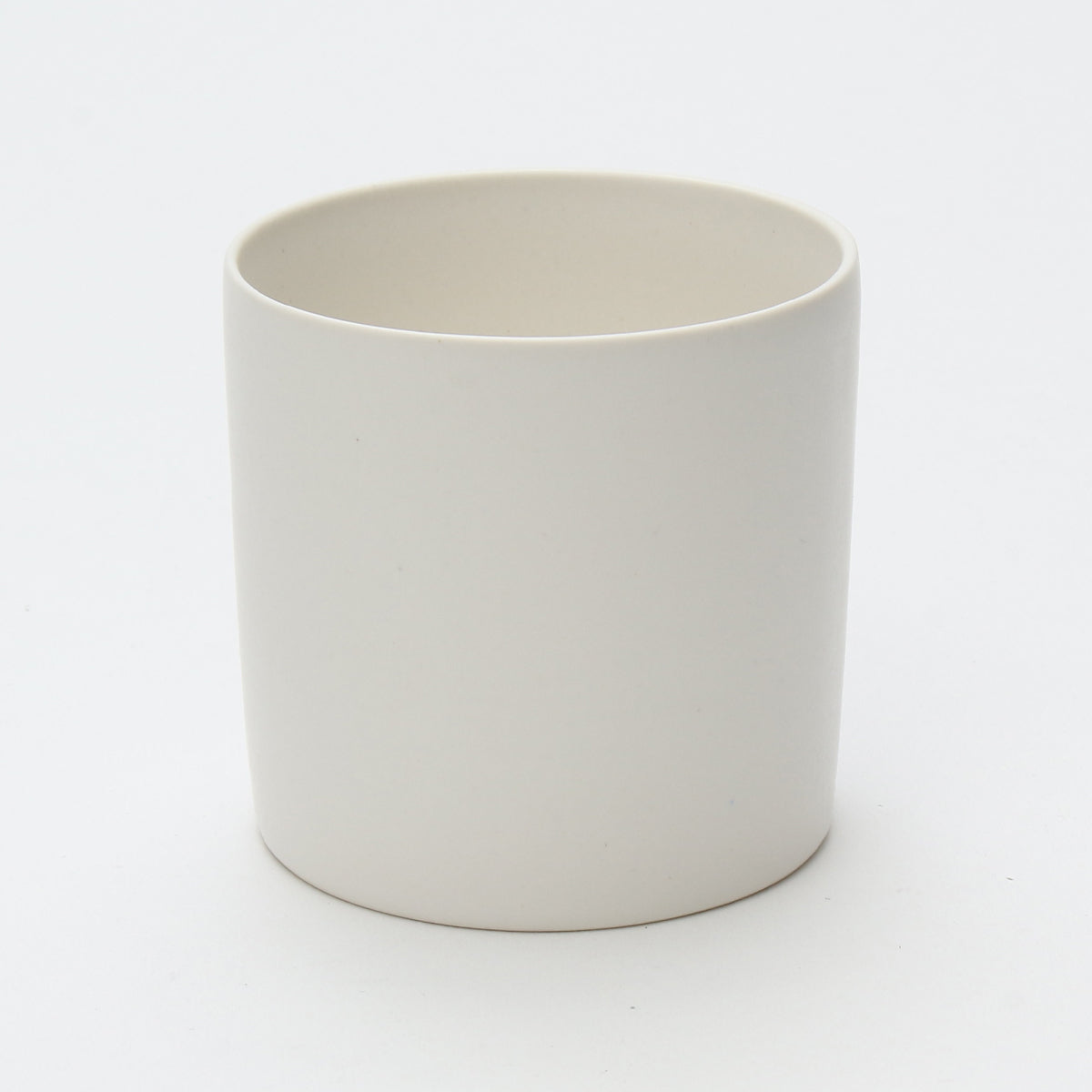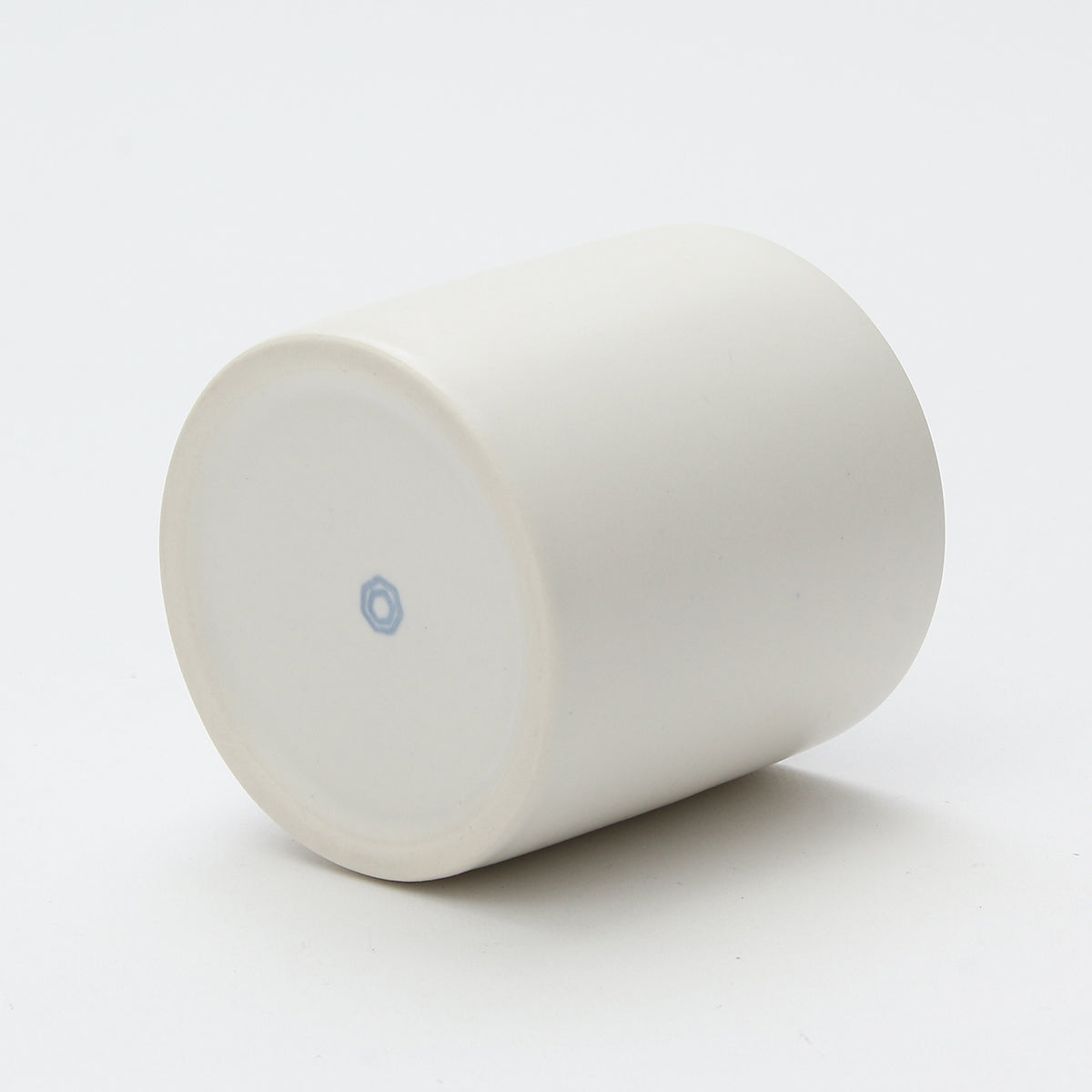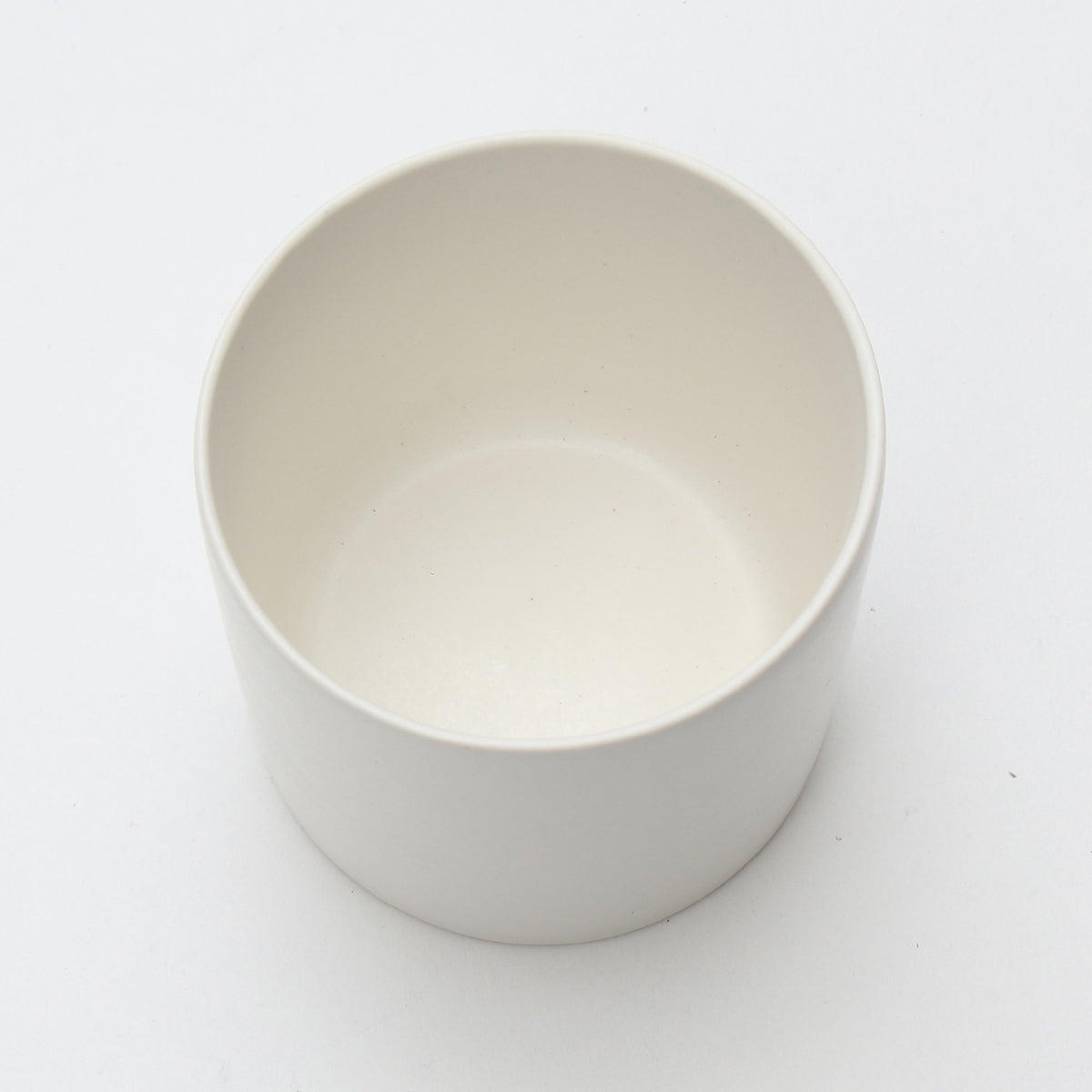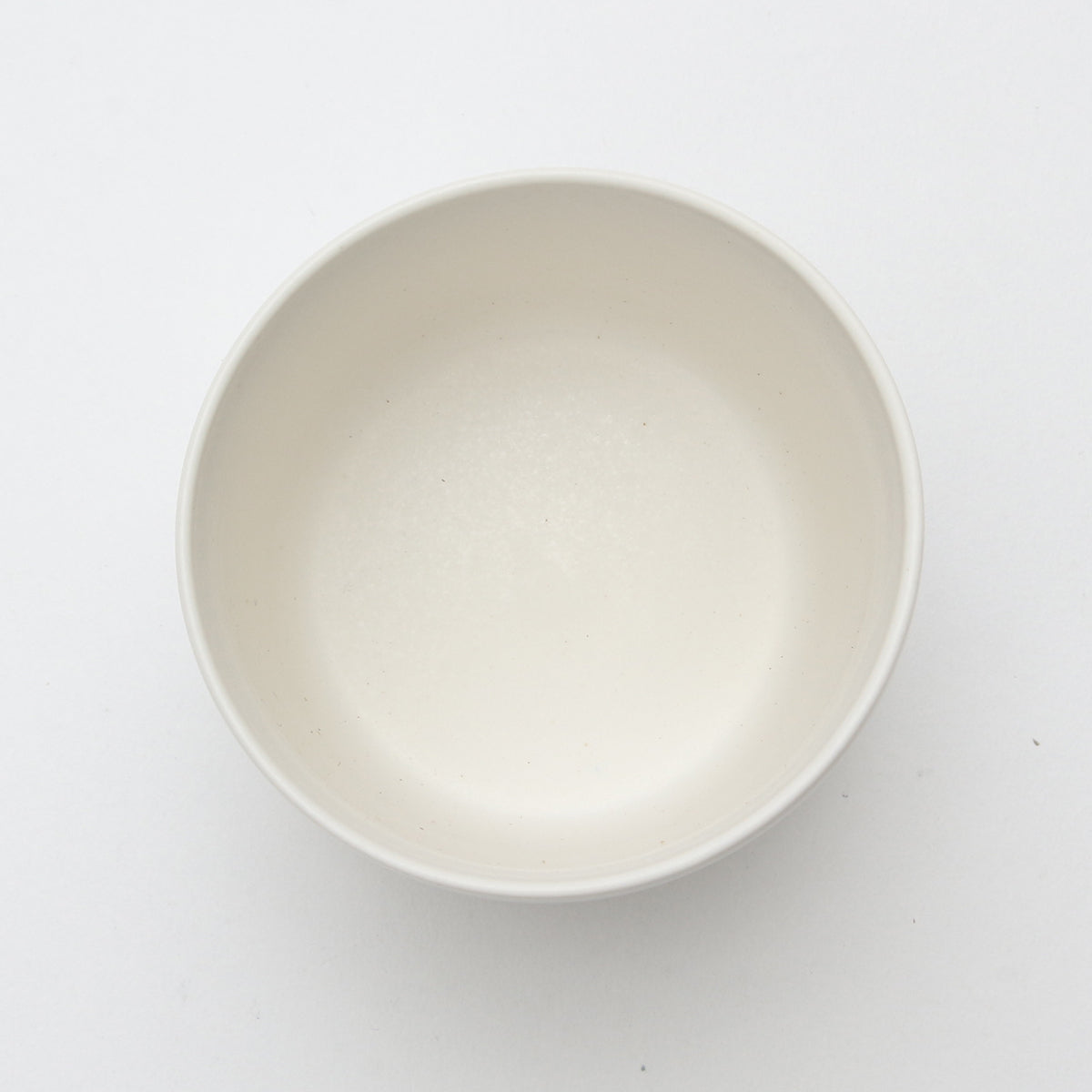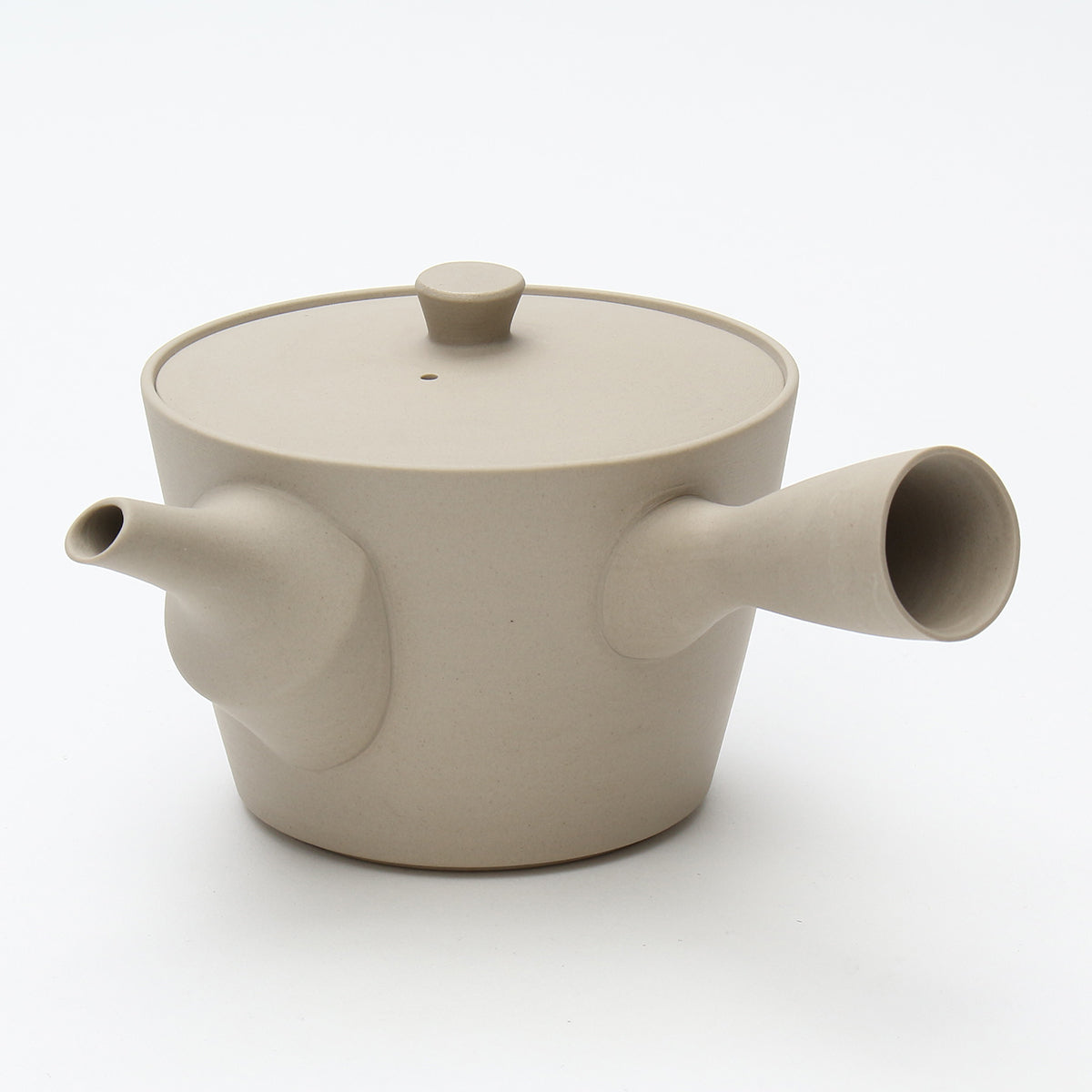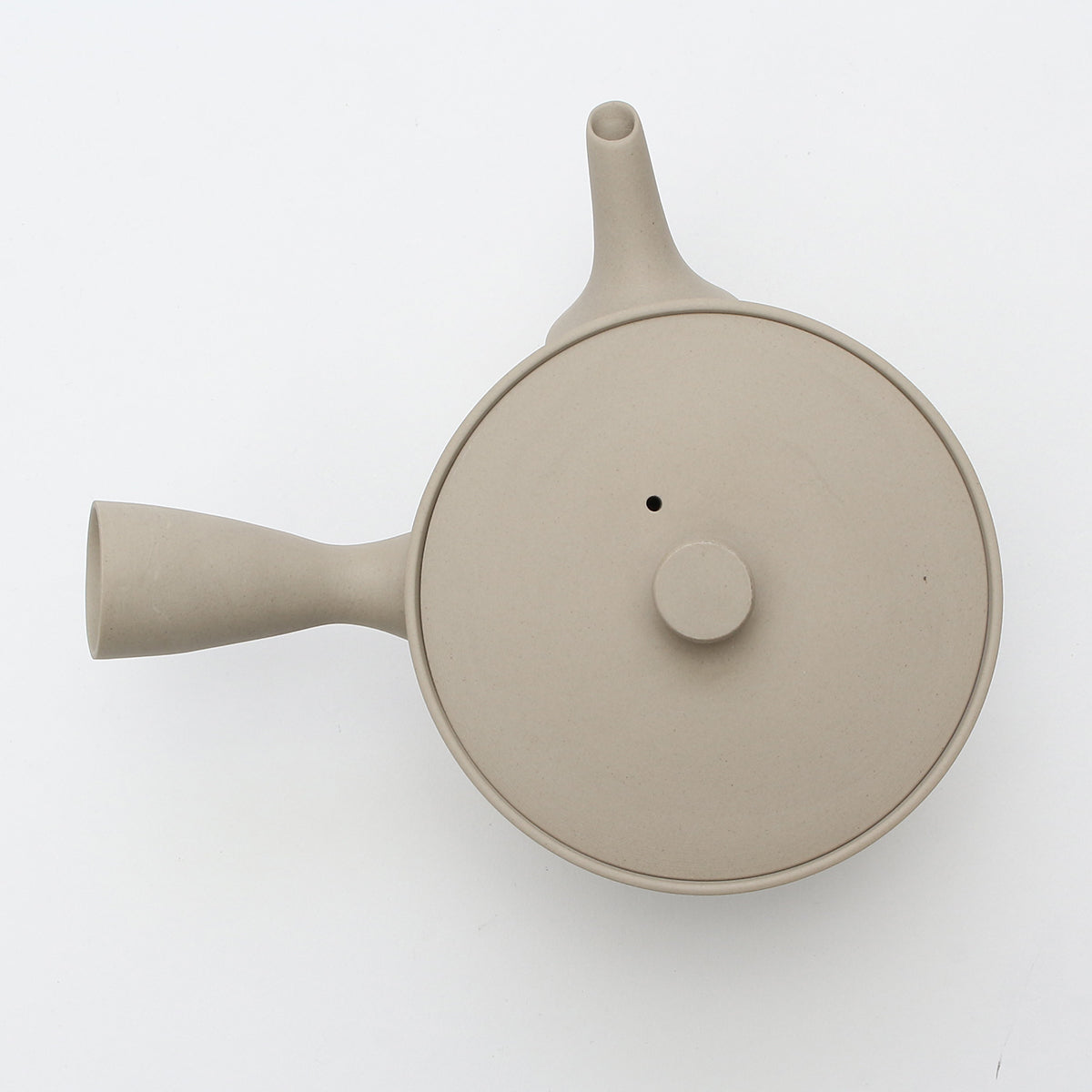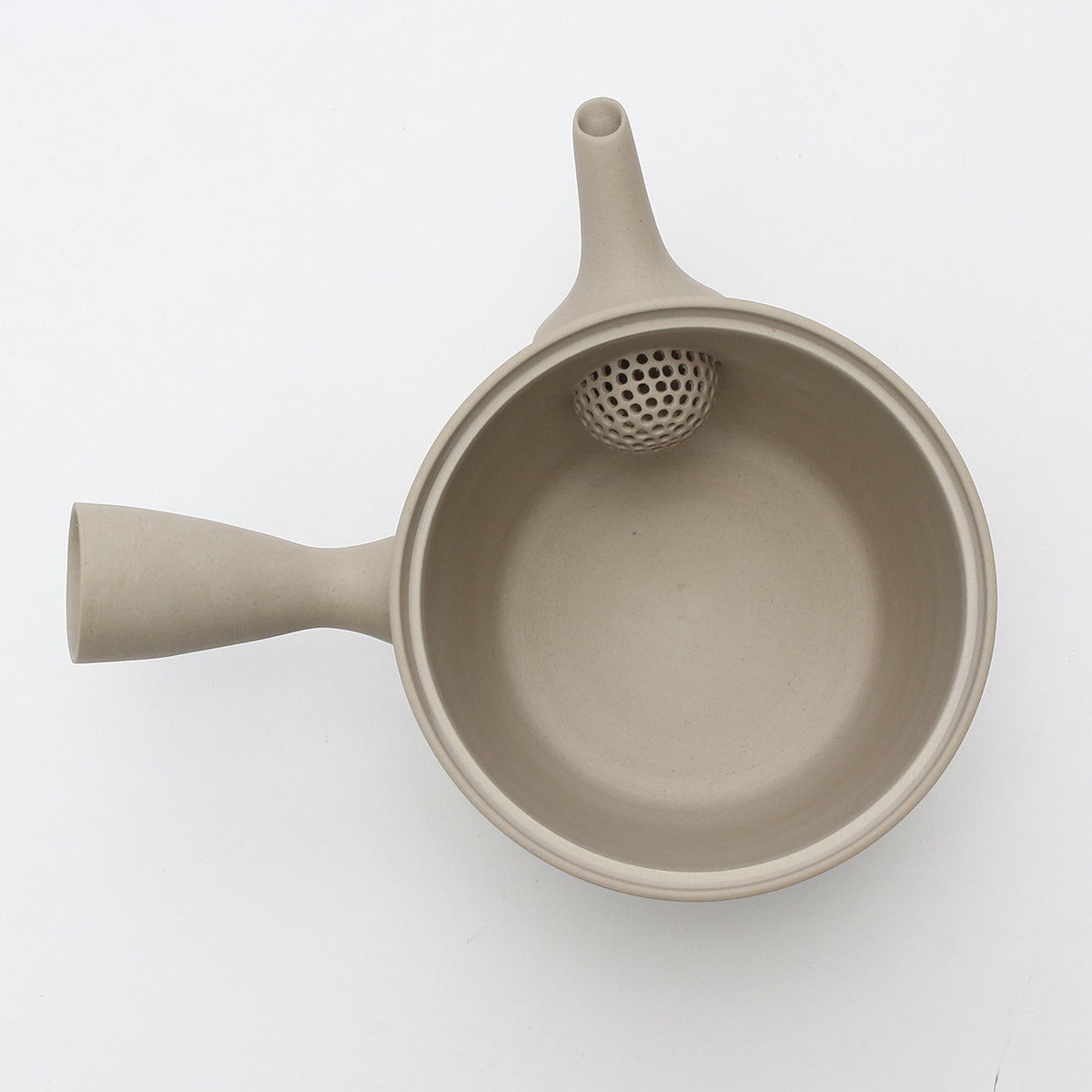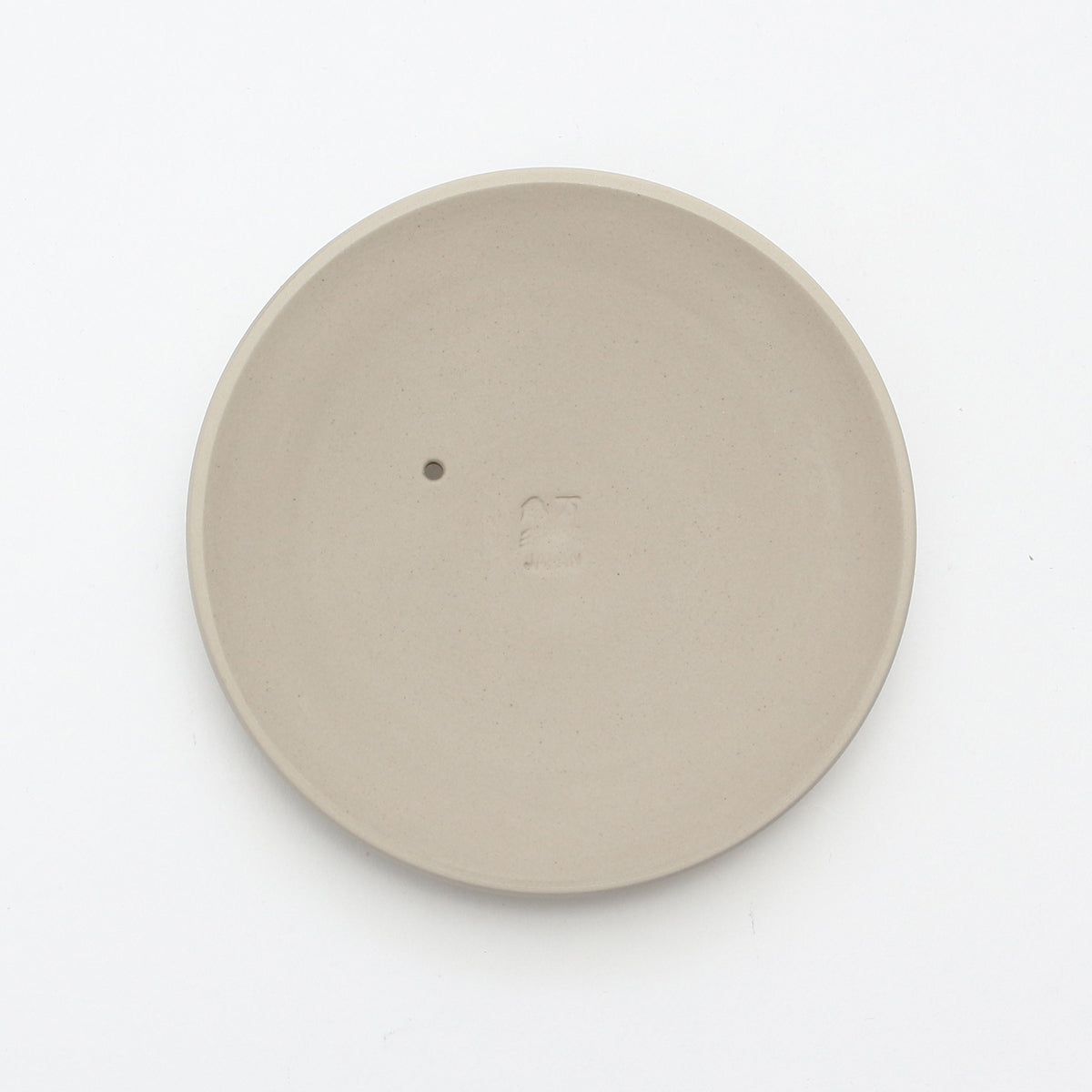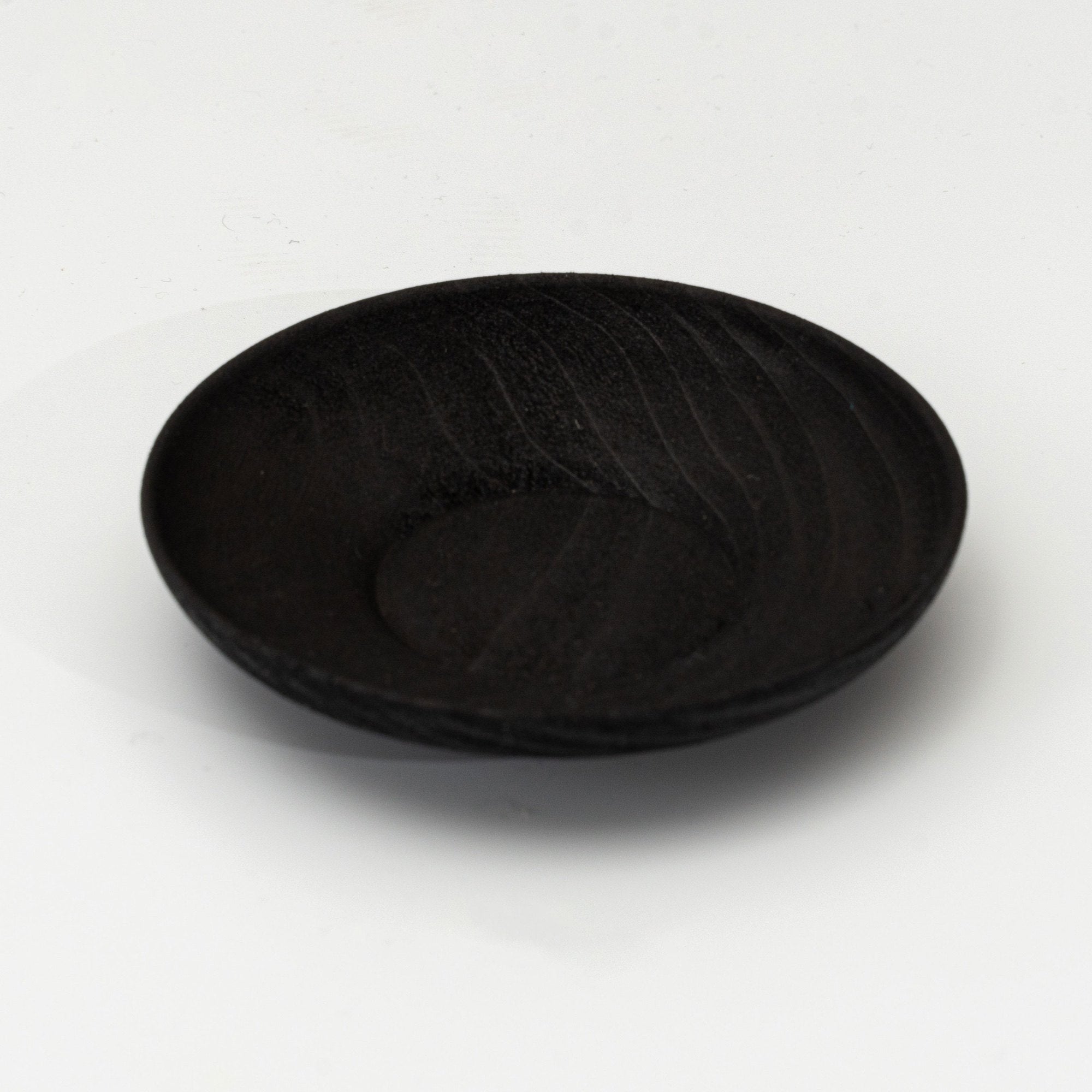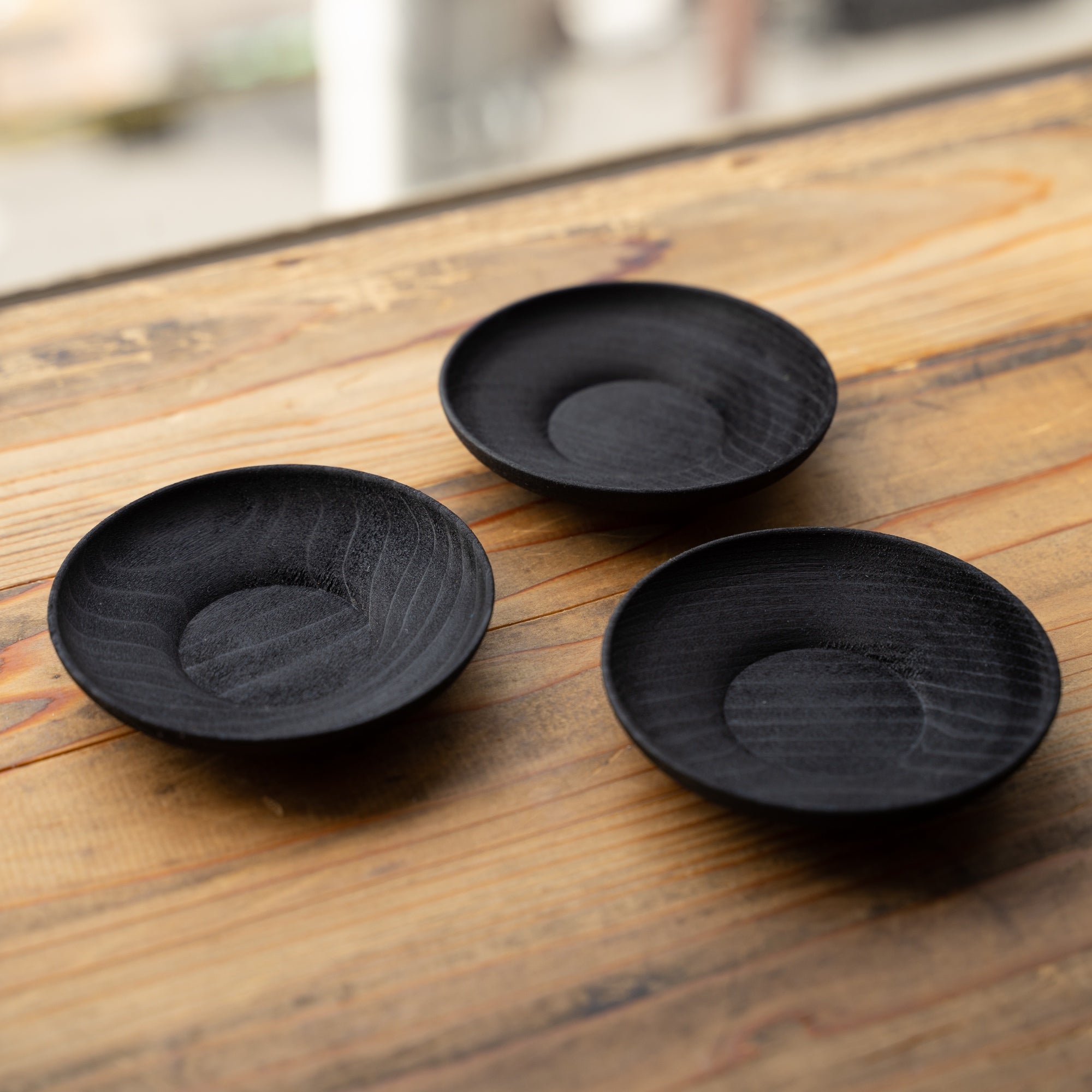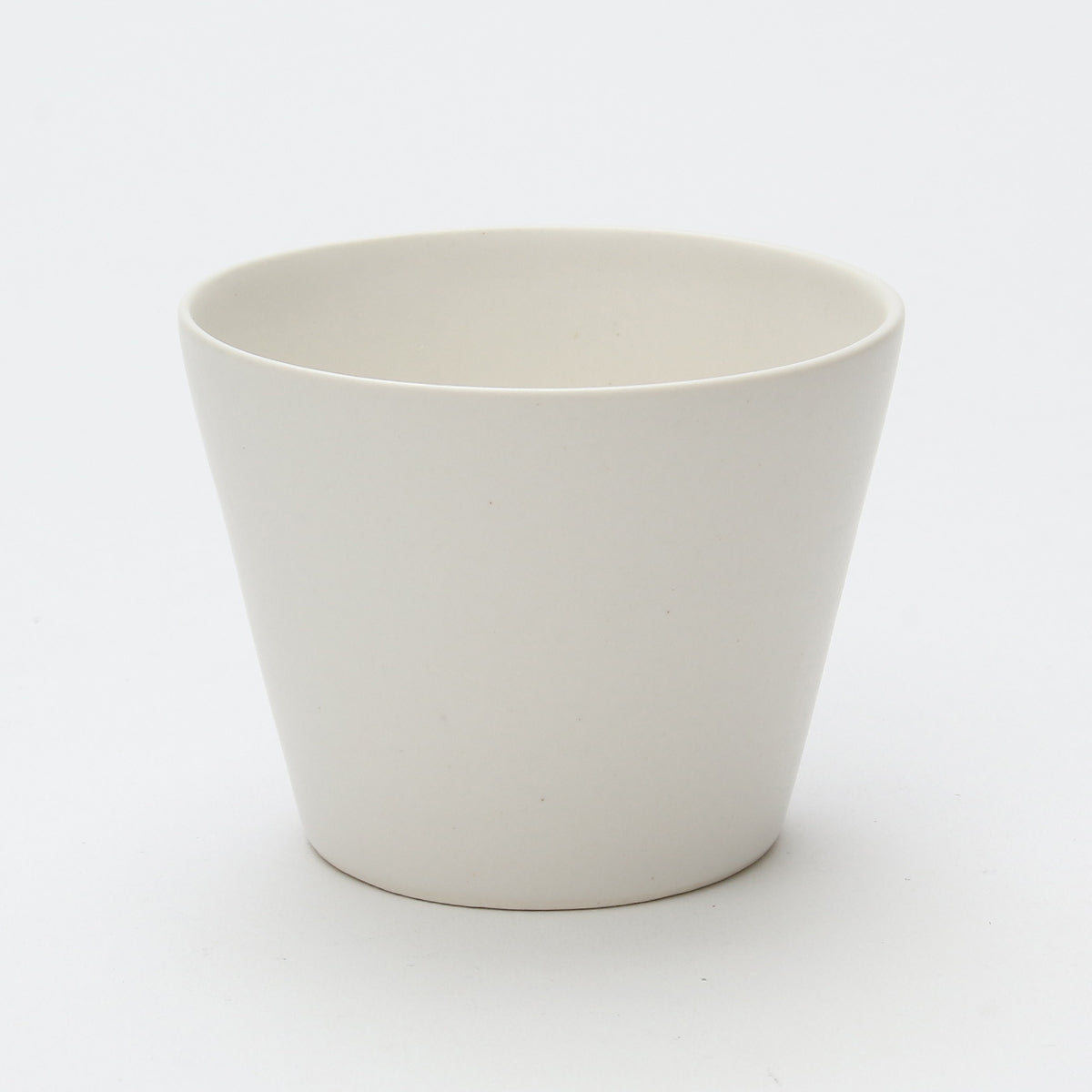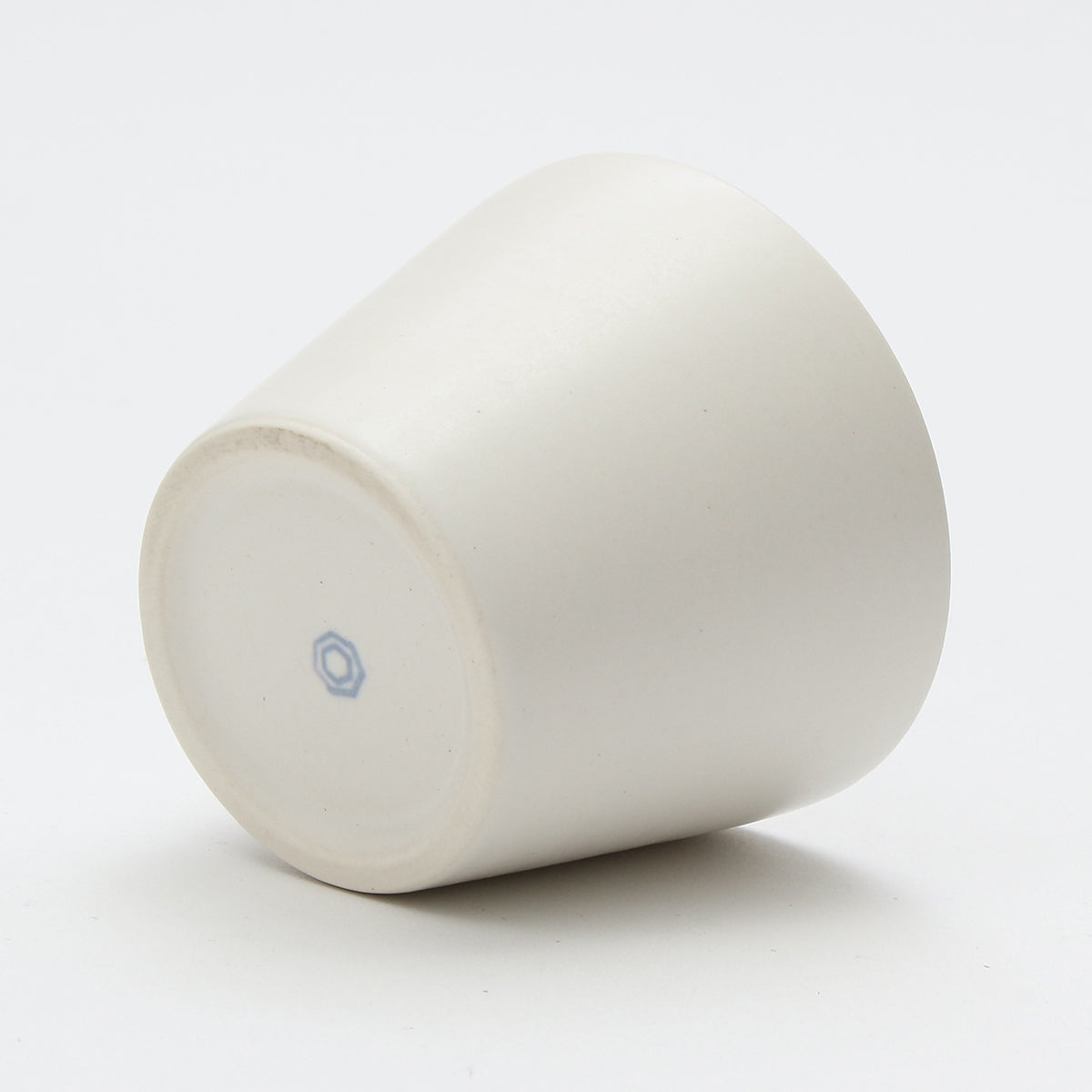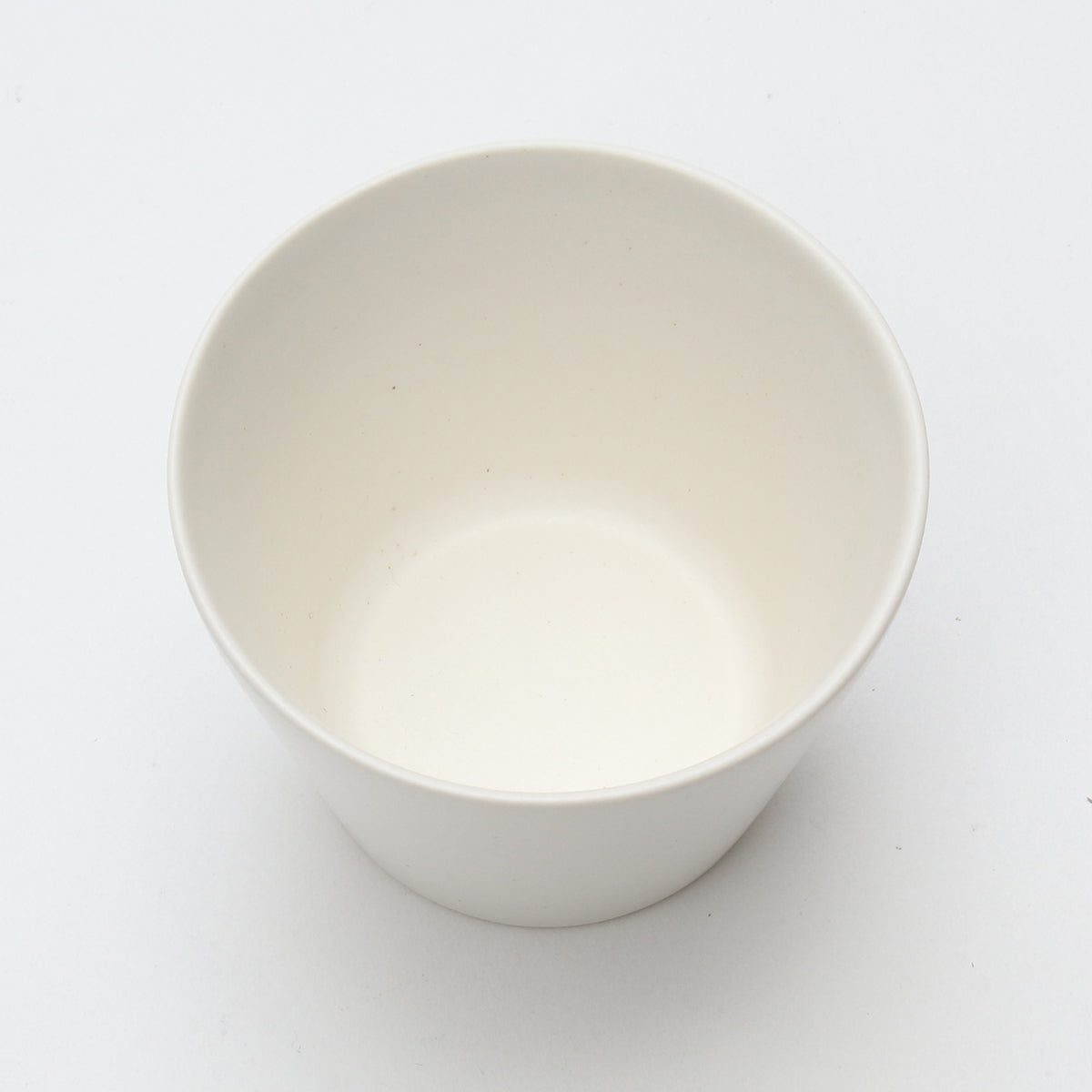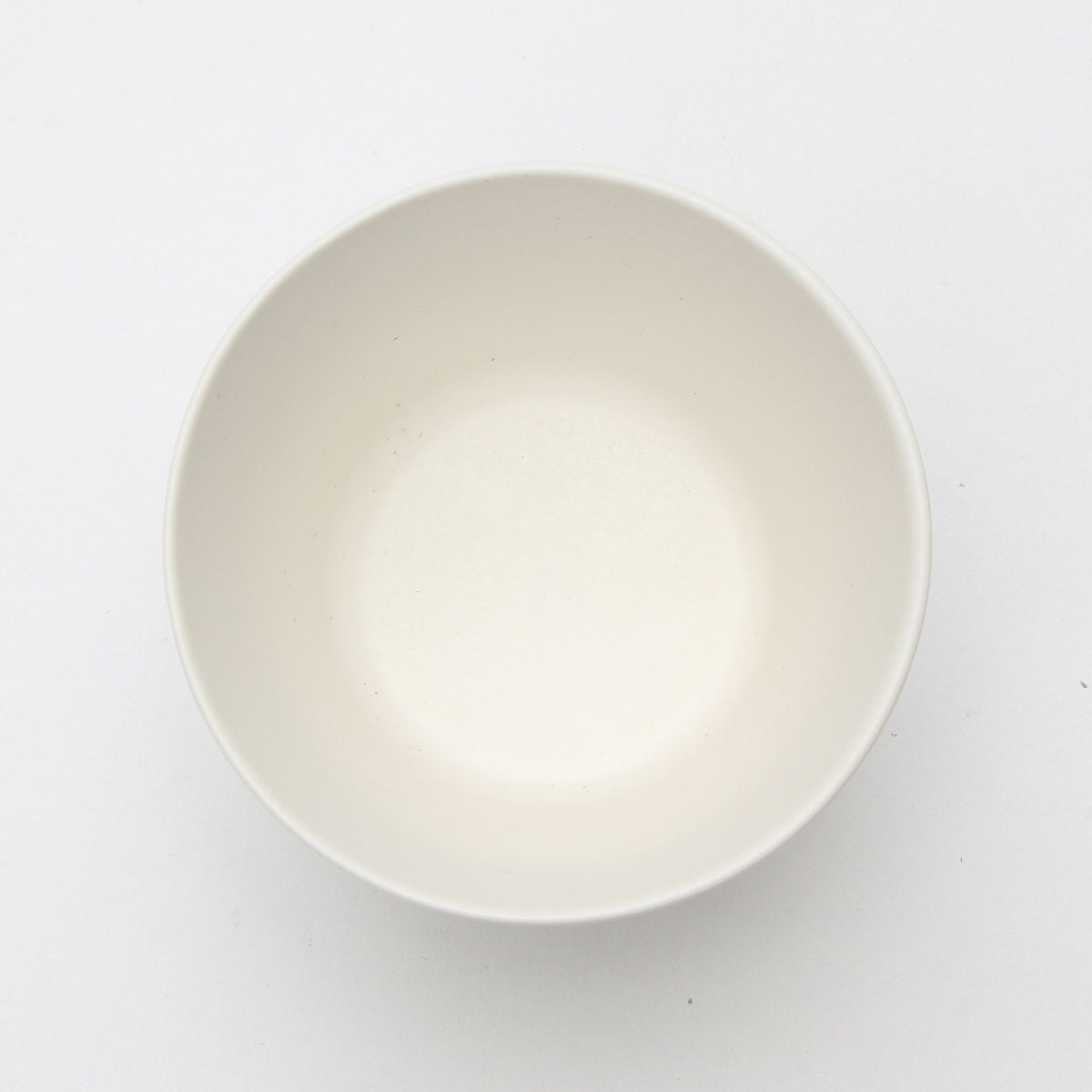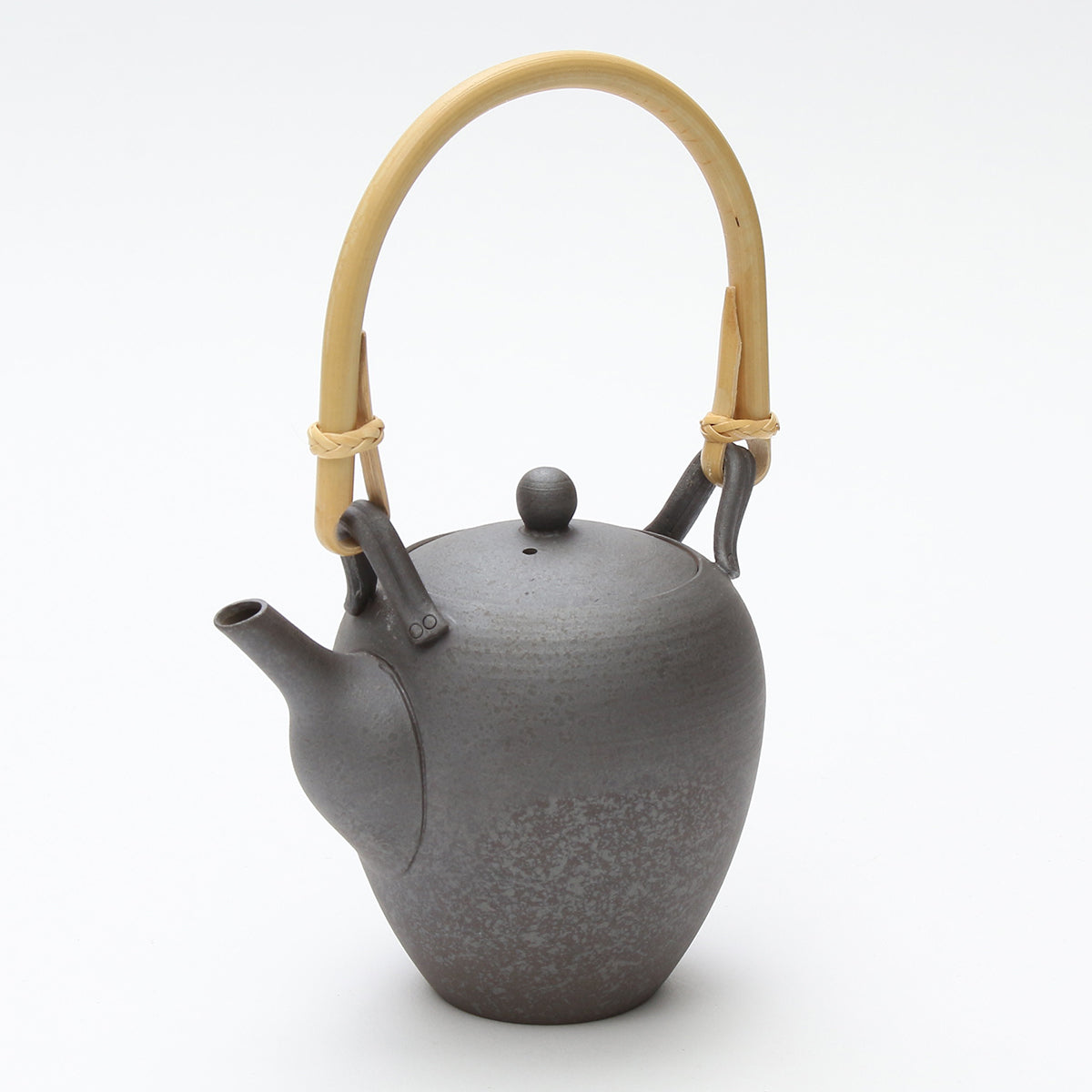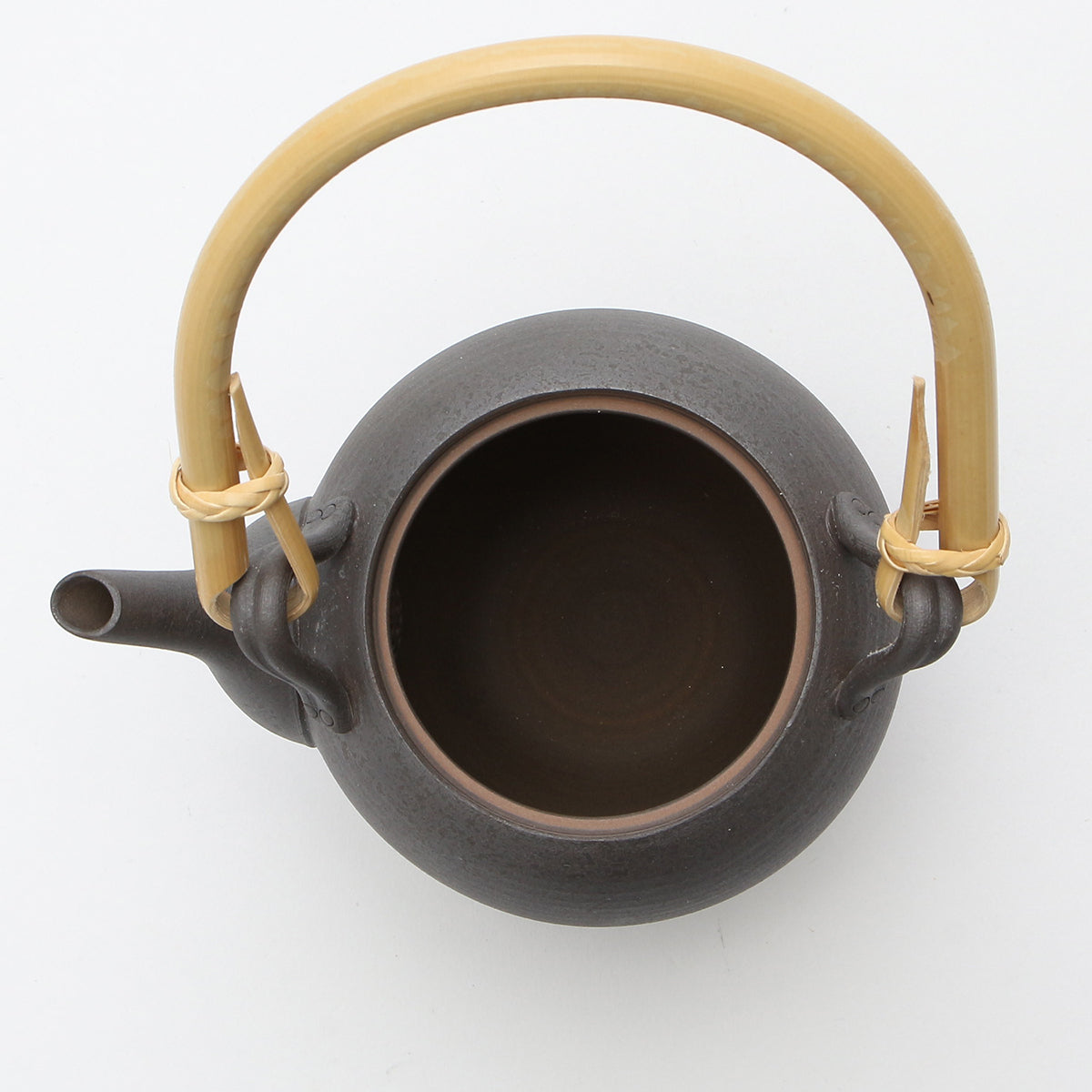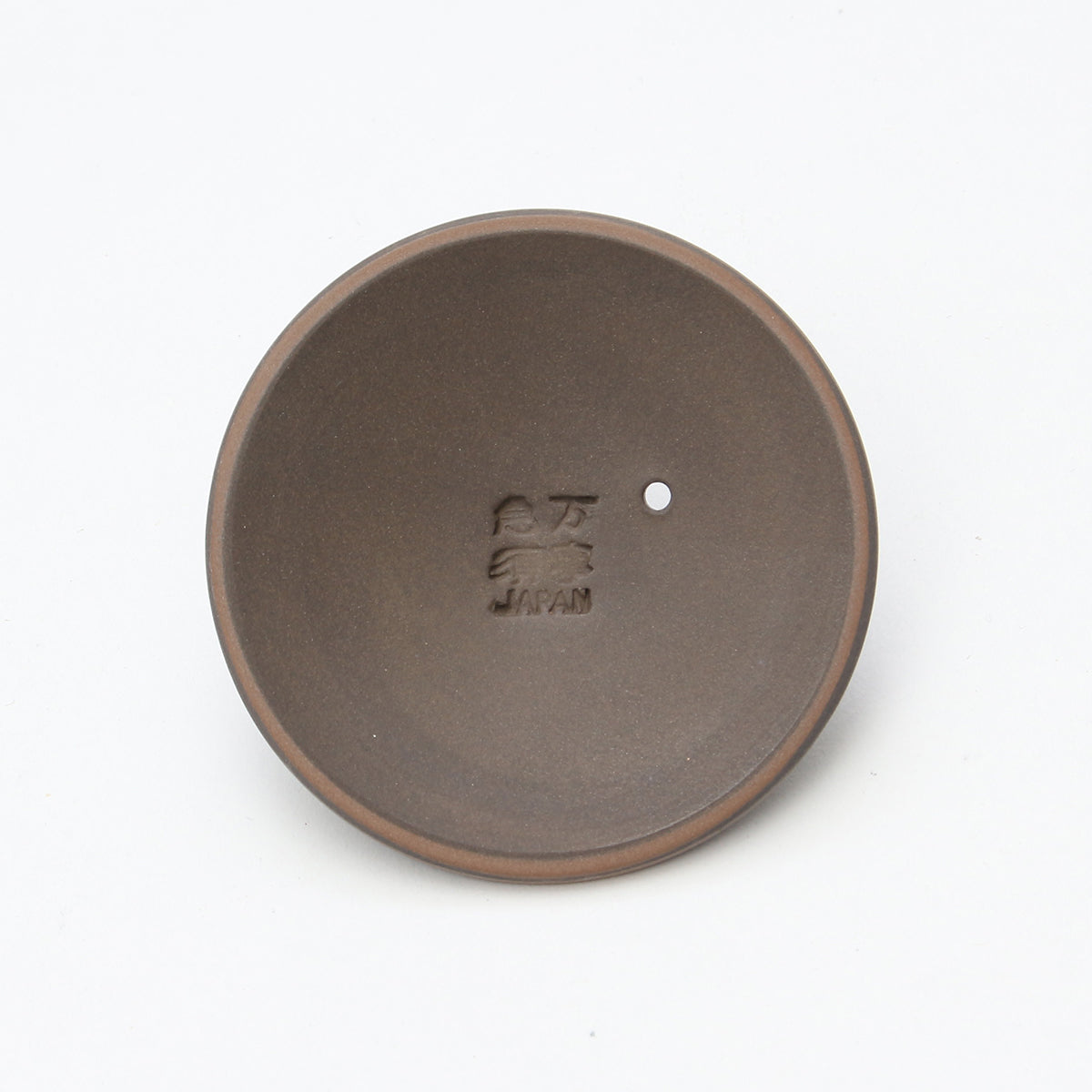“I could not find a teapot I wanted.”
His remark, although smooth, upset me inside. Perhaps you have seen their matte-textured and grayish black teapots at various lifestyle shops, whose items suggest better quality of life..
The words are by Teruhiko Araki, head of Nankei Pottery. His company produces simple and sophisticated teapots and tea utensils.
Why were the matte black teapots created?

Mr. Araki joined his family business about 30 years ago. “I have been seeing teapots more than normal people since I was small, but I could not find a teapot I wanted,” he said.
He spent 3–4 years on his research to make a teapot he would genuinely want. “Kuroneri,” Nankei Pottery’s iconic matte and black teapot, was created as a product of his passion that cast “his likes into shape.”
Mr. Araki explained that he liked a matte texture from the beginning. Without any specific image of a teapot he would want, he started producing a matte black one that utilized the color of original materials.

The color of Kuroneri is expressed by baking and tightening iron-rich clay in a kiln.
“The thrill of pottery is when you fire it. What you can control is what material you choose and what temperature you adjust to. In a kiln, pottery receives baptism from the god of fire. None can tell how it will appear until the kiln is opened. This last process is holy. I want to focus on it.”
This is how Nankei Pottery’s manufacturing goes on.
Nankei Pottery started by selling clay
It was in 1913 that the 5th head of Nankei Pottery, Teuhiko Araki’s grand-grandfather, started Nankei Pottery as a clay maker.

“They used to dig a nearby mountain and carry the soil with a cow carriage. To make the soil suitable clay for the rotation of a pottery wheel, they fined the soil on terraced fields and left it for some time. As a result, microbes increase to make it a suitable material for ceramic wares”
There were about 200 kilns in Yokkaichi City then. The demand for their clay was so high that they could sell it as much as they produced.
Nankei Pottery restarted as a teapot pottery in 1972. They have 50 types of teapots now on top of their old series.

They used to have as many as about 200 types before, which tells how extensive their business was. At present, they also deal with various OEM products in addition to Nankei Pottery’s original ones. You may actually own an eating utensil product with which Nankei Pottery has been involved.
Will soil for pottery run out some day?

In fact, the soil used for pottery is running out.
Suitable soil as a raw material for pottery is dug up and collected in the mountain. However, in recent years, mountains tend to be carved out to sell land for houses and commercial facilities rather than to sell soil. The clay used by Nankei Pottery was also on the verge of interruption.
Better soil used to be available, but now the volume of the soil used for pottery is decreasing. Their work is spending more time and cost on refining impure soil, which could not be used before for a commercial purpose, to make good soil.

Ceramics in our daily life are originally from the blessings of nature. Taking them as physical shapes makes us forget that they cannot even exist without nature.
Mie’s Banko-ware, not known even with third production volume
“I think only few people know how to read “萬古焼.” Our production area is so little known. Although it has the third largest production volume in Japanese pottery, nobody knows Banko-ware.” said Mr. Araki.
Trading companies and wholesalers had power in his area. Banko-ware production used to focus on OEM and private products to support the development of the pottery industry behind the scenes. The number of Banko-ware potteries decreased to one-fifth compared with the time when Mr. Araki joined his family business.
“A craftsman’s name is never shown for this production area,” lamented Mr. Araki.
However, it was the encounter with “”Banko-ware” that had awakened my interest in pottery producers.
The first teapot I picked up happened to be the one produced by Yumiko Iihoshi from Nankei Pottery.

Inside the teapot was a bookmark with instructions on Banko-ware.
The bookmark had Ms. Iihoshi’s wish saying “let’s support the unknown production area,” whose message reached my heart although it was the first teapot of my choice.
Although I had no opportunity to drink Japanese tea at home, the manufactured item attracted me so much that I purchased it on impulse. The handle was easy to hold. The texture was so smooth. Tea was easy to brew. Enchanted by its comfortable use every time, I have been using it habitually for many years.
Products that was “made because I wanted it”
Unlike unique pottery works of so-called “an artist’s design,” commercial mass-production requires construction of the manufacturing line that maintains a certain level of quality.
It was November, 2000 that their system became ready for commercial mass-production. The process toward it was never straight ahead.
You can find “Kuroneri” teapots at boutiques all over Japan now, but Mr. Araki’s initial intention was just for his personal use.
His friend, a famous department store’s buyer, found his teapot and pleaded to him to let them sell it. This was the first time when they accidentally faced the necessity of finding a way for mass production.
“It was so hard. We needed to reach the commercial level to serve customers. That’s one thing I said I would not sell our products.”
When Mr. Araki uses the word “product,” it implies a product with apparently opposing factors: the warmth that is felt for a product of an artist’s design and the stable quality for mass production.
Nowadays, not a few old makers produce new products to cater to modern values. On the other hand, Nankei Pottery is a good example where the sublimation of Mr. Araki’s passion for manufacturing corresponds to a modern and simple teapot needed by the public.
It’s interesting because you cannot do it. Why does Mr. Araki keep trying a new type of manufacturing?
Mr. Araki constantly has many visitors with a difficult issue that has been refused by other places. Those customers wish to sublimate their own image to a product.

“We confirm a project which has been refused by many other places,” said his wife, Rei, with a laugh. In response, Mr. Araki explained:
“I enjoy it the most to think about and do what they cannot do. It’s unlikely that I can realize all the requests by a client but there should be definitely a way to approach them. The process of thinking together and finding out what we can make is fun. Clients become happy when their ideas are cast into shape. I become happy with such an experience. Such a product will definitely make a big sale.”

According to him, it takes about a year to meet various requirements, such as staff’s skill level, to finalize a new product design and establish its production for commerce.

“It’s hard also for staff, and not profitable,” laughed Rei, who has been working together closely with her husband. “But we have accumulated various techniques to make difficult shapes,” she smiled.

”Honestly speaking, a maker wishes to keep doing the same thing forever. Because it is easy. But it’s not fun. If you want to do something enjoyable, you have to do hard things and things to do. Taking an easy way leads to declination. So I got to build a fire under myself. But I could not really do so. That’s why I decided to take any difficult issue when it comes.” laughed Mr. Araki.

While most of the potteries keep producing the same things every year, Nankei Pottery keeps launching 100 types of new products with a 2–3 year cycle.
Product whose usability and design stand together
Nankei Pottery’s goal is to make any product in a simple mannert. A teapot is a tool and it is tea leaf that is the main character. That’s why teapots should keep changing according to the evolution of tea leaves.
They pay a special attention to the size and fineness of a tea strainer to adjust them to the current generation’s needs. This attitude comes from their policy: Tea leaves choose a tea straining tool. “Now, more and more people choose single-origin tea leaves. So today’s tea strainers are designed for such leaves.”

I remember the time when I came across and bought a Nankei teapot on impulse, although I had no opportunity to drink Japanese tea at home that time. One thing that made my mind was that its lid pleasantly fit its body with perfection. Their hidden fastidiousness also lies there.

“We sharpen every teapot lid with a whetstone one by one. Rubbing each other makes higher sealability. Let alone the advantage of pouring tea without leakage, I wished a user would enjoy the action of the lid. This effort may be too much but we’d like to focus on these points. ”
Mr. Araki also shows outstanding preferences about a teapot spout. He creates the best shape by seeking the sharpness that allows the last one drop to be completely poured and the dripless balance.
What Mr. Araki cares the most about is compatibility between the usability as a tea drinking tool and the design that matches modern interior accessories.
Manufacturing triggered by “likes” wins hearts and minds
“If you do not like your own product, you cannot make a good sale . What we can do is to create what customers would like.”
Nankei Pottery gives shape only to what they genuinely want to make. To realize visions based on “likes,” they should have undergone more hardship than we would imagine.

Let me tell you an episode that shows how Nankei Pottery values “the feeling of likes.”
They had a university student who came for a factory tour. It is that student who is in charge of making pictures and text for their product catalog. They left the task entirely to the student, who passionately said to them “I want to make a catalog.”
“After all, the work you like is very powerful. A stronger passion makes different results. In such a sense, what you like tells you what you are meant to do...our business is basically based only on that feeling.”
The finalized product catalog shows full of distinctive love for Nankei Pottery.
Strong willingness connects people and tells the secret to create a product that makes our lives brighter.



